inbox and environment news: Issue 586
June 4 - 10 2023: Issue 586
World Environment Day 2023: Monday June 5 - Beat Plastic Pollution + 50th Anniversary Of World Environment Day
The theme for World Environment Day on 5 June 2023 will focus on solutions to plastic pollution under the campaign #BeatPlasticPollution.
The world is being inundated by plastic. More than 400 million tonnes of plastic is produced every year, half of which is designed to be used only once. Of that, less than 10 per cent is recycled. An estimated 19-23 million tonnes end up in lakes, rivers and seas. Today, plastic clogs our landfills, leaches into the ocean and is combusted into toxic smoke, making it one of the gravest threats to the planet.
Not only that, what is less known is that microplastics find their way into the food we eat, the water we drink and even the air we breathe. Many plastic products contain hazardous additives, which may pose a threat to our health.
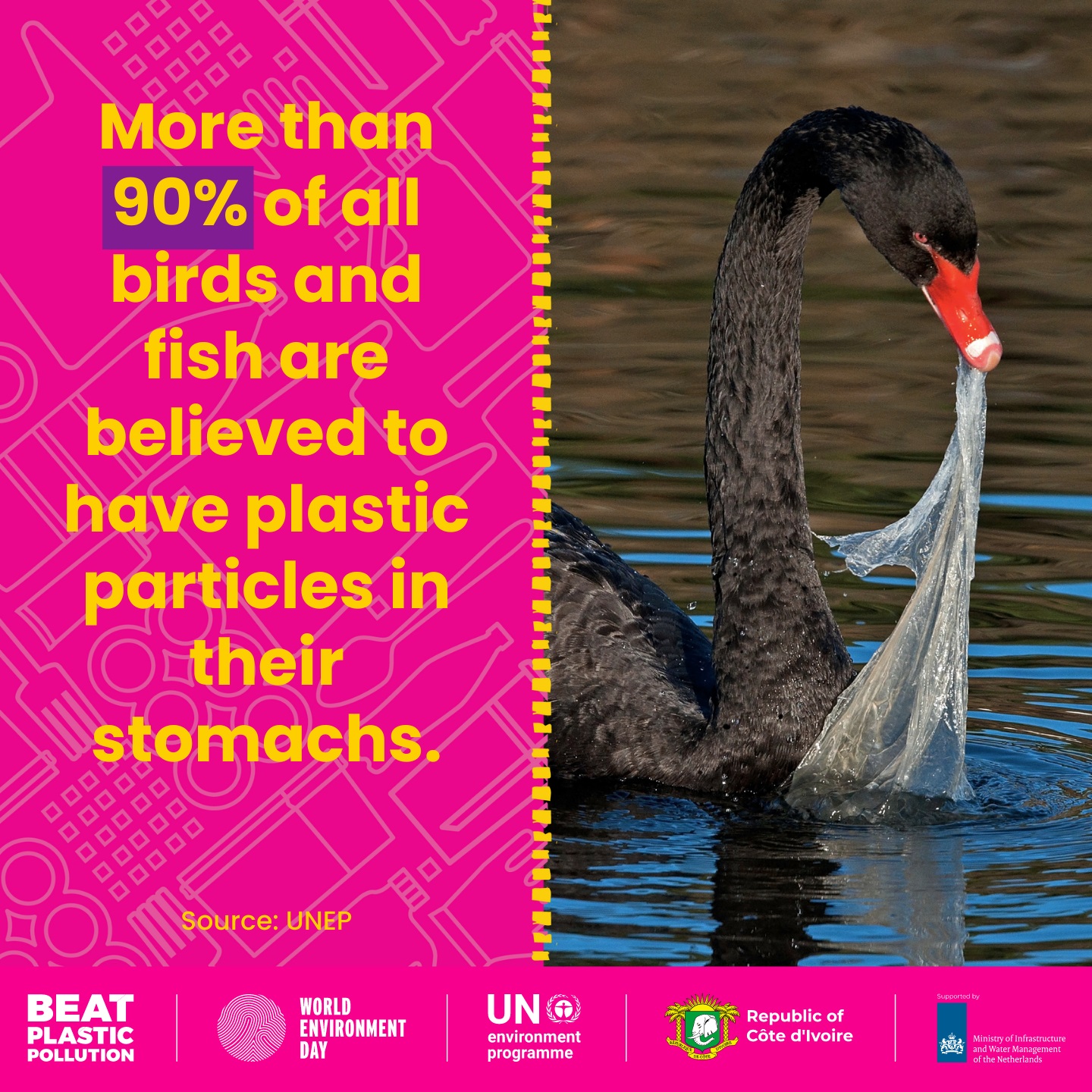
The good news is that we have science and solutions to tackle the problem – and a lot is already happening. What is needed most now is a surge of public and political pressure to scale up and speed actions from governments, companies and other stakeholders to solve this crisis. This underscores the importance of this World Environment Day mobilising action from every corner of the world.
World Environment Day 2023 will showcase how countries, businesses and individuals are learning to use the material more sustainably, offering hope that one day, plastic pollution will be history.
World Environment Day 2023 is hosted by Côte d'Ivoire in partnership with the Netherlands.
This year marks the 50th anniversary of World Environment Day, after it was established by the United Nations General Assembly in 1972. Over the past five decades, the day has grown to be one of the largest global platforms for environmental outreach. Tens of millions of people participate online and through in-person activities, events and actions around the world.
“The scourge of plastic pollution is a visible threat that impacts every community around the world," said Jean-Luc Assi, Côte d’Ivoire’s Minister for the Environment and Sustainable Development. “As host of World Environment Day 2023, we welcome all sectors, from governments and businesses to civil society, to come together to find and champion solutions.”
Côte d'Ivoire has banned the use of plastic bags since 2014, supporting a shift to reusable packaging. The country’s largest city, Abidjan, has also become a hub for start-ups looking to beat plastic pollution.
More than 400 million tonnes of plastic is produced every year worldwide, half of which is designed to be used only once. Of that, less than 10 per cent is recycled. An estimated 19-23 million tonnes end up in lakes, rivers and seas annually.
Microplastics – tiny plastic particles up to 5mm in diameter – find their way into food, water and air. Discarded or burnt single-use plastic harms human health and biodiversity and pollutes every ecosystem from mountain tops to the ocean floor.
With available science and solutions to tackle the problem, governments, companies and other stakeholders must scale up and speed actions to solve this crisis. This underscores the importance of this World Environment Day in mobilising transformative action from every corner of the world.
This year’s World Environment Day will be supported by the Government of the Netherlands, which is one of the countries taking ambitious action along the plastic lifecycle. It is a signatory of the New Plastics Economy Global Commitment and a member of the Global Partnership on Plastic Pollution and Marine Litter. It is also a member of the High Ambition Coalition calling for a strong and ambitious international legally binding instrument to combat plastic pollution.
“Plastic pollution and its detrimental impacts on health, the economy and the environment cannot be ignored. Urgent action is required. At the same time, we need true, effective and robust solutions,” said Vivianne Heijnen, Netherlands’ Minister for the Environment. “As part of several policies aimed at plastics, The Netherlands and the European community at large are fully committed to reduce the production and consumption of single-use plastic, which can and must be replaced with durable and sustainable alternatives.”
The announcement follows a resolution adopted in 2022 at the United Nations Environment Assembly to develop a legally binding instrument on plastic pollution, including in the marine environment, with the ambition to complete the negotiations by end of 2024. The first meeting of the Intergovernmental Negotiating Committee (INC-1) was held in Uruguay in December and the second meeting is expected to be held in Paris in 2023. The instrument is to be based on a comprehensive approach that addresses the full life cycle of plastic.
“We must seize every opportunity and engage with every stakeholder to deal with the plastics problem in its entirety,” said Inger Andersen, UNEP’s Executive Director. “Côte d’Ivoire and the Netherlands are among a number of countries rising to this challenge and embracing the benefits of a circular plastics economy. The commemoration of the 50th World Environment Day is a moment for all governments, businesses, community groups, and individuals to join this drive.”
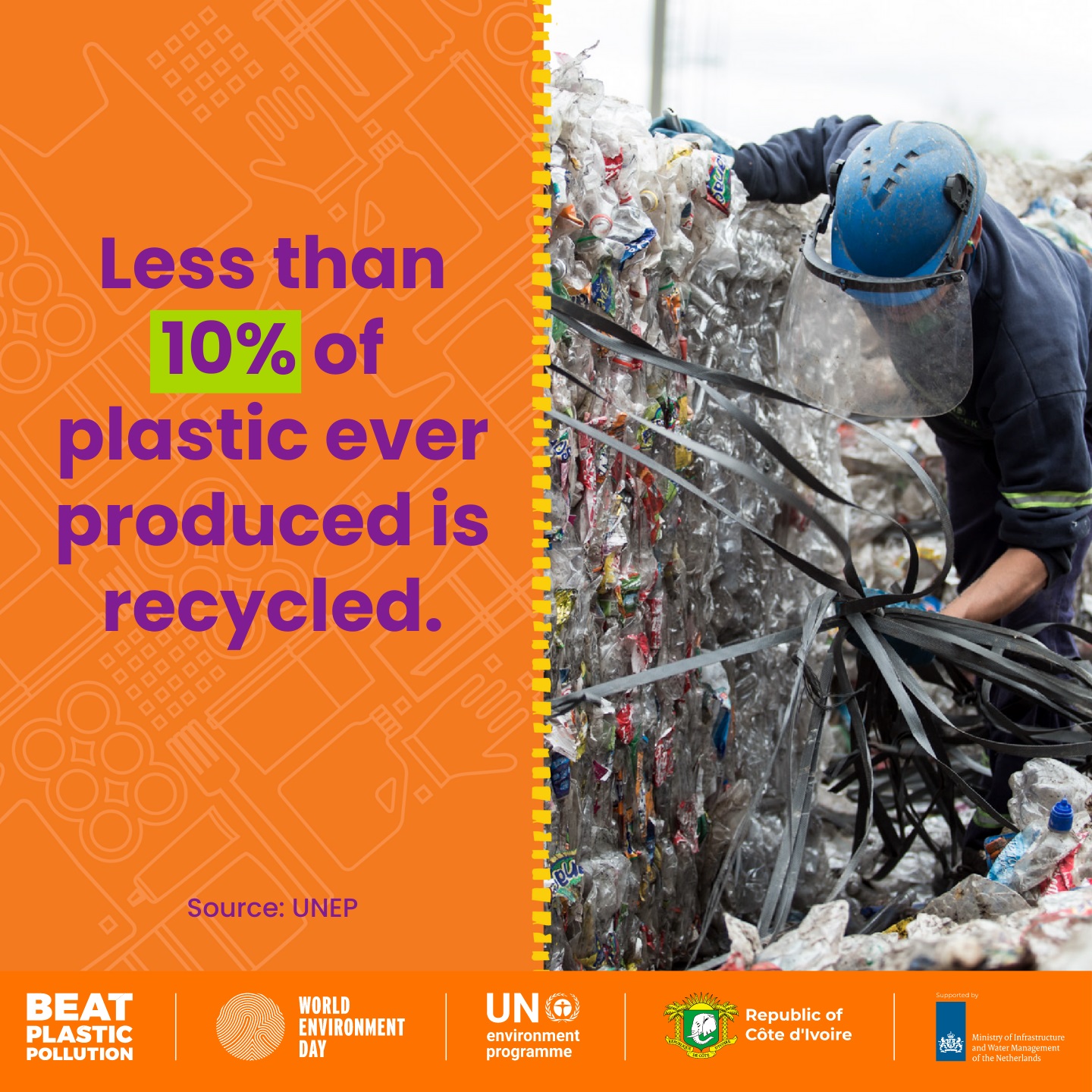
UN Roadmap Outlines Solutions To Cut Global Plastic Pollution
Plastic pollution could reduce by 80 per cent by 2040 if countries and companies make deep policy and market shifts using existing technologies, according to a new report by UN Environment Programme (UNEP). The report was released ahead of a second round of negotiations in Paris on a global agreement to beat plastic pollution, and outlines the magnitude and nature of the changes required to end plastic pollution and create a circular economy.
Turning off the Tap: How the world can end plastic pollution and create a circular economy is a solutions-focused analysis of concrete practices, market shifts, and policies that can inform government thinking and business action.
“The way we produce, use and dispose of plastics is polluting ecosystems, creating risks for human health and destabilizing the climate,” said Inger Andersen, UNEP Executive Director. “This UNEP report lays out a roadmap to dramatically reduce these risks through adopting a circular approach that keeps plastics out of ecosystems, out of our bodies and in the economy. If we follow this roadmap, including in negotiations on the plastic pollution deal, we can deliver major economic, social and environmental wins.”
Market shifts needed for the market transformation toward circularity
To slash plastic pollution by 80 per cent globally by 2040, the report suggests first eliminating problematic and unnecessary plastics to reduce the size of the problem. Subsequently, the report calls for three market shifts – reuse, recycle and reorient and diversify products:
- Reuse: Promoting reuse options, including refillable bottles, bulk dispensers, deposit-return-schemes, packaging take-back schemes etc., can reduce 30 per cent of plastic pollution by 2040. To realize its potential, governments must help build a stronger business case for reusables.
- Recycle: Reducing plastic pollution by an additional 20 per cent by 2040 can be achieved if recycling becomes a more stable and profitable venture. Removing fossil fuels subsidies, enforcing design guidelines to enhance recyclability, and other measures would increase the share of economically recyclable plastics from 21 to 50 per cent.
- Reorient and diversify: Careful replacement of products such as plastic wrappers, sachets and takeaway items with products made from alternative materials (such as paper or compostable materials) can deliver an additional 17 per cent decrease in plastic pollution.
Even with the measures above, 100 million metric tons of plastics from single-use and short-lived products will still need to be safely dealt with annually by 2040 – together with a significant legacy of existing plastic pollution. This can be addressed by setting and implementing design and safety standards for disposing of non-recyclable plastic waste, and by making manufacturers responsible for products shedding microplastics, among others.
Overall, the shift to a circular economy would result in USD 1.27 trillion in savings, considering costs and recycling revenues. A further USD 3.25 trillion would be saved from avoided externalities such as health, climate, air pollution, marine ecosystem degradation, and litigation-related costs. This shift could also result in a net increase of 700,000 jobs by 2040, mostly in low-income countries, significantly improving the livelihoods of millions of workers in informal settings.
Investment costs for the recommended systemic change are significant, but below the spending without this systemic change: USD 65 billion per year as opposed to USD 113 billion per year. Much of this can be mobilized by shifting planned investments for new production facilities – no longer needed through reduction in material needs – or a levy on virgin plastic production into the necessary circular infrastructure. Yet time is of the essence: a five-year delay may lead to an increase of 80 million metric tons of plastic pollution by 2040.
The highest costs in both a throwaway and circular economy are operational. With regulation to ensure plastics are designed to be circular, Extended Producer Responsibility (EPR) schemes can cover these operational costs of ensuring the system’s circularity through requiring producers to finance the collection, recycling and responsible end-of-life disposal of plastic products.
Internationally agreed policies can help overcome the limits of national planning and business action, sustain a flourishing circular global plastics economy, unlock business opportunities and create jobs. These may include agreed criteria for plastic products that could be banned, a cross-border knowledge baseline, rules on necessary minimum operating standards of EPR schemes and other standards.
The report recommends that a global fiscal framework could be part of international policies to enable recycled materials to compete on a level playing field with virgin materials, create an economy of scale for solutions, and establish monitoring systems and financing mechanisms.
Crucially, policymakers are encouraged to embrace an approach that integrates regulatory instruments and policies tackling actions across the life cycle, as these are mutually reinforcing towards the goal of transforming the economy. For example, design rules to make products economically recyclable can be combined with targets to incorporate recycled content and fiscal incentives for recycling plants.
The report also addresses specific policies, including standards for design, safety, and compostable and biodegradable plastics; targets for minimum recycling; EPR schemes; taxes; bans; communication strategies; public procurement, and labelling.
About the UN Environment Programme (UNEP)
UNEP is the leading global voice on the environment. It provides leadership and encourages partnership in caring for the environment by inspiring, informing and enabling nations and peoples to improve their quality of life without compromising that of future generations.
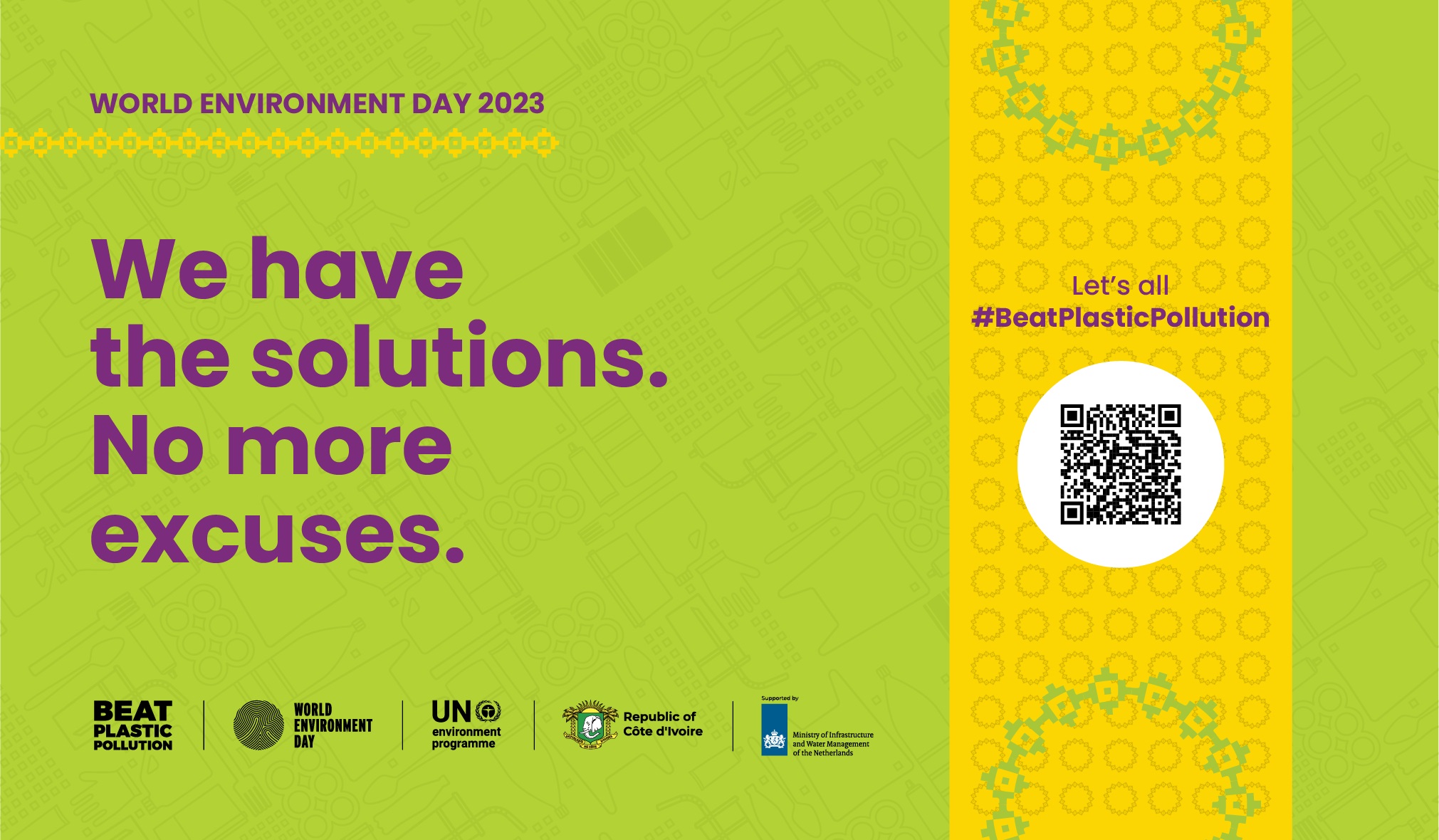
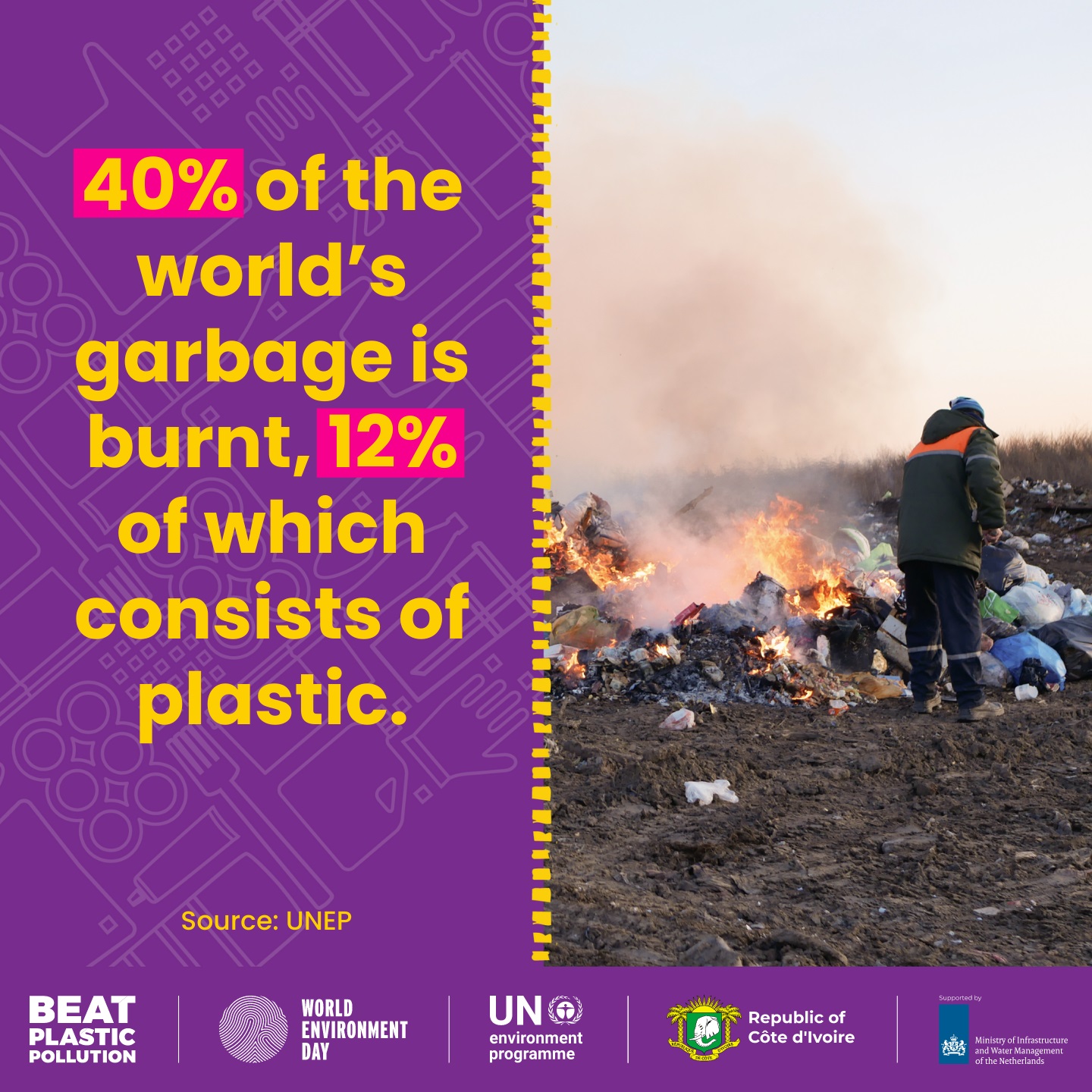
Avalon Dunes Bushcare: June 2023
Our war on weeds on the Avalon Dunes continues this Sunday, June 4 2023. Meet 8.30 near the Montessori School off Tasman Rd North Avalon. We finish at 11.30 but any time you can spare is great. Morning Tea, cake and Tools provided, BYO gardening gloves.
We meet on the first Sunday of each month at 8.30am
Facebook page for Avalon Dunes Bushcare where you can keep up to date with progress and find out how to get involved.
Visit: www.facebook.com/AvalonDunesBushcare
Photo: Salt tolerant tree Coast Banksia is in flower now. Unlike most Banksias, it sheds its seeds every summer, not relying on fire to open its seed capsules.
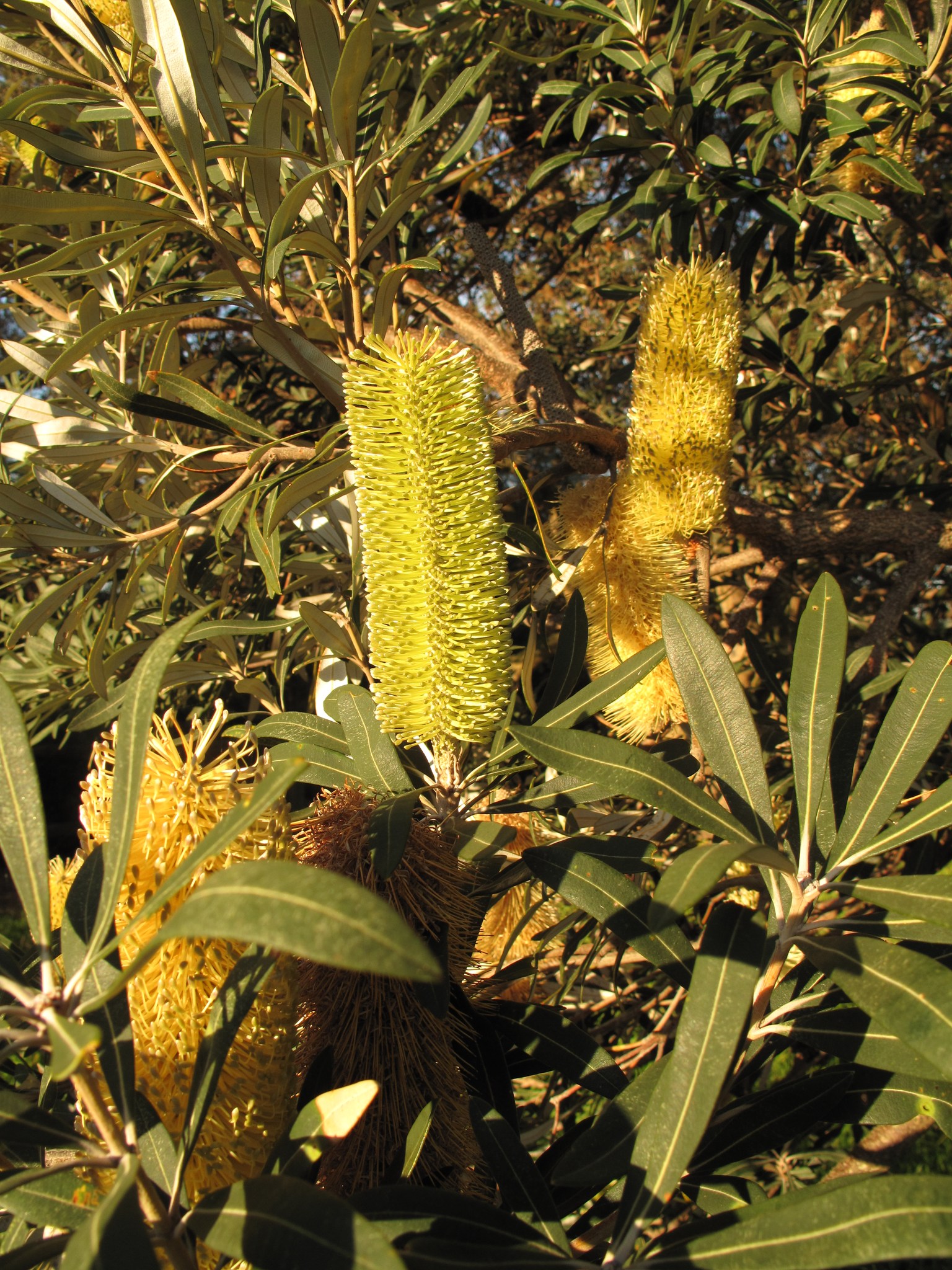
Shelly Beach Echidna
Photos by Kevin Murray, taken late May 2023 who said, ''he/she was waddling across the road on the Shelly Beach headland, being harassed not so much by the bemused tourists, but by the Brush Turkeys who are plentiful there.''
Shelly Beach is located in Manly and forms part of Cabbage Tree Bay, a protected marine reserve which lies adjacent to North Head and Fairy Bower.
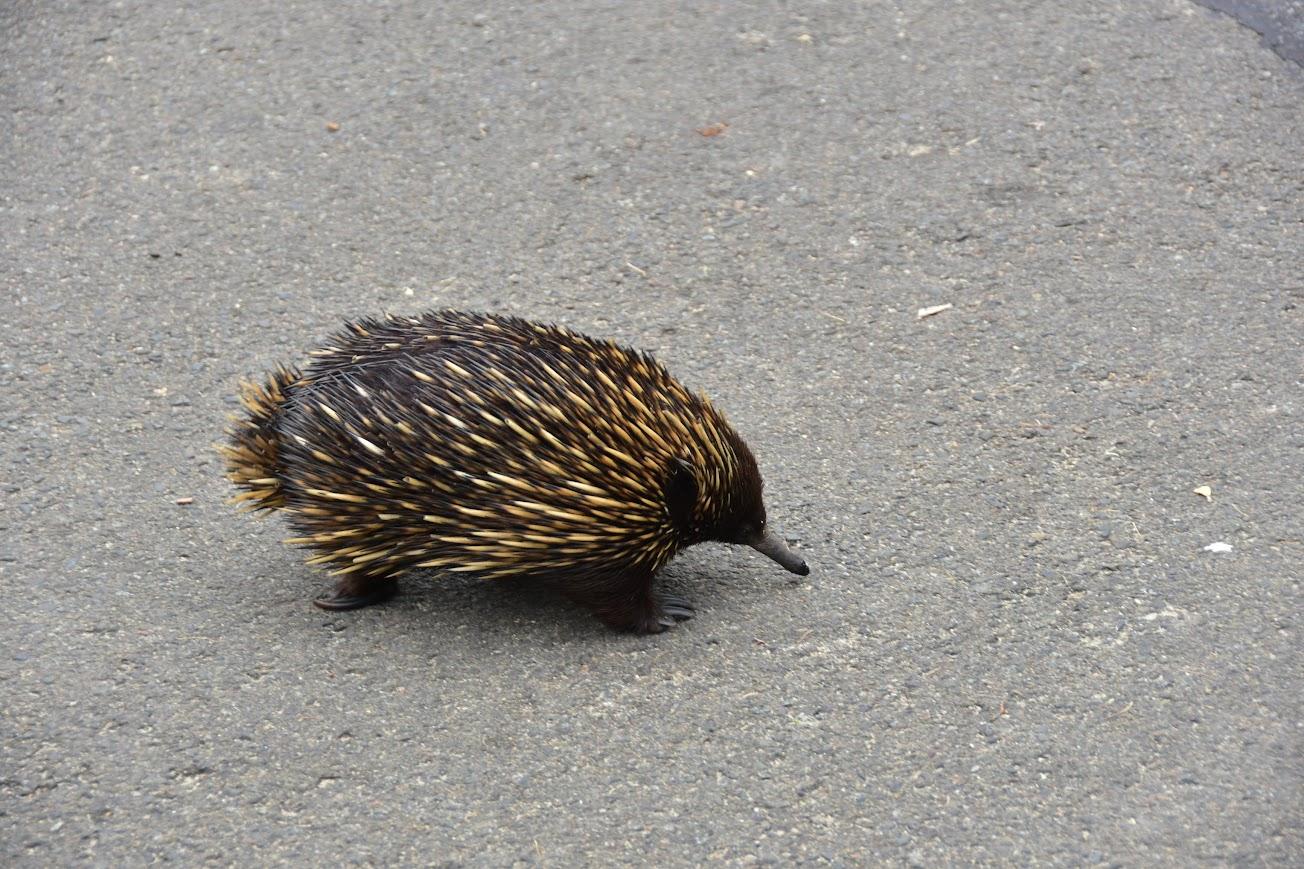
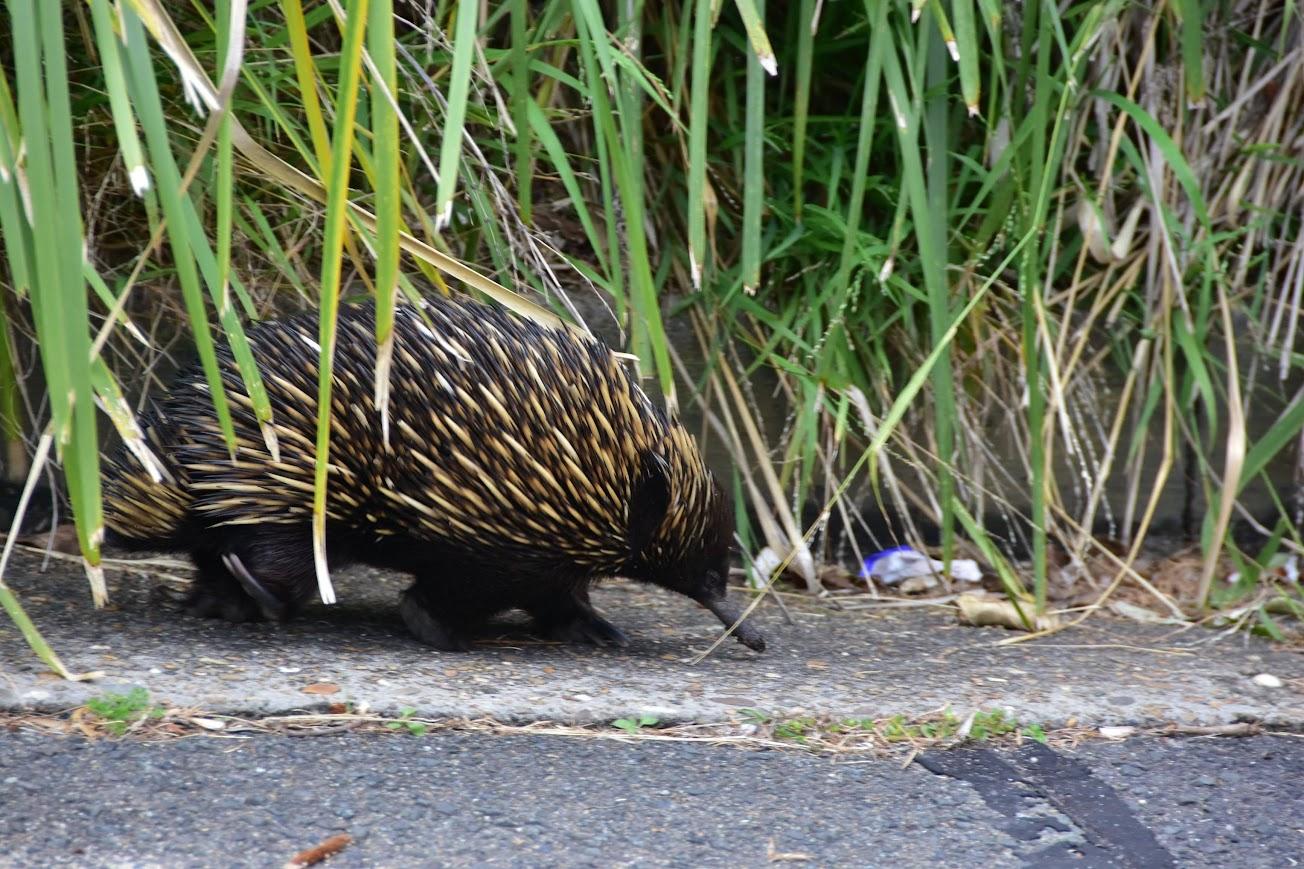
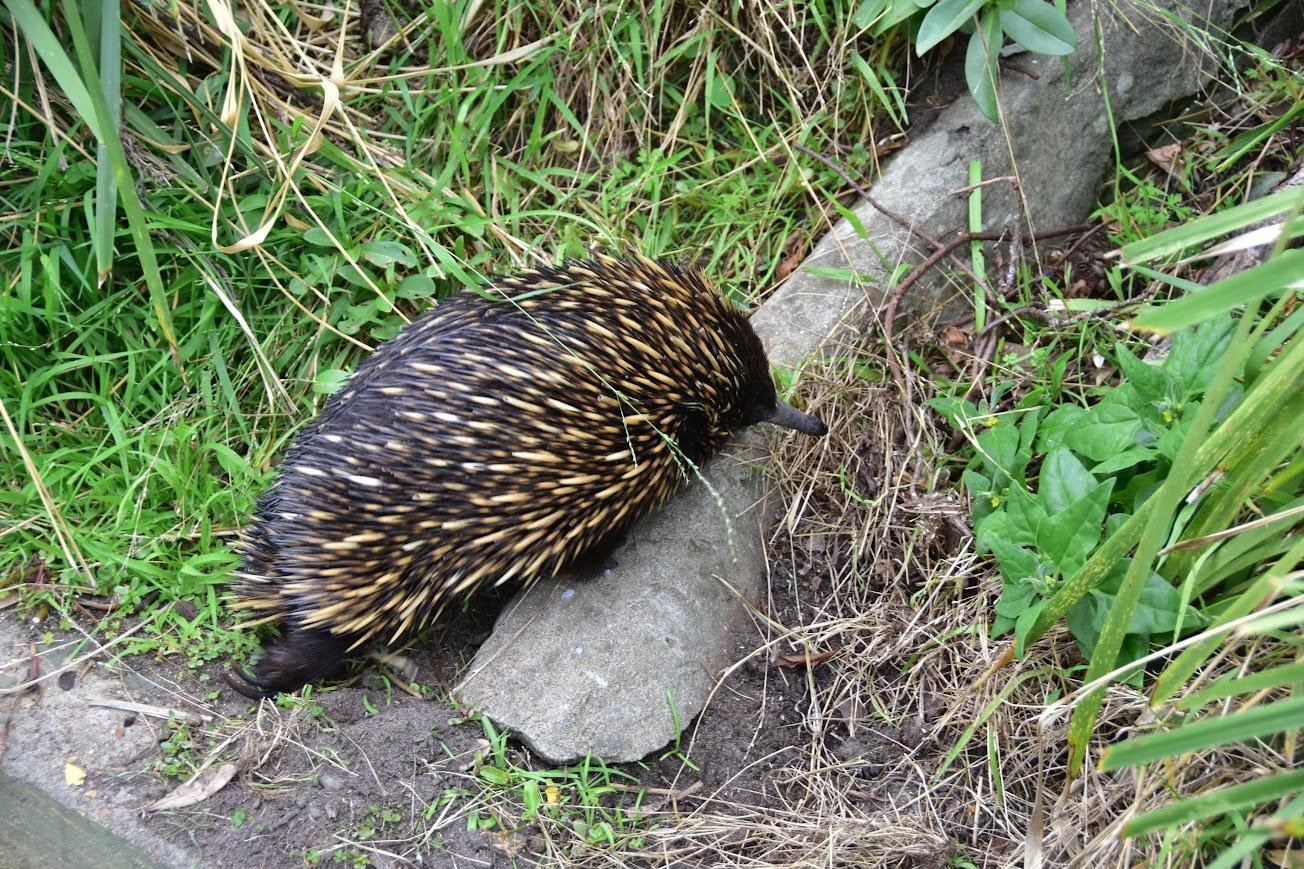
How Citizen Scientists Are Helping To Save A Species: 35 Christmas Beetle Species Unearthed By Volunteers
May 2023: University of Sydney
When architecture alumnus Michael Harvey heard that Christmas Beetle numbers were in decline, he put up his hand to help search for the missing beetle species.
For Michael Harvey (BArch '99), University of Sydney architecture graduate and urban designer for the City of Sydney, Christmas beetles have always been a memorable part of the summer months. But like many Australians he had begun to notice the absence of the glittering green and gold insects as Christmas approached. Then he learned about the citizen science project through SAM Extra, the University's alumni newsletter.
"Growing up in Sydney, Christmas beetles were a really memorable part of summertime and holidays,” he recalls. “That’s why I was keen to volunteer for this project when I heard their numbers were in decline.”
The Christmas Beetle Count was run by Invertebrates Australia and entomologist Associate Professor Tanya Latty from the School of Life and Environmental Science at the University of Sydney over the latter half of 2022. Volunteers, dubbed ‘citizen scientists’, were asked to take pictures of any Christmas beetles they encountered and upload them by using an app on their phone. The goal was to understand the current beetle distribution, understand if the beetle populations were in decline, and identify and combat potential causes to secure the beetles’ future.
Michael eagerly put up his hand to start snapping pictures of the beetles he found on his daily walks through Sydney Park with his dog Ralph. The iconic Australian beetles tended to gather by the bright lights that illuminated the park at night. In the end, Michael submitted five images of the insects he found with Ralph.
The project received more than 6500 submissions from volunteers like Michael and was successful in identifying 35 species of Christmas beetles, including several which had not been spotted in decades. Associate Professor Latty, says that the support from volunteers like Michael was a crucial part of confirming the status of the 35 Christmas beetle species.
“We absolutely could not do this project without volunteers,” she says. "Australia is a huge, huge country. So, without having eyes everywhere, we can't really identify the problem areas.
“We desperately need people in communities everywhere in Australia, even places where perhaps they haven't seen Christmas beetles, to keep an eye out for them.”
She hopes that more volunteers will get involved in projects like this, to help people understand the key role that insects play in our world and challenge their negative preconceptions of the crawling critters around us.
“The vast majority of insects cannot hurt you. I think that fear is something that tends to get put into us very young and it's hard to shift,” Associate Professor Latty says. “But they do all the jobs, they’re predators, waste managers and soil regenerators. And if we ignore them because we're scared of them, we're going to lose something fundamentally important to our ecosystems.
“And Christmas beetles... they’re beautiful! They're cute, they're harmless, they're big. What's not to love?”
For his part, Michael spent time talking to his son about Christmas beetles and his memories of their large populations, drawing on his own interest in environmental science and conservation.
"Volunteering is an easy and fun way to make a positive impact in the world. You give back to your community, learn new skills and connect with like-minded individuals,” he says.
"I just hope that my contribution to the Christmas Beetle Count will make a positive impact on their survival.”
Successes so far
There were 6592 total Christmas beetle sightings collected by volunteers in the 2022/ 2023 season. 35 Christmas beetle species were observed.
Four 'missing' beetle species were formally sighted:
- Anoplognathus multiseriatus - last reported in 1970s
- Anoplognathus rhinastus - last reported in 1999
- Anoplognathus nebulosus - laste reported in 1999
- Anoplognathus vietor - previously reported from a single male speciman in 1986
There is only one preserved specimen of anoplognathus vietor, so it is especially exciting to have recorded a live beetle.
Think you’ve spotted a beetle and want to help? Visit Invertebrates Australia to find out more about the Christmas Beetle Project.
Protect Mona Vale's Bongin Bongin Bay - Establish An Aquatic Reserve
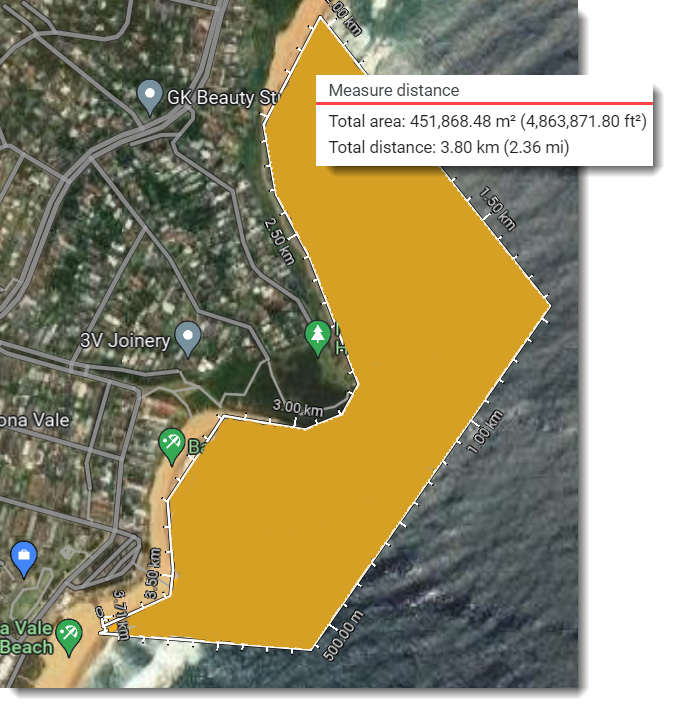
Friends Of Bongin Bongin Bay (Mona Vale Basin) Update: May 2023

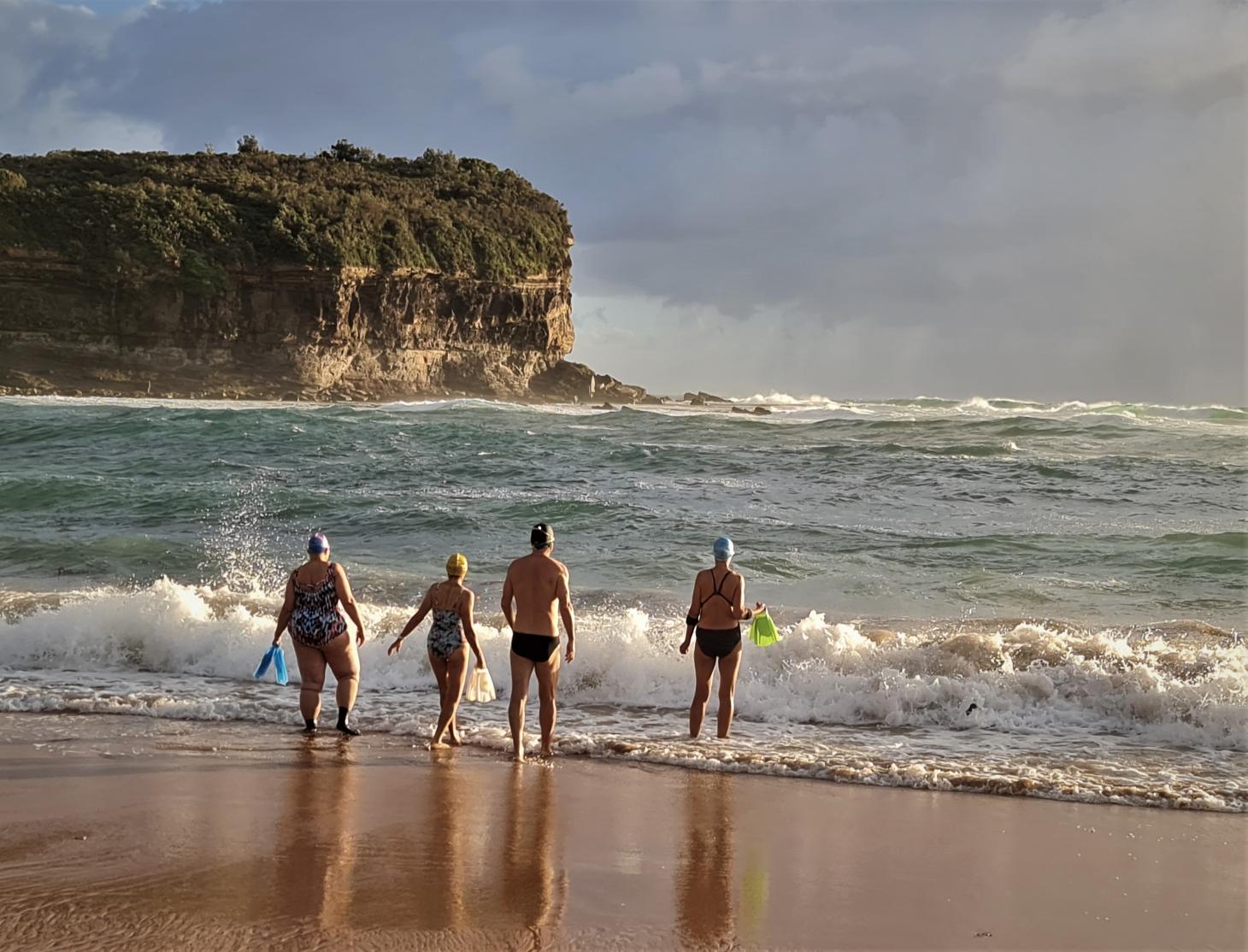
Northern Beaches Clean Up Crew: June 25 Winnererremy Bay, Mona Vale
Come and join us for our family friendly June clean up, in Winnererremy Bay on the Sunday June 25th at 10am. We meet in the grass area close to 7 Eric Green Drive. We have gloves, bags, and buckets, and grabbers. We're trying to remove as much plastic and rubbish as possible before it enters the water. Some of us can focus on the bush area and sandy/rocky areas, and others can walk along the water and even clean up in the water (at own risk).
We will clean up until around 11.15, and after that, we will sort and count the rubbish so we can contribute to research by entering it into a marine debris database. The sorting and counting is normally finished around noon, and we'll often go for lunch together at our own expense. We understand if you cannot stay for this part, but are grateful if you can. We appreciate any help we can get, no matter how small or big.
No booking required - just show up on the day - we will be there no matter what weather. We're a friendly group of people, and everyone is welcome to this family friendly event. It's a nice community - make some new friends and do a good deed for the planet at the same time. For everyone to feel welcome, please leave political and religious messages at home - this includes t-shirts with political campaign messages. Message us on our social media or send us an email if you are lost.
All welcome - the more the merrier. Please invite your friends too!
All details in our Facebook event or on our website.
Northern Beaches Clean Up Crew Facebook page: www.facebook.com/NorthernBeachesCleanUpCrew
Northern Beaches Clean Up Crew website: www.northernbeachescleanupcrew.com
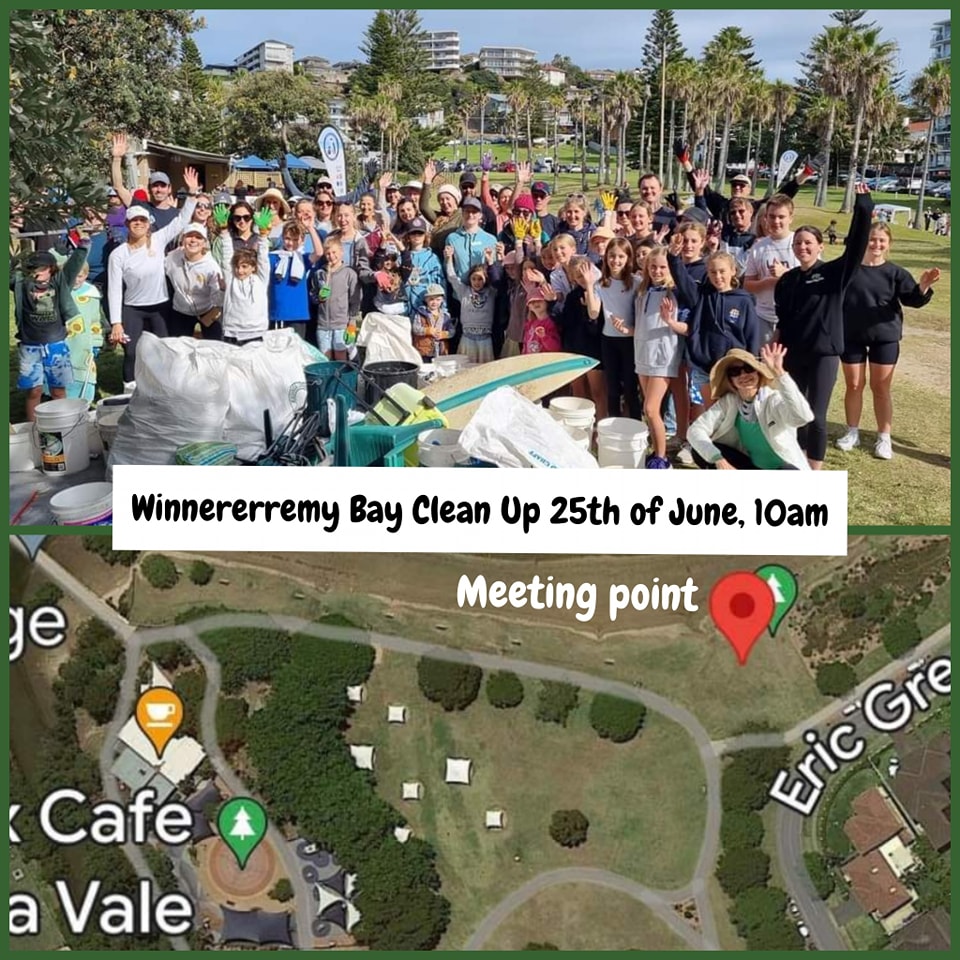
Freshwater Beach And Surrounds Clean Up
Done on Sunday May 28 2023
A huge thank you to everyone and cleaned up Freshwater Beach today. More than 100 people came and we are so happy and grateful to everyone who cares and helps making our beaches and local environment a better and cleaner place for all beings.
We had thousands of Styrofoam balls, about 30 single use coffee cups, nearly 90 plastic bottles, 164 glass bottles, 146 aluminium cans, 11 kilos of cardboard/paper, several surf boards, 127 cigarette butts, 3 broken plastic chairs, thousands of pieces of soft plastic and 22 balls among many of the items that we picked up.
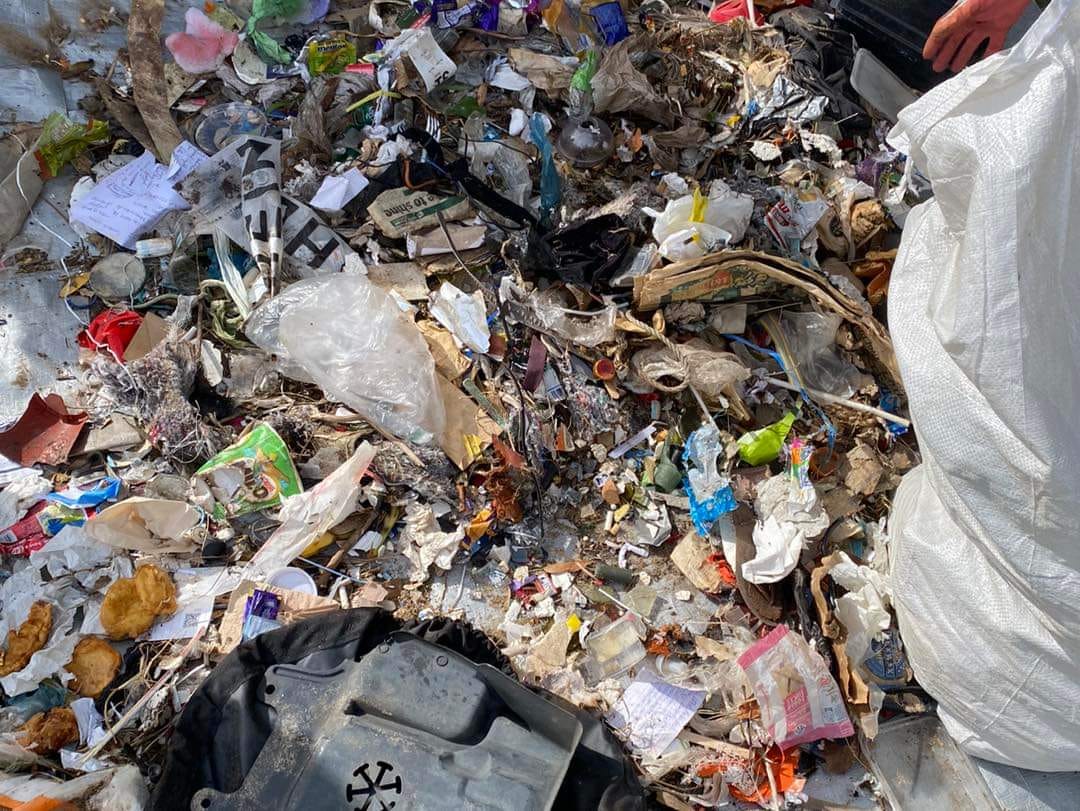
Permaculture NB: June To July 2023 Events
Permaculture Northern Beaches (PNB) is an active local group on Sydney's Northern Beaches working for ecological integrity and assisting you on a pathway to sustainability.
PNB holds monthly permaculture-related public meetings on the last Thursday of each month at the Narrabeen Tramshed Community & Arts Centre, Lakeview Room, 1395A Pittwater Road, Narrabeen. Buses stop directly at the centre and there is also car parking nearby. Doors open at 7:15 pm and meetings take place monthly from February to November.
Everyone is welcome!
We also hold a range of workshops, short courses, film and soup nights, practical garden tours, permabees (working bees), beehive installations, eco-product making sessions and much more.
WORLD OCEANS DAY - BIG BLUE FUTURE
Thursday, June 8, 2023
World Oceans Day is held every year on 8th June to raise awareness of the vital importance of our oceans and the role they play in sustaining a healthy planet. A global celebration, it looks to bring people and organisations together across the globe in a series of events highlighting how we can all help protect and conserve the oceans.
Our ocean needs protection. Our ocean covers 70% of the planet and supports life as we know it. Every second breath we take comes from the ocean. Our ocean feeds billions of people. Our ocean hosts 80% of the world’s biodiversity.
However, our oceans are in crisis. They are being threatened by pollution such as abandoned fishing nets, overfishing, bycatch, and the effects of climate change.
We know the problems. We know the solutions.
World Oceans Day is a day to take action and raise awareness.
The 2023 theme for World Ocean Day is Big Blue Future.
To conserve our wonderful marine resources for future generations. Get involved in the conversation with #WorldOceansDay and #BigBlueFuture.
CELEBRATING WORLD OCEANS DAY
Thursday, June 29, 2023: 7:30pm – 9:00pm
Narrabeen Tramshed Arts and Community Centre, Lakeview Room
1395A Pittwater Road, Narrabeen
Join us in World Oceans’ month to learn more about the Blue planet we live on.
Two great speakers will tell us the wonders and threats facing our oceans.
Australia Marine Conservation Society works on the big issues that risk our ocean wildlife - protecting critical ocean ecosystems with marine reserves around the nation, including Ningaloo and the Great Barrier Reef. As well as issues such as over-fishing and supertrawlers, and protecting threatened and endangered species like the Australian Sea Lion.
Surfrider Foundation is actively working to stop drilling and exploration for oil and gas off our coast (PEP2). The organisation works to protect our oceans, beaches and waves through a powerful activist network.
$5 entry by donation to pay for room hire. Organic teas and coffee are available at the night + swap table - bring plants, seeds, food, books and permaculture items to swap and share.
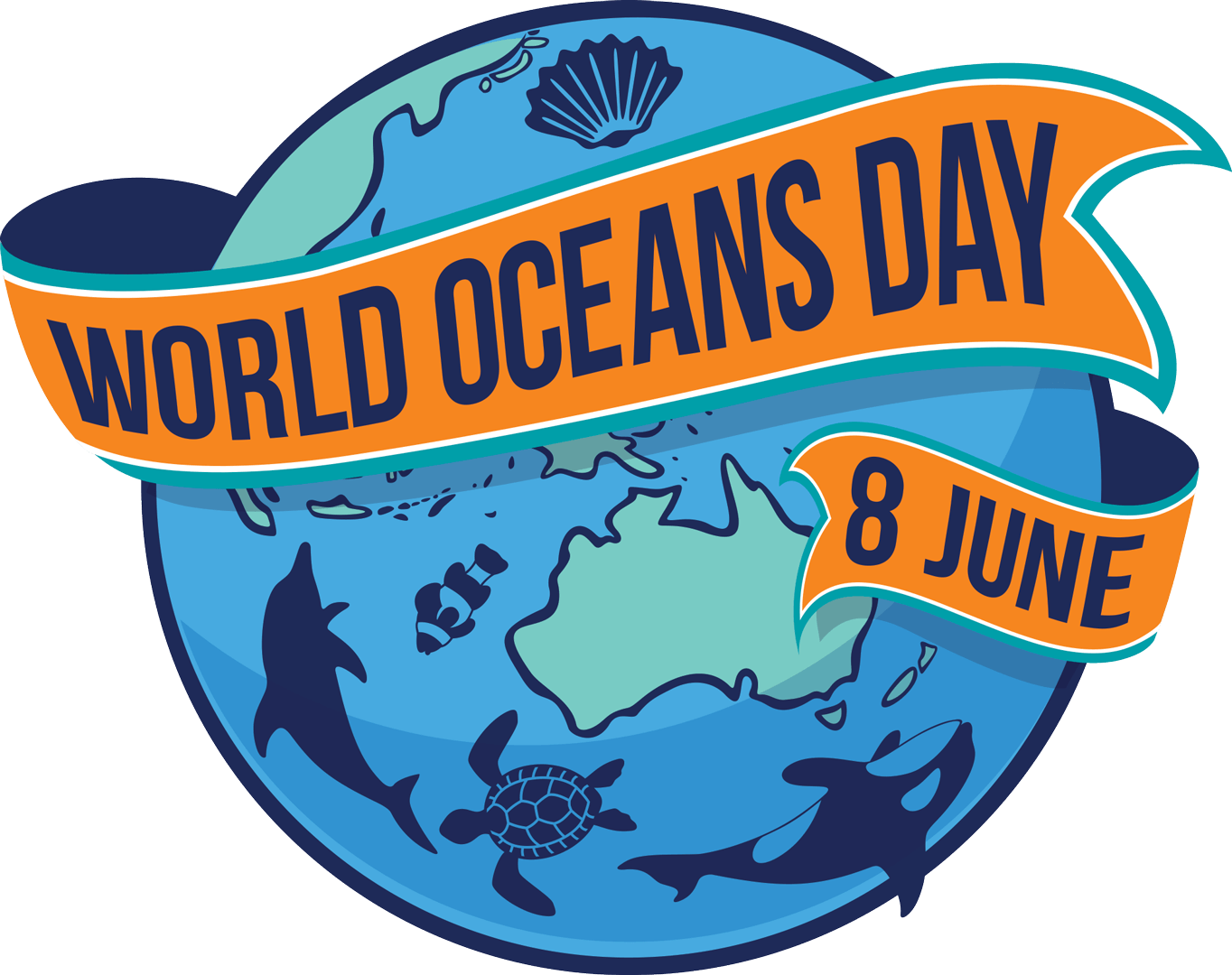
SEED SAVING CIRCLE
Saturday, July 8, 2023: 11:00am – 1:00pm
Balgowlah Community Garden
100 Griffiths Street, Balgowlah
Gather your seeds in winter for the coming spring. Share and swap seeds that are grown organically and locally. These seeds will be the best adapted you can find for the Northern Beaches climate and soils as many have been grown over generations.
Tap into the knowledge and the databank of seeds at Balgowlah Community Garden and PNB + share permaculture knowledge. This is an invaluable resource for the local community. Be part of the change - grow your own seeds and food.
Bring your non-alcoholic drinks and food to share on the day. The seed circle will be outdoors but under cover so dress weather-wise.
PLASTIC FREE JULY
Saturday, July 1, 2023 – Monday, July 31, 2023
Permaculture Northern Beaches is a part of the Plastic Free July challenge - Join Us!
The plastic bottles, bags and takeaway containers that we use for just a few minutes use a material that is designed to last forever. Every bit of plastic ever made still exists!
These plastics:
- Break up, not break down – becoming permanent pollution
- Are mostly made into low-grade products for just one more use or sent to a landfill
- End up in waterways and the ocean – where scientists predict there will be more tons of plastic than tons of fish by 2050
- Transfer to the food chain – carrying pollutants with them
- Increase our eco-footprint – plastic manufacturing consumes 6% of the world’s fossil fuels
Be part of the solution, by taking up these habits:
- Refusing plastic bags and packaging (choose your own alternatives)
- Reducing packaging where possible (opt for refills, remember your reusable shopping bags)
- Refusing plastics that escape as litter (e.g. straws, takeaway cups, utensils, balloons)
- Recycling what cannot be avoided by the use of alternatives.
Register to join 100,000 Australians and a million+ people worldwide stepping up in Plastic Free July www.plasticfreejuly.org
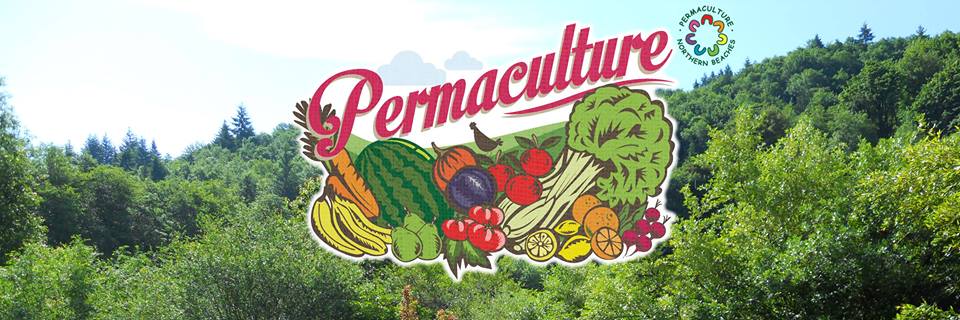
PNHA Guided Nature Walks 2023
Our walks are gentle strolls, enjoying and learning about the bush rather than aiming for destinations. Wear enclosed shoes. We welcome interested children over about 8 years old with carers. All Welcome.
Sunday June 25: Birdwatching and Bushland along Mullet Creek in Ingleside Chase Reserve
Swamp forest and coastal wetlands are rich habitat for fauna such as Swamp Wallaby and Diamond Python. Over 150 bird species have been recorded for the area. Red-Browed Finch is one.
Bring your binoculars and keep your ears pricked for bird calls. The track is mostly level, but with an optional steep climb near the Irrawong waterfall.
Meet: 8.30am near 31 Irrawong Rd North Narrabeen. Ends about 10.30.
So we know you’re coming please book by emailing: pnhainfo@gmail.com and include your phone number so we can contact you if weather is doubtful.
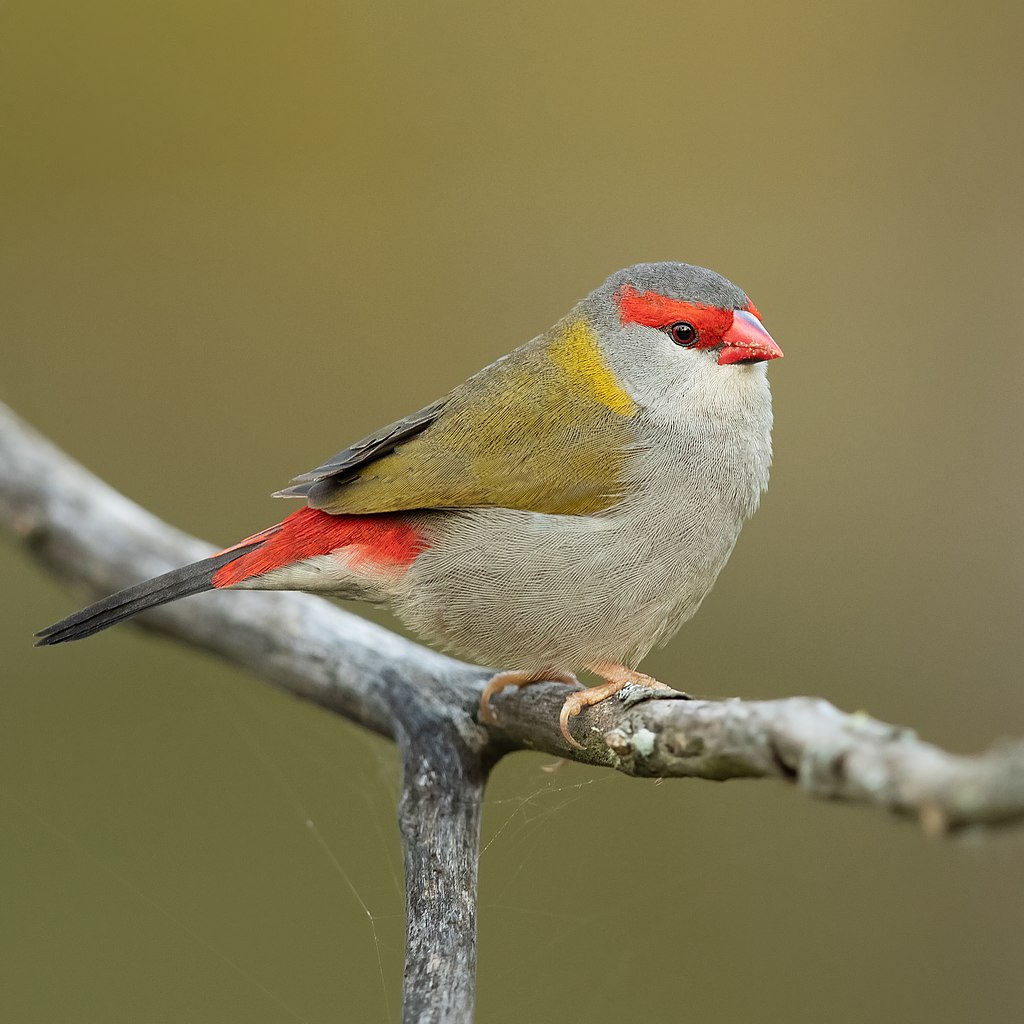
Red-browed finch (Neochmia temporalis). Photo: J J Harrison
Chemical CleanOut: June 2023
Mona Vale Beach Car Park: Sat 24, Sun 25 June 2023 - 9am-3:30pm
Surfview Road, Mona Vale
Only household quantities accepted. Maximum container size of 20kg or 20L per item.
*Up to 100L of paint (in 20L containers) now accepted at all Sydney, Hunter and Illawarra events.
Accepted:
Fluoro globes and tubes, Gas bottles and fire extinguishers, Household cleaners, Batteries, Paint*, Oils, Garden chemicals, Poisons, Smoke detectors.
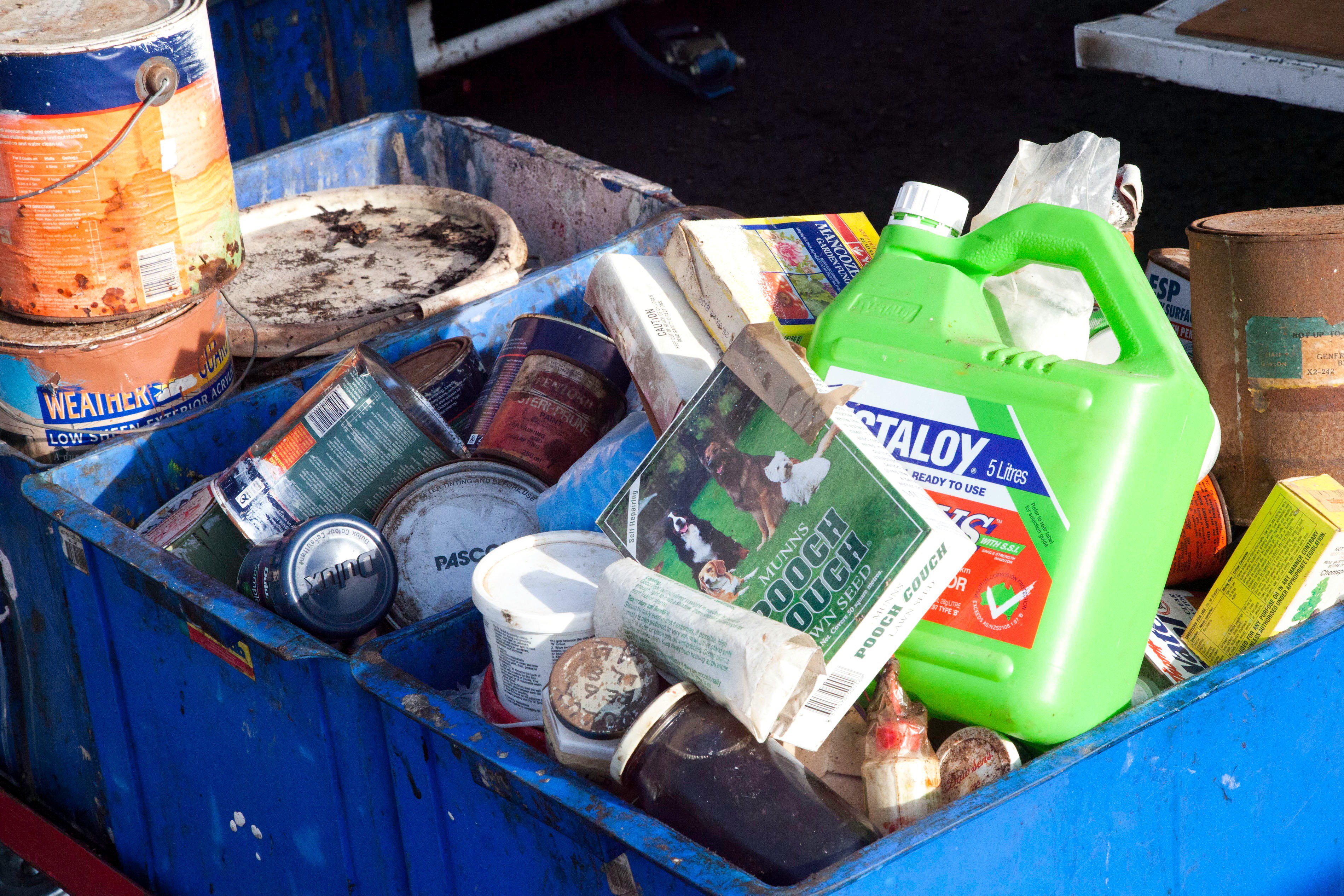
Bushcare In Pittwater
Where we work Which day What time
Avalon
Angophora Reserve 3rd Sunday 8:30 - 11:30am
Avalon Dunes 1st Sunday 8:30 - 11:30am
Avalon Golf Course 2nd Wednesday 3 - 5:30pm
Careel Creek 4th Saturday 8:30 - 11:30am
Toongari Reserve 3rd Saturday 9 - 12noon (8 - 11am in summer)
Bangalley Headland 2nd Sunday 9 to 12noon
Bayview
Winnererremy Bay 4th Sunday 9 to 12noon
Bilgola
North Bilgola Beach 3rd Monday 9 - 12noon
Algona Reserve 1st Saturday 9 - 12noon
Plateau Park 1st Friday 8:30 - 11:30am
Church Point
Browns Bay Reserve 1st Tuesday 9 - 12noon
McCarrs Creek Reserve Contact Bushcare Officer To be confirmed
Clareville
Old Wharf Reserve 3rd Saturday 8 - 11am
Elanora
Kundibah Reserve 4th Sunday 8:30 - 11:30am
Mona Vale
Mona Vale Beach Basin 1st Saturday 8 - 11am
Mona Vale Dunes 2nd Saturday +3rd Thursday 8:30 - 11:30am
Newport
Bungan Beach 4th Sunday 9 - 12noon
Crescent Reserve 3rd Sunday 9 - 12noon
North Newport Beach 4th Saturday 8:30 - 11:30am
Porter Reserve 2nd Saturday 8 - 11am
North Narrabeen
Irrawong Reserve 2nd Saturday 2 - 5pm
Palm Beach
North Palm Beach Dunes 3rd Saturday 9 - 12noon
Scotland Island
Catherine Park 2nd Sunday 10 - 12:30pm
Elizabeth Park 1st Saturday 9 - 12noon
Pathilda Reserve 3rd Saturday 9 - 12noon
Warriewood
Warriewood Wetlands 1st Sunday 8:30 - 11:30am
Whale Beach
Norma Park 1st Friday 9 - 12noon
Western Foreshores
Coopers Point, Elvina Bay 2nd Sunday 10 - 1pm
Rocky Point, Elvina Bay 1st Monday 9 - 12noon
Friends Of Narrabeen Lagoon Catchment Activities

Gardens And Environment Groups And Organisations In Pittwater
Report Fox Sightings
%20(1).jpg?timestamp=1675893929686)
New Marine Wildlife Rescue Group On The Central Coast
A new wildlife group was launched on the Central Coast on Saturday, December 10, 2022.
Marine Wildlife Rescue Central Coast (MWRCC) had its official launch at The Entrance Boat Shed at 10am.
The group comprises current and former members of ASTR, ORRCA, Sea Shepherd, Greenpeace, WIRES and Wildlife ARC, as well as vets, academics, and people from all walks of life.
Well known marine wildlife advocate and activist Cathy Gilmore is spearheading the organisation.
“We believe that it is time the Central Coast looked after its own marine wildlife, and not be under the control or directed by groups that aren’t based locally,” Gilmore said.
“We have the local knowledge and are set up to respond and help injured animals more quickly.
“This also means that donations and money fundraised will go directly into helping our local marine creatures, and not get tied up elsewhere in the state.”
The organisation plans to have rehabilitation facilities and rescue kits placed in strategic locations around the region.
MWRCC will also be in touch with Indigenous groups to learn the traditional importance of the local marine environment and its inhabitants.
“We want to work with these groups and share knowledge between us,” Gilmore said.
“This is an opportunity to help save and protect our local marine wildlife, so if you have passion and commitment, then you are more than welcome to join us.”
Marine Wildlife Rescue Central Coast has a Facebook page where you may contact members. Visit: https://www.facebook.com/profile.php?id=100076317431064
- Ph: 0478 439 965
- Email: marinewildlifecc@gmail.com
- Instagram: marinewildliferescuecc

Watch Out - Shorebirds About
.JPG.opt1460x973o0,0s1460x973.jpg?timestamp=1663629195339)
Possums In Your Roof?: Do The Right Thing

Aviaries + Possum Release Sites Needed

Track & Trace Puts Biosecurity App’s Real-Life Data To The Test
June 1, 2023
Today in Orange, local vignerons, biosecurity specialists and industry representatives met to measure the edge technology can deliver via real-time data to increase planning efficiency and effectiveness in a biosecurity emergency response.
NSW Department of Primary Industries (DPI), Director Plant Biosecurity Enhancement, Shane Hetherington, said Exercise Sour Grapes 2023 is simulating a plant biosecurity outbreak to test data from the Track & Trace pilot project.
"Track & Trace used the Onside check-in app to gather real-life data from local vineyards from spring 2022 until the 2023 vintage,” Dr Hetherington said.
“Exercise Sour Grapes 2023 is testing the technology’s surveillance and early detection algorithm in delivering rapid response to biosecurity outbreaks and informing resource allocation for the NSW wine sector.
“This exercise will compare results with Exercise Sour Grapes 2019, which ran the same emergency response simulation, without the advantage of real-time data from an app.”
Track & Trace is supported by NSW DPI, NSW Wine and Southern NSW Drought Resilience Adoption and Innovation Hub (the Hub).
The project has worked with Canberra, Tumbarumba, Orange and Mudgee vignerons who collected real-time data in their vineyards.
NSW Wine president, Mark Bourne, said building and maintaining accurate movement data helps to protect the long-term resilience of the NSW wine industry.
“Prevention is always better than a cure. If and when a new threat emerges, we need to be able to trace back to determine where it came from and trace forward to lessen the impacts on industry and the communities in which we live and work,” Mr Bourne said.
“This project is a real-life demonstration of how biosecurity can work as a shared responsibility. Industry, federal and state government agencies and a technology partner are all working together to pilot a biosecurity solution to help make us fit for future challenges.”
Hub Director, Cindy Cassidy, said developing a world-class biosecurity system is one of the four National Agricultural Innovation Agenda priorities supported by the Hub.
“Track & Trace is part of the Hub’s Managing Biosecurity Risks investment project, which is testing strategies to better engage the community and supply chain in biosecurity preparedness,” Ms Cassidy said.
“This project gives us the opportunity to apply existing technologies and test systems designed to help better prepare a region to respond to biosecurity threats
“Track & Trace is just the beginning. We are keen to engage the community and the supply chain to support our biosecurity efforts and if this technology does prove to be effective, it could revolutionise biosecurity in NSW and across horticulture Australia wide.”
The project is supported by funding from the Department of Agriculture, Fisheries and Forestry as part of the Australian Government’s Agricultural Innovation Hubs Program.
Photo: NSW Department of Primary Industries, Plant Biosecurity Enhancement director, Shane Hetherington, Southern NSW Drought Resilience Adoption and Innovation Hub director, Cindy Cassidy and NSW Wine president, Mark Bourne NSW DPI Head Office in Orange.
Queensland Government Releases Plan With Pathway To Banning Fracking On The Lake Eyre Basin Floodplains
June 2, 2023
Lock the Gate Alliance congratulates the Queensland Palaszczuk Government for releasing a long awaited consultation plan for the Lake Eyre Basin that includes an option for effectively banning new oil and gas development on the region’s fragile floodplains.
The government today released its regulatory impact statement (RIS) with options on Channel Country protection. Oil and gas companies own huge tenements over sections of the flood plains, however wide-scale unconventional industrialisation of the region has not yet occurred. Numerous stakeholders are concerned about the threat this type of development would pose to the Lake Eyre Basin’s desert rivers.
These risks include:
- Direct impact of many hundreds of gas wells and associated infrastructure such as access roads that would divert the flow of the channels that feed Kati Thanda-Lake Eyre and other wetlands in the system
- Chemical spills from fracking contaminating the channels, particularly during flood events
- Loss of organic certification for graziers operating on the floodplains due to the presence of unconventional oil and gas extraction
The combined impact of infrastructure and any spills on the floodplains would leave the LEB less resilient to the existing and anticipated impacts of climate change, such as longer droughts and more intense rainfall events when they do occur.
The impact statement itself notes, “the gradual emergence of plans and proposals for unconventional extraction of oil and gas in the rivers or on the floodplains of the Queensland LEB presents challenges to the future health… of these sensitive areas. This is because of the associated industrialised processes including intensive hydraulic fracturing techniques, and associated requirements for substantially greater volumes of water, use of chemicals, and generation of contaminants, wastewater, and other processes. Accidents leading to pollution of the waters of Kati-Thanda Lake Eyre, and its rivers and floodplain systems, could potentially be catastrophic for nature, for people, and the economic and social prosperity of the region.”
Grazier and Lock the Gate spokesperson Nick Holliday said this was a once in a generation opportunity for the Queensland Palaszczuk Government to prioritise protections for the floodplains.
“We’re happy this consultation paper has been released, and that it contains an option for protecting this precious area from the dangers of fracking,” he said.
“The Queensland Lake Eyre Basin sustains a thriving organic beef industry and incredible ecology. The RIS shows how fracking threatens all this.
“The consultation paper highlights threats oil and gas developments pose to one of the last truly free flowing desert river systems in the world.
“If unconventional oil and gas is allowed on the floodplains, it will irreparably damage the Lake Eyre Basin.
“This Regulatory Impact Statement contains a clear pathway forward that honours Labor’s election commitments and protects these fragile rivers - that means banning new oil and gas on the floodplains.
“Under Queensland’s existing system, the oil and gas industry has been allowed to proliferate across some of Queensland’s most fertile farmland and most vital underground water sources across the Western Downs. This must not occur in the Channel Country.
“Anything less than a total ban on new oil and gas development on the floodplains would be an environmental and social catastrophe. It would trash the Lake Eyre Basin for generations to come, right at a moment when the world is finally starting to recognise the need to move away from fossil fuels such as oil and gas to mitigate the impacts of climate change.
“This area must be protected, for the sake of traditional owners, graziers and future generations of Queenslanders. Locals have been fighting for this for decades. The Palaszczuk Government has a historic opportunity to get this right and fulfil their promise to preserve the Channel Country into the future.”
Comments on the Consultation Regulatory Impact Statement will close 5.00pm Friday 25 August 2023.
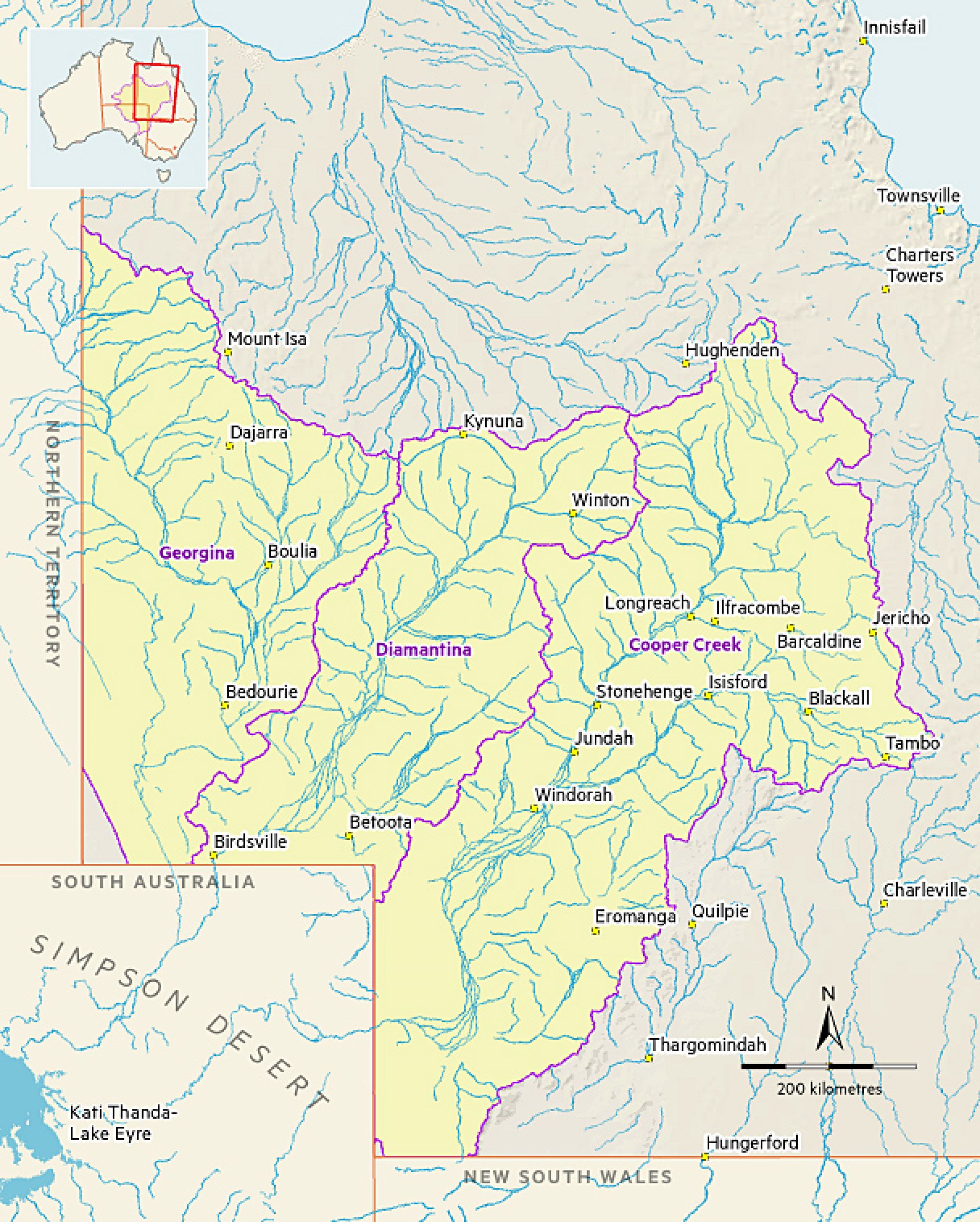
Map of the Lake Eyre Basin and Drainage Sub-basins area and inset of this location in Queensland.
Background
The rivers and floodplains of the Lake Eyre Basin in South West Queensland (known as the Channel Country) are some of the last free flowing desert rivers in the world, and are of immense significance to Traditional Owners. Their unique ecology has been globally recognised.
In 2015, the Palaszcuk Government made an election commitment to protect these rivers and floodplains. In 2022, then Environment Minister Meaghan Scanlon initiated a stakeholder consultation process with graziers, Traditional Owners, the gas industry and environmentalists on options for protecting the Channel Country.
Despite this stakeholder process, oil and gas companies have been granted huge tenements over Channel Country flood plains.
In late 2021, the Queensland Government quietly granted an application by Origin Energy to frack across more than 225,000 hectares of tenements, including on the floodplains.
In October last year, a scientific report found 831 oil and gas wells across the entire Lake Eyre Basin (including in other states), and highlighted the damage they were causing to the flood plains.
4,500 Hectares Of Koala Habitat Near Port Macquarie Now Protected
May 29, 2023
4,500 hectares of bushland containing koala-preferred habitat near Port Macquarie will be protected forever following its purchase by the NSW National Parks and Wildlife Service.
The property, located west of Port Macquarie and within the traditional lands of the Biripi nation, occupies a critical position between four existing National Parks and Wildlife Service reserves and between two known koala populations at Comboyne and South Kempsey.
The property is already home to between 30 and 60 koalas.
The land also provides suitable habitat for at least 45 threatened species, including the endangered Hasting River mouse and the spotted-tailed quoll, hollow-dependent species such as the greater glider, and a range of birds including the glossy black cockatoo and wompoo fruit-dove.
Connecting these reserves will safeguard the health and resilience of the habitat and secure safe corridors for koalas to move through the landscape.
The acquisition will also enhance protection for declared wilderness areas that abut the property, which form part of the Gondwana Rainforests of Australia World Heritage Area.
The Mid North Coast is home to two of the 10 stronghold koala populations in New South Wales.
Acquisition of the property was funded under the NSW Koala Strategy.
NSW Environment Minister Penny Sharpe stated;
'Opportunities to acquire large parcels of private land featuring koala habitat along the NSW coast are extremely rare, so this is a huge win for koala conservation.'
'Permanent protection of this property as part of the national parks estate will not only secure the koala-preferred habitat– it will also enable us to lessen the increasing and cumulative threats faced by koalas.'
'With active management of fire, weeds and feral animals, we will continue to maintain and improve this habitat for koalas and other native species.'
NCC Calls For Halt On Logging In Great Koala National Park
The Nature Conservation Council of New South Wales (NCC), the state's leading environmental advocacy organisation, has today released analysis showing that 17.7% of state forest that constitutes the Great Koala National Park proposal will be targeted over the next 12 months by Forestry Corporation NSW (Forestry Corp).
NSW's 12 Month's of Operations Plan Portal shows that Forestry Corporation NSW plans to log 30,813ha (over 17%) of state forest that constitutes the Great Koala National Park (GKNP) proposal.
NCC has also developed this map in order to help members of the community visualise this plan and highlight the imminent threat koalas are facing.
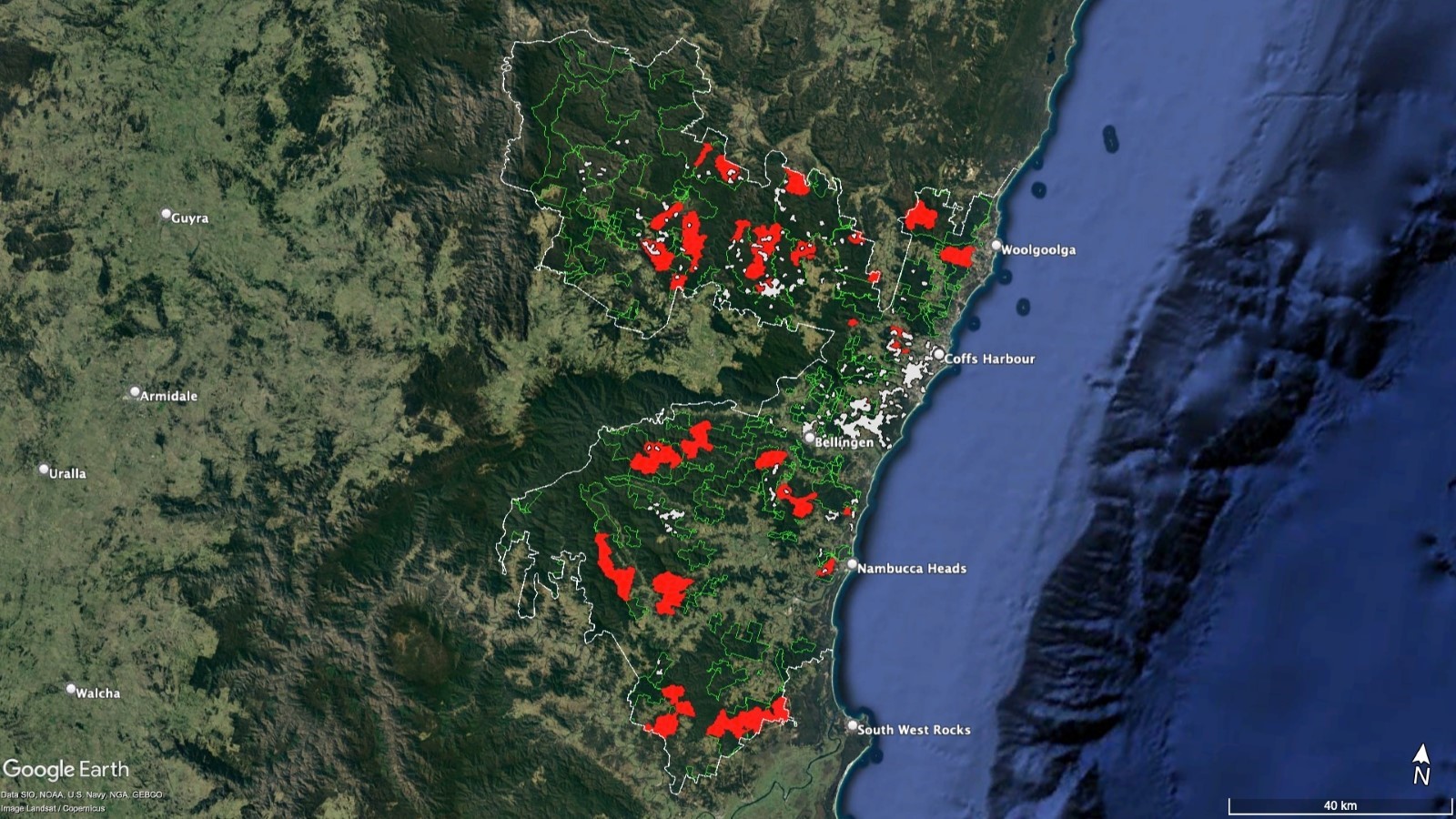
Map of the proposed Great Koala National Park (white outline). Red is areas Forestry Corporation NSW plans to log in the next 12 months, white polygons are ’koala hubs’ - the most important sites of koala habitat in NSW, and green is state forests that constitutes the GKNP proposal.
Critically, the analysis found that logging is planned in areas the NSW government has identified as the most important areas of koala habitat in NSW (OEH Koala Hubs) including Wild Cattle Creek, Clouds Creek, Pine Creek and Boambee State Forests.
“The NSW Government committed to protecting koalas by creating the GKNP, but before the assessment process even begins, Forestry Corp plans to log nearly 20% of the park. This absolutely cannot happen if we want koalas in the Great Koala National Park” NCC CEO Jacqui Mumford said today.
“Forestry Corp knows this national park is coming, and they are deliberately ramping up operations within its boundaries to extract as much timber from it as possible.”
“The ridiculous thing is that for the last couple of years under the Coalition government taxpayers subsidised FCNSW to the tune of $29 million. The new Labor government has a real opportunity to stop the destruction of koala habitat and sending taxpayers the bill" Mumford continued.
Analysis by NCC has also found that in the 2021-2022 financial year the hardwood division of Forestry Corporation NSW, which is responsible for the native forest logging, ran at a loss of $9 million. This followed from 20-21 FY where the division ran at a loss of $20 million.
Logging compartments of native forest that fall within the proposed Great Koala National Park has cost the NSW taxpayer an estimated $5 million ($4,991,823.2) worth of subsidies since 2020. (see below)
“It seems absurd to have to say it, but the NSW taxpayer should not be paying to kill koalas”
NCC Chief Executive Officer Jacqui Mumford stated;
“The Great Koalas National Park proposal was developed by leading scientists, ecologists and local environmental groups, including the National Parks Association, who identified the most important areas of koala habitat in NSW. All of these areas need to be protected if we are to ensure the survival of koalas in the wild."
“I call on the NSW government to immediately halt logging in areas that will become the Great Koalas National Park and undertake a thorough and publicly available assessment on the impact of Forestry Corporation NSW's planned logging activities on koala populations.”
“Forestry Corp operated as a rogue agency under the previous government, and every day we hear new reports of them breaking the law. They have been fined or prosecuted 10 times since 2020 for breaches such as illegally felling protected giant trees, felling trees with hollows, and felling koala feed trees.”
“Victoria and Western Australia are now both ending native forest logging by 2024, while Queensland is stopping logging south of Noosa by next year. NSW is now the laggard in this space, and it's time for the NSW government to step up."
“This is a watershed moment for the Minns Government. Will you act in line with community expectations and desires and protect koalas or risk their extinction.”
Additional information
Koala hubs: In 2017, at the request of the Chief Scientist, the Office of Environment and Heritage analysed Koala records "to delineate highly significant local scale areas of koala occupancy currently known for protection", identifying “areas of currently known significant koala occupancy that indicate clusters of resident populations known as Koala Hubs”. The previous government refused to publish the report and allowed the Forestry Corporation to go on logging them, and they still are.
State Forests logged within the GKNP since 2020
FY 2021-2022
Using the annual Sustainability Reports released by FCNSW, analysis shows that there were 160 compartments logged in state forests across the state in 21-22.
This equates to a loss of $56,250 per compartment logged when taking into consideration the $9 million lost over this year.
Coffs Harbour City Council TOTAL= 20 cpts at $1,125,000
- Wedding bells (17 cpt)
- Conglomerate (3 cpt)
Clarence Valley Council TOTAL= 8cpts at $450,000
- Wild Cattle Creek (4 cpt)
- Clouds Creek (3 cpt)
- Ellis (1 cpt)
Nambucca valley council TOTAL= 6 cpts at $337,500
- Tamban (6 cpt)
FY 2020-2021
In the FY 2020-21, the Hardwood Division of Forestry Corporation ran at a loss of $20 million.
There was a total of 104 compartments logged during this period, meaning it lost $192,307.7 per compartment.
Coffs Harbour City Council total= 10cpts at $1,923,077
- Conglomerate (2 cpt)
- Lower Bucca (4 cpt)
- Wedding Bells (2 cpt)
- Bagawa (1 cpt)
- Orara east (1 cpt)
Clarence Valley Council total=4cpts at $771,630.8
- Wild Cattle Creek (4 cpt)
Nambucca Valley Council total=2 pts at $384,615.4
- Tamban (1 cpt)
- Ingalba (1 cpt)
TOTAL TAXPAYER COST TO LOG FOREST WITHIN THE FUTURE GREAT KOALA NATIONAL PARK - $4,991,823.2
Paying Aussies To Pollute - Peak Environment Groups Denounce Jemena Energy For Incentivising Gas Switch
June 2, 2023
While the Victorian and NSW state governments are implementing policies designed to break Australia's toxic gas addiction, one gas company is blatantly undermining these programs by offering customers cash incentives to switch appliances in their homes to polluting methane gas.
The Nature Conservation Council of New South Wales (NCC) and Environment Victoria, the leading environmental advocacy organisations from both states, have today criticised Jemena Energy for ‘gaslighting’ action on climate change by incentivising further burning of gas.
In the midst of a climate crisis, Jemena is offering financial incentives for NSW customers to switch everyday appliances from electricity to gas, while misleading the public about the benefits, impacts and future viability of methane gas as an energy source.[1]
“Gas is a fossil fuel that is a major contributor to the climate crisis”, Dr Brad Smith, NCC Policy and Advocacy Director said today. “Jemena is locking in carbon pollution by continuing to connect appliances in homes to fossil fuel gas infrastructure.”
"Every new appliance connected to gas locks in decades of guaranteed profits for Jemena, and decades of pollution for the rest of us. This company knows that its customers could save money and reduce pollution by switching to electric appliances, yet it is trying to lock people into a more expensive and destructive source of energy" Smith also said.
Bronya Lipski, Environment Victoria’s Policy and Advocacy Manager said that with winter temperatures dropping and gas bills rising, both states need a bold plan that supports everyone to electrify their homes, ensuring no one is left behind.
“In Victoria, the State government is offering initiatives through its Solar Victoria and Victorian Energy Upgrades programs to help people transition away from gas to energy efficient electric homes. But in NSW, this perverse scheme from Jemena is undermining such progress.”
“Across the country, people are waking up to the dangers of methane gas and the opportunity that electrifying our lives brings to cut climate pollution and power bills at the same time. But the powerful gas lobby is pushing back with everything they have. They are launching a multi-million dollar ad campaign to protect their record profits.”
“It is absurd and dangerous to see Jemena promoting gas appliances in this attempt to keep their dying industry afloat. We know that efficient electric appliances, powered by renewable energy are what's needed for a safe climate - not cash handouts to keep polluting.”
“The good news is that efficient electric appliances can save energy, reduce our bills and cut pollution, and with targeted government support, all households could be supported to switch to affordable, modern appliances.”
Dr Brad Smith, NCC Policy and Advocacy Director stated;
“A safe climate for our kids means electrifying all homes by 2035. Every new gas appliance makes this mission harder and more expensive.
“The NSW government needs to follow the lead of states like the ACT and Victoria and should develop a gas substitution roadmap, so that rather than purchasing polluting gas appliances, households can switch to cheaper, clean, renewable energy.”
“The use of gas in homes is also exposing Australian children to a higher risk of asthma.” [2]
“Cooking with gas causes up to 12 percent of childhood asthma cases.”
“This means a child living in a home with gas cooking faces a similar risk of asthma to a child exposed to cigarette smoke in their home.”
Environment Victoria Policy and Advocacy Manager Bronya Lipski also noted:.
“Our states are facing cold conditions, rising cost of living pressures, and exorbitant energy bills. Gas wrecks our climate, damages our health and is our most expensive form of energy. Yet Victoria burns more gas than any other state, and 60% of that is to heat our homes.”
“But the gas lobby is pushing back with everything they have. They are launching a multi-million dollar ad campaign to protect their record profits. This is industry propaganda designed to deflect attention away from climate and health science, and directly challenge government ambition to ensure emissions reductions and renewable energy targets are met.”
Background information
[1] Jemena, the gas pipeline operator for NSW, is offering a $500 cashback to customers who replace an existing non-methane gas (“natural gas”) appliance with a methane gas appliance. For details see: https://www.gonaturalgas.com.au/claim-your-cash-back
[2] Climate Council, Invisible Danger: Gas, Asthma and our Children, 2021
NSW Metering Policy Not Holding Water: Plans To Meter All Water Pumping In NSW Float Away As Deadline Once Again Not Met
June 1, 2023
As the June 1 deadline arrives, the Nature Conservation Council of New South Wales (NCC), the state’s leading environmental advocacy organisation, wishes to highlight that NSW irrigation metering reforms have again failed to be implemented.
The mandatory date for irrigators in the Murray and Murrumbidgee to have compliant metering equipment installed is June 1st, extended from January because of the impact of the floods.
According to Board notes from the Natural Resource Access Regulator (NRAR) there is a ‘widening gap between policy aspiration and program implementation’[1].
“This basically means that the regulator is saying that despite all the delays, they have been unwilling or unable to secure even the most basic oversight into how much water is being sucked from our rivers by corporate irrigators.” Mel Gray, Water Campaigner with NCC said today
"How can we expect to sustainably and fairly manage our water resources when we can’t even get irrigators to measure how much water they are taking” Gray continued.
Adding to concerns about the adequacy of legislation to protect rivers from over extraction and water theft, the Inspector General of Water Compliance Troy Grant said in Senate Estimates last Friday that the legislation was rubbish, that it had so many loopholes that an irrigator "would have to be a moron" to get caught stealing water.
Grant said his investigations team currently has 21 open investigations, and since February they have closed 62 investigations. “The reason they’ve closed is that the legislation is rubbish” he said.
NCC Water Campaigner Mel Gray satted;
“The sad thing is that this is consistent with what we've seen across NSW. The deadline for metering the largest pumps in the Northern Basin was 18 months ago, and about 30% of pumps in that category still don’t have compliant metering and telemetry installed.”
“There are already too many loopholes in NSW’s metering policy. For example, pumps under 100mm diameter not required to have metering fitted at all, regardless of how many pumps are installed in a given water source.”
“We are also deeply concerned by the Department’s ‘review of the underlying regulation to alleviate constraints’ which may indicate they are considering weakening the standards to allow irrigators to use telemetry equipment (devices that send real time data to the department) that isn't accredited.”
“The underlying problem with water management in NSW is that the Department don’t accept their duty under the law to prioritise the environment, as identified by the Independent Commission Against Corruption in 2020.” [2. ]
“We welcome the initial steps the new Minister for Water Rose Jackson has taken, but it looks like there is still a culture of prioritising industry over the environment and downstream communities throughout the Department, and it is important this is dealt with.”
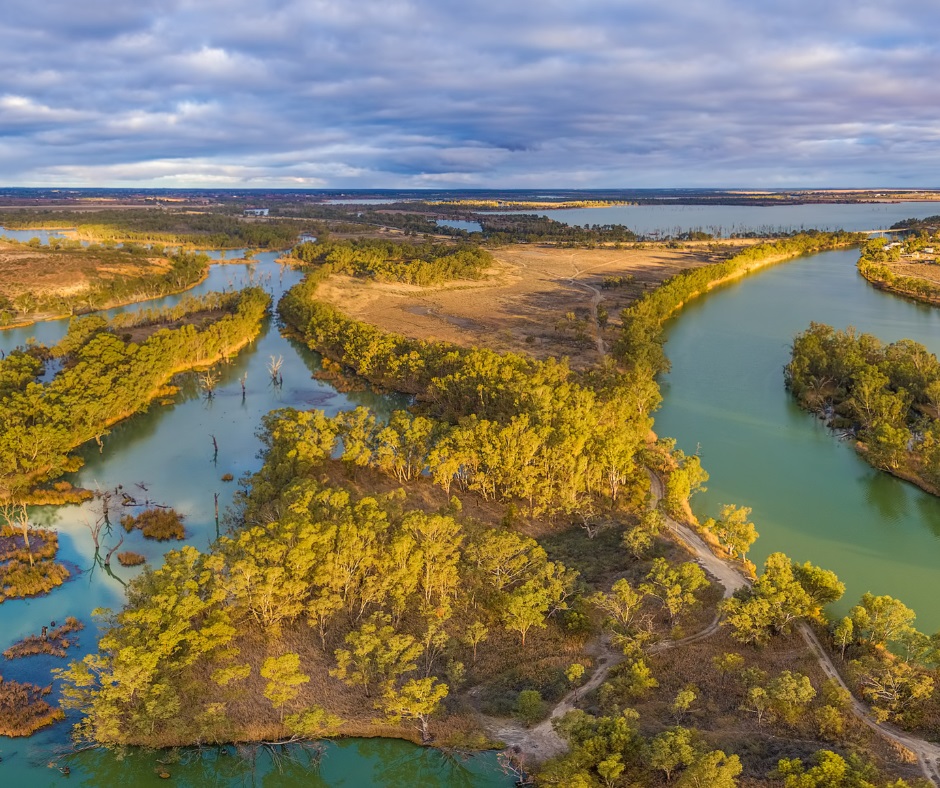
1: https://www.nrar.nsw.gov.au/__data/assets/pdf_file/0020/560243/NRAR-Board-meeting-minutes-March-2023.pdf
2: Investigation into complaints of corruption in the management of water in NSW and systemic non-compliance with the Water Management Act 2000 page 21
Metering Deadline Looms For Southern Inland
May 30, 2023
Southern Inland water users have less than a week left to start installing compliant non-urban metering equipment to improve the way water is measured and monitored across the state.
Chief Operating Officer for Water Graham Attenborough said regional areas are facing more extreme climate challenges than ever before, highlighting the critical need to manage water supplies efficiently and fairly.
“If we can't measure it, we can’t manage it,” Mr Attenborough said.
“The 1 June deadline is fast approaching, and landowners in the Southern Inland region have a real opportunity to take proactive steps to help the NSW Government secure a better water future for the next generation.
"We started roadshows 18 months ago to help people get up to speed about what is needed to meet the new requirements.”
The Department of Planning and Environment has delivered face-to-face information sessions in Albury, Denilquin, Broken Hill, Griffith, Dareton, Forbes, Cootamundra, Tumut, Mildura, Condobolin, Yanco, Cowra, and Wagga Wagga, along with 14 online sessions.
“We appreciate there is a lot to digest when new rules come into place, which is why landowners were given an extra six months to get onboard after facing record rainfall and flooding in 2022,” Mr Attenborough said.
“We understand a lot of farmers and irrigators have already begun to install new or replacement meters which is great news, but there is an expectation that everyone takes steps to become compliant.
“The deadline is just days away, so if you haven’t already got an approved meter up and running, you will need to demonstrate that you’ve contacted one of our metering experts and locked in a time for installation.
“If the cost of new metering equipment is a barrier to becoming compliant, there are several programs that can help farmers offset the cost, including a telemetry rebate program that provides a $975 rebate to water users’ accounts for each meter they connect to the telemetry system.
“There is also the Instant Asset Write-Off which enables farmers to deduct the full purchase price of assets up to $150,000 from their taxable income and the NSW Farm Innovation Fund which provides loans to carry out capital works, along with exemptions for small, low risk works that are used solely to take water under a stock and domestic water access license.
“The Natural Resources Access Regulator will enforce the new requirements and will not hesitate to take compliance action against people who refuse to adhere to them. Those caught flouting the new requirements could face fines or, in extreme cases, prosecution.”
For more information go to: Non-urban metering.
Community Ideas To Deliver The Murray-Darling Basin Plan
May 29, 2023
The Australian Government is inviting communities to share their views about how to best deliver the Murray-Darling Basin Plan.
The Government is committed to delivering the Plan in full, including 450 GL to enhance environmental outcomes. But we know communities and industry have previously felt left out of the conversation.
Delivering the plan includes achieving all water recovery targets. It means putting our rivers on a healthier and more sustainable path, while continuing to support Basin communities who help feed our nation.
The Government is working with Basin states and territories to do this.
Individuals and groups are welcome to make a submission that considers questions including:
- What ideas or concepts can help fully implement the Murray–Darling Basin Plan?
- Will these ideas recover water and deliver environmental outcomes?
- Are there ideas that will make a particular difference to your community?
- What are the challenges or risks to implementing these ideas?
To have your say, and find out more about the Plan, visit the consultation webpage: https://consult.dcceew.gov.au/ideas-to-deliver-the-basin-plan
The consultation closes July 3rd 2023
Minister for the Environment and Water Tanya Plibersek stated;
“We know that climate change has made the implementation of the Plan more important than ever.
“The Albanese Labor Government is committed to delivering the Murray–Darling Basin Plan in full. I’m pleased that all Basin states and territories are also committed to doing this.
“After years of delay and sabotage by the Liberals and Nationals, we want to get this right.
“I’ve said all options are on the table to deliver the Plan. I welcome innovative and practical ideas for how we can deliver a sustainable Basin for the communities, farmers, businesses and First Nations groups who rely on it.”
Consultation Open - Climate Change Considerations Chapter: Australian Rainfall And Runoff: A Guide To Flood Estimation
May 30, 2023
The Federal Department of Climate Change, Energy, the Environment and Water are seeking feedback on the draft guiding principles and key considerations to update the Climate Change Considerations chapter of Australian Rainfall and Runoff: A Guide to Flood Estimation.
Australian Rainfall and Runoff (ARR) outlines an approach for subject matter experts to manage the risks of increasingly intense rainfall and flooding across building and infrastructure projects, and informs design decisions to allow for flooding events. Your input will be combined with peer-reviewed science to update the Climate Change Considerations chapter.
We have developed draft guiding principles and key considerations for this update and would like feedback from engineers, government regulators, infrastructure managers, peak industry bodies and subject matter experts so that the update reflects the needs of users.
The consultation is open until Monday 19 June 2023. You will have an opportunity to provide feedback on the draft replacement Climate Change Considerations chapter later in 2023, before the document is finalised in the first quarter of 2024.
Funding for this update comes from National Emergency Management Authority (NEMA) Disaster Risk Reduction Package. To provide your feedback please visit our consultation hub
Australia’s Greenhouse Gas Emissions: December 2022 Quarterly Update
May 31, 2023
The latest Quarterly Update of Australia’s National Greenhouse Gas Inventory: December 2022 is now available.
The report shows emissions were 463.9 million tonnes of carbon dioxide equivalent in the year to December 2022 – 0.4% or 2.0 million tonnes lower than the same period in 2021.
The trend over the year reflects movement across the sectors, including:
- Ongoing reductions in emissions from electricity as renewable energy uptake continues
- Decreased fugitive emissions, reflecting reduced production in coal mining due to the impacts of heavy rainfall events in New South Wales and Queensland
- Decreased emissions from stationary energy (excluding electricity) driven primarily by decreased activity in the manufacturing sector and decreased gas consumption in the residential sector
- Increased transport emissions reflecting the ongoing recovery from COVID related travel restrictions, particularly in domestic aviation
- Increased emissions from agriculture, returning to pre-drought levels as a result of increases in livestock numbers and crop production.
Emissions in the year to December 2022 were 24.7% below June 2005 levels – the base year for Australia’s 2030 Paris Agreement target.
Overall Emissions Decline In Greenhouse Gas Inventory
May 31, 2023
The Albanese Government has today released the December 2022 Quarterly Update of Australia’s National Greenhouse Gas Inventory.
In the year to December 2022, emissions totalled 463.9 million tonnes of carbon dioxide equivalent. This is 0.4% or 2 million tonnes lower than the same period in 2021. Australia’s greenhouse gas emissions are now at 24.7% below June 2005 levels.
This long-term decline reflects the continued uptake of renewable energy, supported by increased policy certainty since the Albanese Government was elected in May 2022.
Emissions from electricity were down 3.5% or 5.5 million tonnes, driven by record levels of rooftop solar generation in the National Electricity Market. This is equivalent to taking approximately 1.7 million passenger cars off the road for a year.
Minister for Climate Change and Energy Chris Bowen said the latest inventory results showed progress in reducing emissions, but reinforced the need for the government's strong action on climate change and crucial policy reforms.
“Unlike the Coalition, the Albanese Government is implementing ambitious but achievable policies to decrease emissions while creating jobs and strengthening the economy.
“Our legislated emissions reduction target, Rewiring the Nation plan and landmark Capacity Investment Scheme to drive investment in cleaner, cheaper energy is working but we have much more to do.
“Reforms to the Safeguard Mechanism, developing Australia’s offshore wind and hydrogen industries, and increasing the uptake of cleaner-cheaper to run cars will help ensure we are on track to reach 43% emissions reduction by 2030 and net zero by 2050,” said Minister Bowen.
The Quarterly Update of Australia’s National Greenhouse Gas Inventory for December 2022 can be found here:
Funds For New Projects To Combat Deadly Ghost Nets
May 17 2023
The Australian Government is tackling deadly ghost nets by funding new projects which will help detect them, remove them or dispose of them in northern Australian waters.
Every year, lost or abandoned fishing gear drifts into the Gulf of Carpentaria. These nets can be more than six kilometres long, weigh over ten tonnes, and travel great distances with the tides and ocean currents.
Ghost nets are a dangerous menace for turtles, dolphins, sharks, seals, and other fish. Endangered animals swim into the nets and then become entangled, lacerated, or strangled by them.
Nylon ghost nets are also a major contributor to the global crisis of ocean plastics, taking hundreds of years to break down.
This grant program is part of a broader $14.8 million package to help protect our unique marine habitats and wildlife. So far under the program, 195 ghost nets have been removed from the Gulf of Carpentaria, along with over 50,000 kg of marine debris.
These projects in the NT, which range in value up to $400,000 include:
- Trialling new beach clean-up equipment to facilitate the removal of large amounts of waste from beaches in Arnhem Land, Northern Territory
- Establishing technology to granulate marine debris to make it easier to transport and recycle
- Ghost net detection using satellite imagery together with artificial intelligence to enhance predictive capabilities
- Arial surveys using drone technology to monitor ghost net locations
- Reducing marine debris through education and outreach
- Using a custom designed vessel for the removal of ghost nets within the Groote Archipelago.
Minister for the Environment and Water Tanya Plibersek said;
“Abandoned fishing gear has been killing marine animals on an industrial scale.
“Sea creatures swim into these discarded nets and then find it impossible to escape. Turtles, dolphins, seals and sharks are all dying in these cruel underwater traps.
“Unfortunately, the removal of ghost nets and marine debris can be challenging, due to their size, remote location and strong tides.
“And the plastics found in ghost nets continue to degrade. These plastics can remain in the marine environment for hundreds of years.
“I want to see a plastic free Pacific in our lifetimes. This program will help rid our oceans of ghost nets so that we can protect our magnificent marine life for generations to come.”
Member for Lingiari Marion Scrymgour said;
“The coastline of northern Australia has one of the highest global densities of ghost net pollution. Up to 15,000 ghost nets have been reported in the Gulf of Carpentaria in the last 10 years.
“This is why our investment is so important – we want to get these nets out of our waters to prevent damage to our reefs and marine life.
“Our Sea Country is so important for our communities along the Northern Coast – and I am very excited to see the work that will come from these grants.”
New DNA testing shatters ‘wild dog’ myth: most dingoes are pure

For decades, crossbreeding between dingoes and dogs has been considered the greatest threat to dingo conservation. Previous DNA studies suggested pure dingoes were virtually extinct in Victoria and New South Wales.
Reinforcing this belief, the term “wild dog” has replaced the word dingo in most legislation and policy across Australia. “Wild dog” is a coverall term defined as “any dog living in the wild, including feral dogs, dingoes and their hybrids”. It’s the term used on signs in National Parks and other lands advertising the target and presence of meat baits impregnated with the poison 1080. These baits are laid to reduce the risk of wild dogs preying on livestock.

Our new research used the latest genetic testing methods to establish the ancestry of wild dogs across Australia. Most of the 307 wild animals we tested were pure dingoes. Only a small proportion of wild dingoes had dog ancestry, probably from a great- or great-great-grandparent. There were no “first-cross” (50/50) hybrids or feral dogs in our wild-caught sample.
Essentially, all the “wild dogs” were dingoes. The results challenge public perceptions and call into question well established management practices. We argue the term “wild dog” should be removed from public language and legislation. Dingo and feral dog should be used instead. And the role of the dingo as Australia’s apex predator should be restored, for we are the greatest threat to their existence.
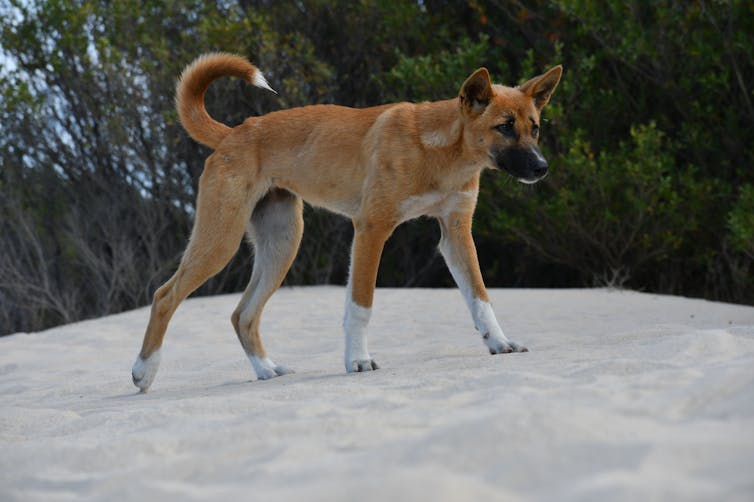
Better Results From Better Tests
The dingo (Canis dingo) has been in Australia for 5,000 to 11,000 years. But while dingoes are genetically distinct from domestic dogs, they can breed with them.
Scientific support for the idea that few pure dingoes remain in eastern Australia came from skull measurement tests developed in the 1980s and a DNA test developed in the 1990s.
Applying these approaches, Victoria listed dingoes as a threatened species after finding just 1% of animals killed in pest control programs were pure dingoes. Similarly in NSW “predation and hybridisation by feral dogs (Canis familiaris)” was listed as a key threatening process in 2009.
But DNA testing methods have improved since then. When we compared old and new DNA testing methods in our study, we found the original method frequently misidentified pure dingoes as hybrids. This is because the technique used a relatively small number of DNA markers, only 23. We used 195,000 DNA markers.
A DNA marker is a genetic change that can be used to study differences between species, populations or individuals. This is the same sort of technology used for human ancestry or family tree testing. In general, more DNA markers means more information about an individual and more accurate DNA test results.
The older method was also unable to account for geographic variation in dingoes. We found evidence of at least four populations or varieties of dingo in Australia, which we call: West, East, South and Big Desert.
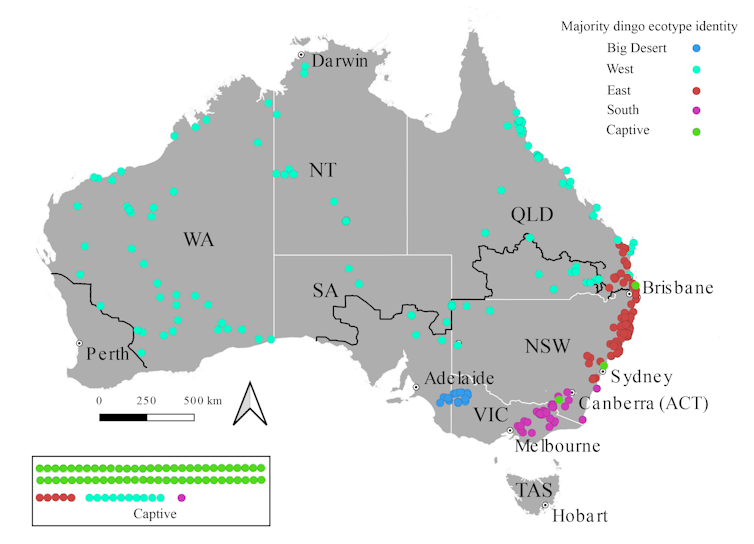
So when we looked at Victorian dingoes, nearly 90% of the animals we tested were pure dingoes. In NSW, over 60% of the animals we tested were pure dingoes and only two animals had less than 70% dingo DNA.
Dog ancestry was more common in NSW and Queensland dingo populations where there were intensive lethal control programs, such as aerial 1080 poison baiting, along with higher numbers of pet domestic dogs. One explanation is that lethal control programs carried out during the dingo breeding season may increase the risk of dingo-dog hybrids, as it does for wolves and coyotes in North America. Australian aerial baiting programs can kill up to 90% of the dingoes in an area, reducing the availability of mates for any remaining dingoes.
These findings have important implications for our knowledge of dingoes and how they are managed. We need to ensure public policy is built on robust, up-to-date knowledge of dingo identity and ancestry.
Wildlife managers and scientists should ensure that the DNA testing methods they use are accurate and fit for purpose. It is crucial that updated genetic surveys be carried out on dingoes, using the latest DNA methods to inform local dingo management plans.
Dingo conservation plans should consider the presence of geographic variation and the differing threats the four dingo populations may be facing.
Currently, dingoes fall into a grey area: because they are both a native animal and agricultural pest; and because their identity has become ambiguous due to the widespread adoption of the term wild dog.
Lethal control programs have been extended into conservation areas, including national parks, with the primary purpose of minimising livestock losses on neighbouring lands.
During 2020-2021, NSW dropped more than 200,000 1080 poisoned meat-baits from planes and helicopters to suppress “wild dogs”.
This year Victoria renewed its “wild dog bounty” program. It pays landholders A$120 per wild dog body part. Under the scheme, about 4,600 “wild dog” body parts have reportedly been redeemed since 2011.
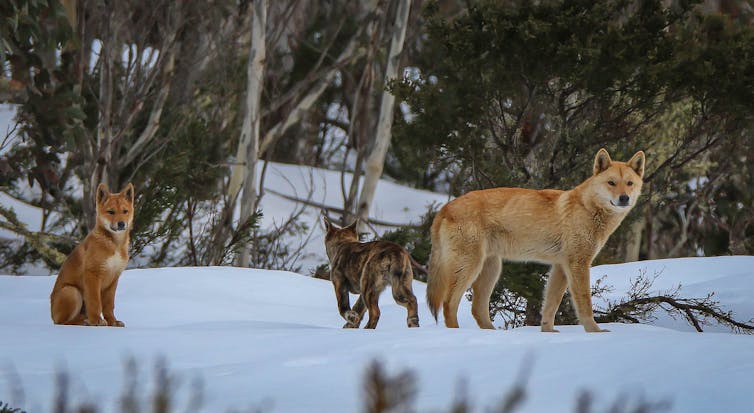
Restoring An Apex Predator
Our study shows the term “wild dog” is a misnomer. The animals being targeted for eradication as an “invasive” pest are native dingoes.
The threat of dingo-dog hybrids has also been exaggerated. While dingoes can pose a threat to some livestock, as apex predators they play an essential role in maintaining healthy ecosystems. The dingo keeps natural systems in balance by preying on large herbivores and excluding invasive predators such as feral cats and foxes. This in turn benefits small marsupials, birds and reptiles. We need to balance managing dingo impacts on agriculture against ensuring they can perform their vital environmental functions.
The term “wild dog” should be removed from public language and legislation. Dingo and feral dog should be used instead. This change in terminology would accurately reflect the fact that a vast majority of the wild canines in Australia are pure dingoes – and the hybrids are predominantly dingo in their genetic make-up.
A name change would also align with calls from Australia’s First Nations people to respect and acknowledge the dingo as a native and culturally significant species.![]()
Kylie M Cairns, Research fellow, UNSW Sydney; Mathew Crowther, Associate professor, University of Sydney, and Mike Letnic, Professor, Evolution and Ecology Research Centre, UNSW Sydney
This article is republished from The Conversation under a Creative Commons license. Read the original article.
Europe has lost over half a billion birds in 40 years. The single biggest cause? Pesticides and fertilisers

A trickle of studies warning that the enormous variety of living things on Earth is diminishing has turned into a flood. The evidence for these losses within regions and globally is undeniable. But data on biodiversity, and what is causing its decline, is still patchy – restricted to some causes, some places and some species. That isn’t the case for birds in Europe, however.
Birds have long fascinated amateur and professional scientists, and close cooperation across Europe has created a deep body of knowledge about their habits, needs and numbers. Some of the longest-running datasets of their kind concern birds which live at least part of their lives in Europe.
This data paints a grim picture: an estimated 550 million birds have been lost from Europe’s total population over the last 40 years or so. It is a shocking statistic, and tells us something profound about humanity’s broken relationship with nature.
Scientists know that biodiversity is under increasing pressure, especially from rapid changes in how land is used (from forest to farmland, for instance) and rising temperatures. But how different species respond to those pressures, which of them is the most important, and how conservationists can respond to alleviate them, have all remained contentious issues.
Taking advantage of high-quality data on birds, a new paper I wrote with French researchers analysed how 170 bird species have responded to human-induced pressures in Europe, using data collected at more than 20,000 monitoring sites across 28 countries over 37 years, including data from the UK.
We found that chemicals used on farms to control insects and plants seen as weeds that might reduce crop yields are depriving many birds of their main food source, and that this is the single biggest cause of their decline across Europe.
The Man-Made Drivers Of Change
We looked at four major sources of pressure on bird populations: agricultural intensification (measured by the high use of pesticides and fertilisers), climate change and its influence on temperatures, changes in forest cover, and urbanisation.

Modern farming methods were the biggest cause of decline for most bird populations – especially for those that feed on insects and other invertebrates, such as swifts, yellow wagtails, spotted flycatchers, wheatears and stonechats. How birds responded to changes in forest cover, urbanisation and climate change was much more variable and species-specific.
Between 1980 and 2016, common birds in Europe declined in abundance by a quarter. But numbers of farmland birds more than halved during this period. There were also declines in both woodland birds and urban dwellers, in northern, cold-preferring birds, and even in some southern, warm-preferring bird species – though the overall trend in this latter group of birds is one of steady growth.
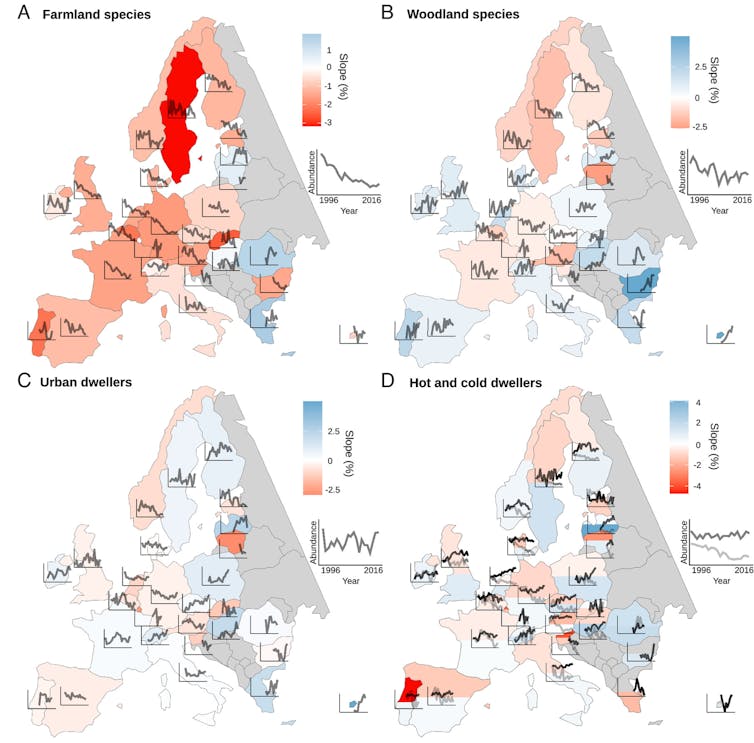
One of the study’s main findings is that the large use of pesticides and fertilisers on farms in particular is the most significant driver of bird population declines across Europe, including the UK. This does not come as a great surprise – many studies have come to this conclusion. But this is the first study to look at the man-made drivers in one go, using some of the best data available and modern statistical methods. The results are clear.
Agricultural practices began to change significantly after the second world war, as countries introduced measures to increase the output of farms. Yet such efforts to increase output, including an increasing reliance on pesticides and fertilisers, have come at a significant cost to birds and other wildlife – and critically, the overall health of the environment.
A recent UK government report found that the loss of biodiversity, alongside climate change, presented the greatest medium- to long-term threat to domestic food production. Biodiversity loss has consequences for society far beyond endangered species.
We believe that birds are mainly affected by pesticides and fertilisers through the loss of food, though these chemicals may be directly affecting their health too. Pesticides are designed to kill the insects and invertebrates that birds eat. Fertilisers change what kind of plants grow in an environment, often to the detriment of a wide variety of species. Invertebrates need this vegetation for food and shelter, and birds need it too – as well as the invertebrates.
Invertebrates are an important part of the diet of many bird species, but they are rocket fuel for growing chicks, which are the engine of population growth. Invertebrates are particularly important during the breeding period for over 80% of the birds in our study. The dramatic loss of insects we often hear about appears to be having a profound impact on birds.
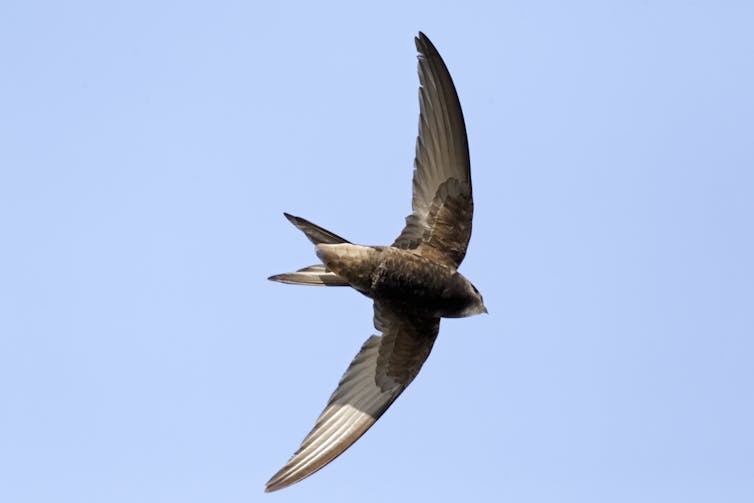
Nature-Friendly Food
The question is how best to respond. Nature is in trouble on farmland, and yet farmers can be a big part of the solution if they are supported by the right policies.
We need much greater support for nature-friendly farming practices, and a shift away from farming dominated by pesticides and inorganic fertilisers. This would be good for nature, for farmers and food production, for the climate, for consumers – and many progressive farmers are leading the way.
Our results also show the power of citizen science and cooperation across borders to advance science and better understand the natural world – and how to turn things around.
Now we need governments across the world to support land management schemes that reward nature-friendly farming, such as committing to managing at least 10% of farmland for nature, which in turn will help sustain or even boost farm yields.
But we also need wider food system reform, including nature-friendly diets. Retailers, suppliers and processors can all play their part to ensure a healthy environment that can feed us and bring back nature – with all the benefits for people this will bring.

Don’t have time to read about climate change as much as you’d like?
Get a weekly roundup in your inbox instead. Every Wednesday, The Conversation’s environment editor writes Imagine, a short email that goes a little deeper into just one climate issue. Join the 20,000+ readers who’ve subscribed so far.![]()
Richard Gregory, Honorary Professor of Genetics, Evolution & Environment, UCL
This article is republished from The Conversation under a Creative Commons license. Read the original article.
What should happen to native forests when logging ends? Ask Victoria’s First Peoples
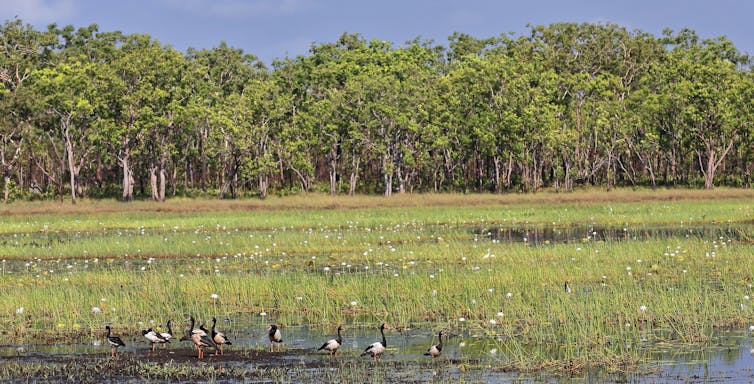
The end of native forest logging in Victoria announced last week was met with joy from conservationists and shock from timber industry workers.
To date, this has been how the story has been told: a win for the environment, a loss for jobs in the industry.
But there is an aspect of the story which hasn’t been told. The end of native timber harvesting is an opportunity for Victoria’s First Peoples to tend these forests again. Our voices have not been heard in this debate, but we have much to do on Forest Country.
You might think an end to logging naturally means a return to wilderness. But wilderness as an ideal is a concept which has undermined the rights of Indigenous people. For tens of thousands of years, we worked with Forest Country to ensure its health. When colonists first arrived the land was often described as resembling parklands. Colonisation took that away. In some places this change allowed wilderness to set in and some to became more fire prone.
The end of native timber harvesting gives us an opportunity to rethink what Forest Country looks like. It doesn’t have to be dense forests everywhere. We could bring back areas of open Country and reintroduce practices such as cultural burning. We urge decision-makers and the public to keep their minds open – and listen to First Peoples voices.
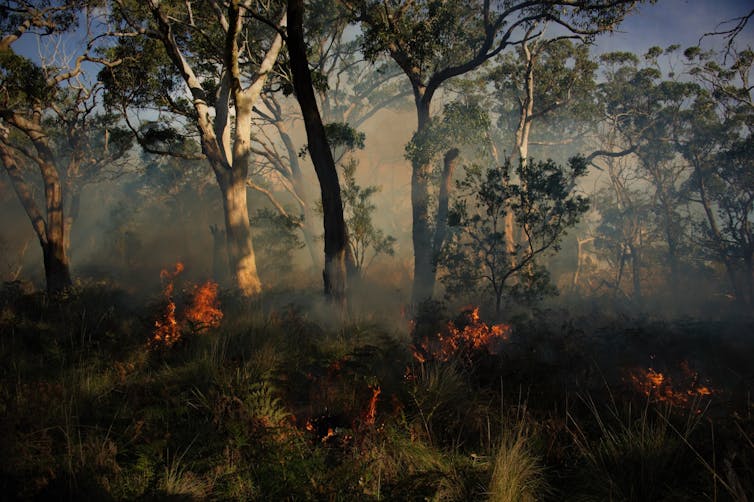
First Nations Voices Must Be Heard
The Victorian government’s promise to end native forest logging also included retraining and redundancy packages for workers. The government also announced an advisory panel would be formed to recommend areas for future protected areas – and for Traditional Owner management.
Conservationists are celebrating a win sought for decades. The damage done by logging on biodiversity has been significant, with once common species now endangered and mature forests now fragmented and dotted with young fire-prone regrowth.
It’s understandable this news has been framed around what it means for conservationists, nature and timber workers. As three Aboriginal Victorians, we acknowledge the important role for each of these groups in current and future forest management. But so far, the commentary has largely failed to include the voices of First Peoples in asserting their rights and obligations as they relate to Forest Country.
What Form Should These Forests Take?
When colonisers first came to the forests of Gippsland, their observations were of open forests with few but large trees. These forest systems were cared for in a way which favoured a grassy understorey and a fine-scale mosaic landscape shaped by fire used at different times. This system produced abundant resources for the land’s Traditional Custodians, while supporting abundant and diverse native wildlife.
To maintain Country in this way took regular applications of low-intensity fire. The knowledge of how to manage Country in this way was lore. Over generations, our ancestors created and maintained productive landscapes designed for comfortable and safe human habitation. Foremost in the minds of our old people was nurturing Country, passing on cultural knowledge and keeping alive the tangible and intangible cultural values of their ancestors.
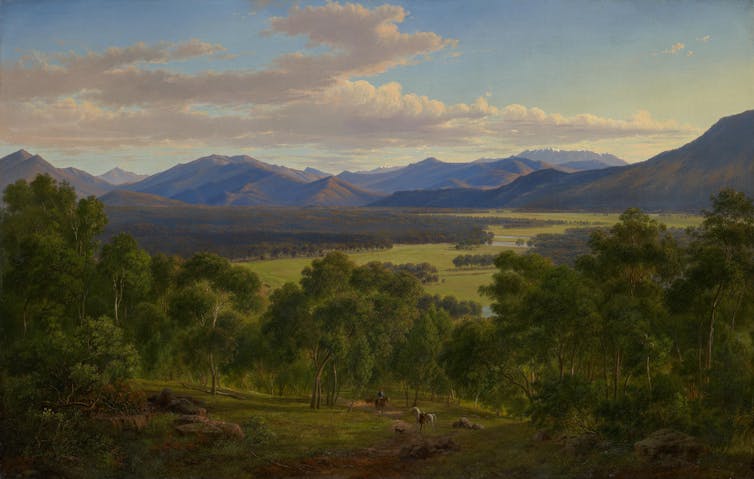
With the removal of the custodians from Country, the landscape thickened. Abundant saplings quickly replaced these open forests with impassable scrub. In many places, the landscape has become more prone to wildfire.
Plantations cemented this thickening further, by favouring high density forests of straight trees of the same age and usually the same species.
Colonisation affected Country differently across Australia. But many effects are similar across the continent. European-style land management coincides with species extinctions across the continent.
The destruction of cultural landscapes has been a major contributor to the loss of biodiversity and increase in catastrophic bushfires. It’s the reason for the poor health of Country.
What Would Real First Nations Involvement Look Like?
To begin the process of repair, Victoria’s First Peoples have partnered with the state government to create strategies which speak to healing Country, bringing back cultural landscapes and cultural burning.
At present, Traditional Owner groups across the state are working towards developing their own strategies to manage their Country. This is producing detailed planning and productive on-ground work. We invite the state to invest in our work planning and caring for Country.
Like the government, we agree that the end to logging doesn’t mean walking away from forest management.
Leaving our forests to themselves is not caring for Country. If we did that, it would entrench the persistent wilderness myth that all forests look after themselves. It would also be an avoidance of our responsibility to care for this land. We cannot and should not be shut out from these forests.
To return Forest Country to health doesn’t mean leaving it alone. In some cases, we may need to thin trees or use cool burns to bring back open Country. This will take careful planning and hard work. It will take people working on Country, informed by Country.
The shift will also create economic opportunities for First Peoples in taking on custodianship of these landscapes. The end to state sponsored logging is an excellent opportunity for the government to meet its commitment to self-determination of First Peoples.
When the government creates its panel of advisors on what to do with state forests post-logging, it must ensure First Peoples voices are strongly represented – and that the panel advises on tenure and ownership of the land and the future shape of these forests. We would be dismayed if these voices were not heard until after significant decisions such as new national parks had been made.
What might Victorian forests of the future look like? There’s no simple answer, because Forest Country is as diverse as the cultures of the Traditional Custodians who care for it.
But we can say that they should be shaped by the thoughtful stewardship of Victorians, with First Peoples cultural knowledge and practice at the fore. At the heart of this stewardship must be the love of Country – and care for community. ![]()
Jack Pascoe, Research fellow, The University of Melbourne; Matthew Shanks, Director, Cultural Land Management at Taungurung Land and Waters Council, Indigenous Knowledge, and Michael-Shawn Fletcher, Professor in Biogeography, The University of Melbourne
This article is republished from The Conversation under a Creative Commons license. Read the original article.
A sustainable Australia depends on what happens in our cities – that’s why we need a national urban policy
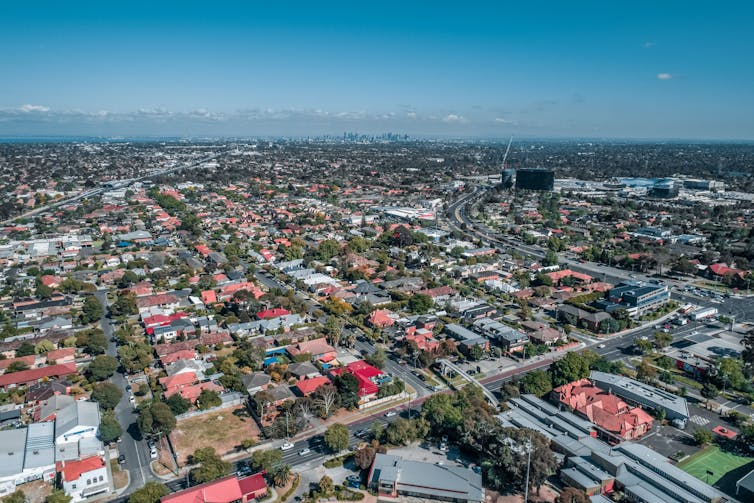
Australia has not had a national urban policy since the Rudd government. A troika of Liberal PMs followed. Tony Abbott wasn’t interested. Malcolm Turnbull didn’t quite live up to the hype but delivered cross-governmental City Deals and the Smart Cities and Suburbs Program. Scott Morrison at best presided over a business-as-usual approach lacking any resolve, urgency or innovation.
Will this Labor government do any better? Australian cities and regions were not front and centre in the 2022 federal election campaign. But there were signs a Labor government would reinstate a concern for urban policy issues.
The federal budget confirmed the government’s focus on urban policy. It set aside funding for a “national approach for sustainable urban development” and a “cities program”. Last week the government appointed the expert members of the Urban Policy Forum announced in the budget.
These are vehicles for delivering a promised National Urban Policy. The government says this policy “will bring together a vision for sustainable growth in our cities”.
Why Focus On Cities?
Two in three Australians live in a capital city. Our 21 largest cities are home to 80% of the population.
Cities account for 80% of economic activity in Australia. As globally connected hubs, they are crucial sites for community, commerce, infrastructure, biodiversity, governance and democratic processes. Our cities are central to meeting the challenges of a changing climate.
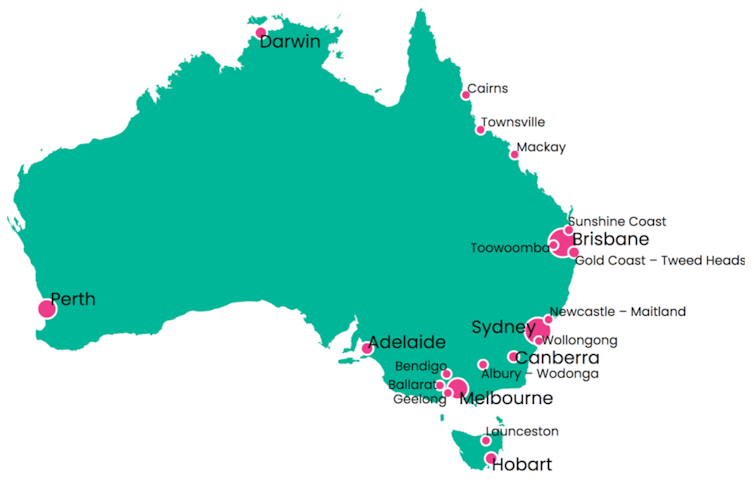
Prime Minister Anthony Albanese has skin in the game. He was the minister for infrastructure and transport in the Gillard government. He oversaw the first truly national urban policy, Our Cities, Our Future, in 2011.
In 2021, Albanese declared that “cities policy has been one of the abiding passions of my time in public life”. He foreshadowed a new national policy framework.
The budget papers specifically refer to the National Cabinet agreement on April 28 on national priorities. Among these is “Better Planning for Stronger Growth reforms to support a national approach to the growth of cities, towns, and suburbs”.
The budget commits nearly A$400 million over four years in new grants and investments in “Thriving Suburbs” and “Urban Precincts and Partnerships”. Some $11 million goes to a Cities and Suburbs Unit to deliver a National Urban Policy. The policy is required to:
address urgent challenges facing our major cities – from equitable access to jobs, homes and services, to climate impacts and decarbonisation.

An Overdue Development
Urban development has been “undervalued in national discussion” globally, not only in Australia. But in recent years various bodies, inquiries and forums have pushed for a new-look national urban policy.
The Planning Institute of Australia has long called for a coherent governance framework for spatial plans, infrastructure, growth management and urban renewal. Without a national cities plan, a 2018 report by the institute said, “all jurisdictions will be disadvantaged when making resource allocation decisions and planning for basic enabling infrastructure”.
In the same year, a federal parliamentary inquiry into the Australian government’s role in city development called for “a national plan of settlement, providing a national vision for our cities and regions across the next 50 years”.
In 2019, Future Earth Australia, based at the Australian Academy of Sciences, advanced a ten-year national strategy for sustainable cities and regions. This strategy is aligned with the Australian achievement of the UN Sustainable Development Goals.
New Ideas For Australian Cities And Regions
We must take seriously the economic, social and environmental impacts of long-term population growth and development. To become a more equitable and sustainable country, action on the uneven experiences of Australian cities and regions must be a government priority.
In 2021, an Australian Academy of Social Sciences workshop on Australian Urban Policy: Achievements, Failures, Challenges was undertaken jointly at the City Futures Research Centre, UNSW, and Centre for Urban Research, RMIT University. More than 50 researchers and practitioners explored the many issues competing for urban policy attention at the national level.
Key areas included water, climate change, Indigeneity, transport, migration, population settlement and new cities. Urban green space, biodiversity, digital technologies, economic productivity, social inclusion and affordable housing supply were also identified as issues that cut across national policy agendas.
Constitutional constraints mean states must play a leading role in national urban policy. Fortunately, these constraints don’t rule out inter-governmental partnerships. There are many, often poorly integrated policies, programs and initiatives across all levels of government.
There was consensus at the workshop on the need to transcend the political ideology and expediency that have led to fragmented urban policies. A different kind of national politics focused on sustainability, resilience and regeneration is required.
The “secret” to sustainability lies in an integrated national framework of policies and strategies for city-regions. All three tiers of government need to buy into it.

National Urban Policy Redux
There is a “back to the future” quality in some of the Albanese moves. They re-invent Rudd-Gillard initiatives, and Turnbull’s City Deals remain. Action on affordable housing supply and urban inequalities has been less forceful to date.
Sitting alongside what seem like far-reaching environmental actions, including a new Net Zero Authority, the revival of urban policy at the national level is welcome. So too would be the discussion, consultation and research required to secure a resilient and sustainable future.
A national urban policy offers opportunities for cities, towns and regions. It’s also essential if Australia is to meet its national and international obligations, notably the UN’s 2030 Agenda for Sustainable Development.
Australian Urban Policy: Prospects and Pathways is a report on the UNSW-RMIT workshop edited by the authors and with over 30 contributors. It will be published by ANU Press in late 2023.![]()
Robert Freestone, Professor of Planning, School of Built Environment, UNSW Sydney; Bill Randolph, Professor, City Futures Research Centre, Faculty of the Built Environment, UNSW Sydney, and Wendy Steele, Interim Director, Urban Futures Enabling Impact Platform, and Professor in Sustainability and Urban Policy, Centre for Urban Research, RMIT University
This article is republished from The Conversation under a Creative Commons license. Read the original article.
It’s not just climate – we’ve already breached most of the Earth’s limits. A safer, fairer future means treading lightly

People once believed the planet could always accommodate us. That the resilience of the Earth system meant nature would always provide. But we now know this is not necessarily the case. As big as the world is, our impact is bigger.
In research released today, an international team of scientists from the Earth Commission, of which we were part, identified eight “safe” and “just” boundaries spanning five vital planetary systems: climate change, the biosphere, freshwater, nutrient use in fertilisers and air pollution. This is the first time an assessment of boundaries has quantified the harms to people from changes to the Earth system.
“Safe” means boundaries maintaining stability and resilience of our planetary systems on which we rely. “Just”, in this work, means boundaries which minimise significant harm to people. Together, they’re a health barometer for the planet.
Assessing our planet’s health is a big task. It took the expertise of 51 world-leading researchers from natural and social sciences. Our methods included modelling, literature reviews and expert judgement. We assessed factors such as tipping point risks, declines in Earth system functions, historical variability and effects on people.
Alarmingly, we found humanity has exceeded the safe and just limits for four of five systems. Aerosol pollution is the sole exception. Urgent action, based on the best available science, is now needed.
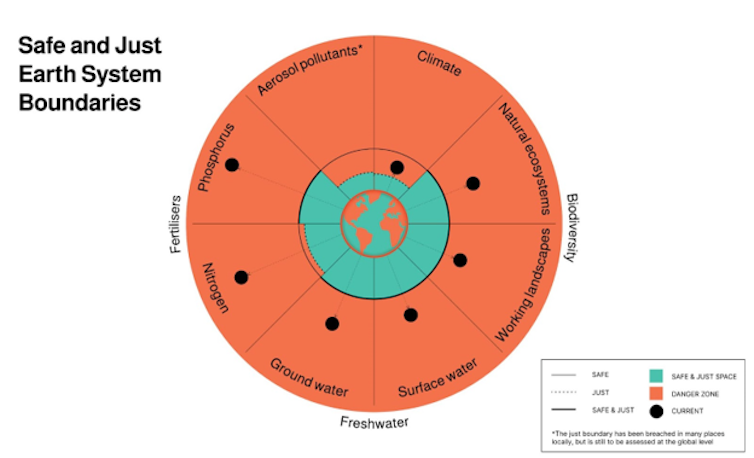
So, What Did We Find?
Our work builds on the influential concepts of planetary boundaries by finding ways to quantify what just systems look like alongside safety.
Importantly, the safe and just boundaries are defined at local to global spatial scales appropriate for assessing and managing planetary systems – as small as one square kilometre in the case of biodiversity. This is crucial because many natural functions act at local scales.
Here are the boundaries:
1. Climate boundary – keep warming to 1℃
We know the Paris Agreement goal of 1.5℃ avoids a high risk of triggering dangerous climate tipping points.
But even now, with warming at 1.2℃, many people around the world are being hit hard by climate-linked disasters, such as the recent extreme heat in China, fires in Canada, severe floods in Pakistan and droughts in the United States and the Horn of Africa.
At 1.5℃, hundreds of millions of people could be exposed to average annual temperatures over 29℃, which is outside the human climate niche and can be fatal. That means a just boundary for climate is nearer to 1°C. This makes the need to halt further carbon emissions even more urgent.
2. Biosphere boundaries: Expand intact ecosystems to cover 50-60% of the earth
A healthy biosphere ensures a safe and just planet by storing carbon, maintaining global water cycles and soil quality, protecting pollinators and many other ecosystem services. To safeguard these services, we need 50 to 60% of the world’s land to have largely intact natural ecosystems.
Recent research puts the current figure at between 45% and 50%, which includes vast areas of land with relatively low populations, including parts of Australia and the Amazon rainforest. These areas are already under pressure from climate change and other human activity.
Locally, we need about 20-25% of each square kilometre of farms, towns, cities or other human-dominated landscapes to contain largely intact natural ecosystems. At present, only a third of our human-dominated landscapes meet this threshold.
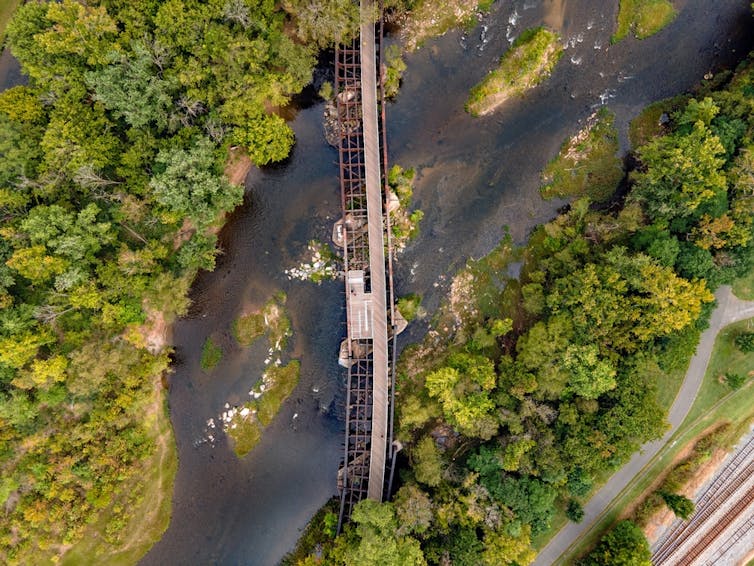
3. Freshwater boundaries: Keep groundwater levels up and don’t suck rivers dry
Too much freshwater is a problem, as unprecedented floods in Australia and Pakistan show. And too little is also a problem, with unprecedented droughts taking their toll on food production.
To bring fresh water systems back into balance, a rule of thumb is to avoid taking or adding more than 20% of a river or stream’s water in any one month, in the absence of local knowledge of environmental flows.
At present, 66% of the world’s land area meets this boundary, when flows are averaged over the year. But human settlement has a major impact: less than half of the world’s population lives in these areas. Groundwater, too, is overused. At present, almost half the world’s land is subject to groundwater overextraction.
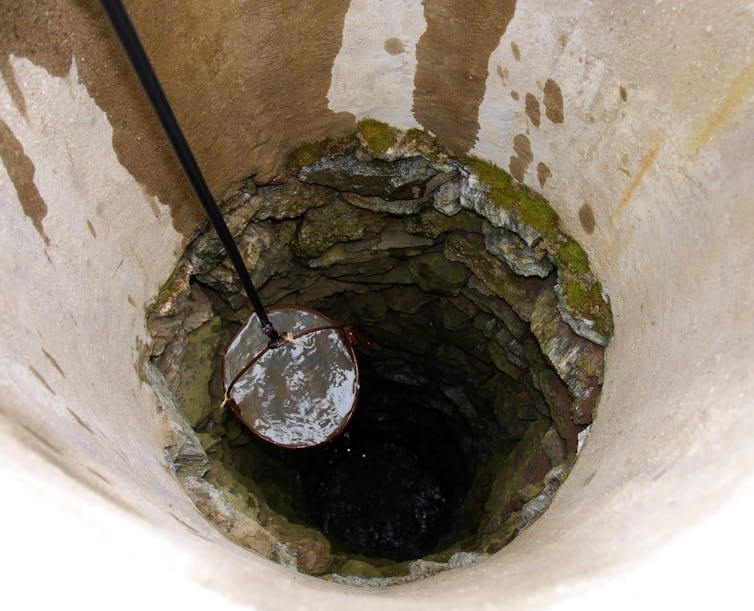
4. Fertiliser and nutrient boundaries: Halve the runoff from fertilisers
When farmers overuse fertilisers on their fields, rain washes nitrogen and phosphorus runoff into rivers and oceans. These nutrients can trigger algal blooms, damage ecosystems and worsen drinking water quality.
Yet many farming regions in poorer countries don’t have enough fertiliser, which is unjust.
Worldwide, our nitrogen and phosphorus use are up to double their safe and just boundaries. While this needs to be reduced in many countries, in other parts of the world fertiliser use can safely increase.
5. Aerosol pollution boundary: Sharply reduce dangerous air pollution and reduce regional differences
New research shows differences in concentration of aerosol pollutants between Northern and Southern hemispheres could disrupt wind patterns and monsoons if pollutant levels keep increasing. That is, air pollution could actually upend weather systems.
At present, aerosol concentrations have not yet reached weather-changing levels. But much of the world is exposed to dangerous levels of fine particle pollution (known as PM 2.5) in the air, causing an estimated 4.2 million deaths a year.
We must significantly reduce these pollutants to safer levels – under 15 micrograms per cubic metre of air.
We Must Act
We must urgently navigate towards a safe and just future, and strive to return our planetary systems back within safe and just boundaries through just means.
To stop human civilisation from pushing the Earths’s systems out of balance, we will have to tackle the many ways we damage the planet.
To work towards a world compatible with the Earth’s limits means setting and achieving science-based targets. To translate these boundaries to actions will require urgent support from government to create regulatory and incentive-based systems to drive the changes needed.
Setting boundaries and targets is vital. The Paris Agreement galvanised faster action on climate. But we need similar boundaries to ensure the future holds fresh water, clean air, a planet still full of life and a good life for humans.
We would like to acknowledge support from the Earth Commission, which is hosted by Future Earth, and is the science component of the Global Commons Alliance![]()
Steven J Lade, Resilience researcher at Australian National University, Australian National University; Ben Stewart-Koster, Senior research fellow, Griffith University; Stuart Bunn, Professor, Australian Rivers Institute, Griffith University; Syezlin Hasan, Research fellow, Griffith University, and Xuemei Bai, Distinguished Professor, Australian National University
This article is republished from The Conversation under a Creative Commons license. Read the original article.
‘An exciting possibility’: scientists discover markedly different kangaroos on either side of Australia’s dingo fence
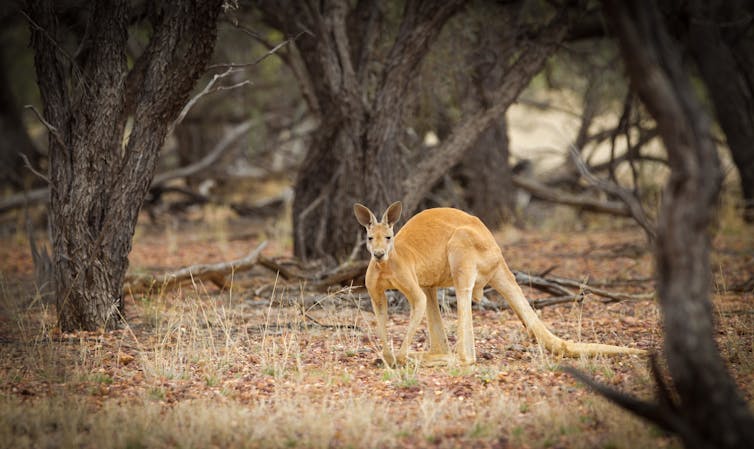
Australia’s dingo fence is an internationally renowned mega-structure. Stretching more than 5,600 kilometres, it was completed in the 1950s to keep sheep safe from dingoes. But it also inadvertently protects some native species.
This makes the fence an unintentional experiment in the relationship between predators and prey. Our new research examined how the fence affects a favourite prey of the dingo: red kangaroos.
We found young kangaroos on the side exposed to dingoes grew more quickly than their protected counterparts. This has potentially big repercussions for the health of these juveniles.
The merits of the dingo fence are hotly debated, and there have been calls to pull it down or move it. That’s why we must seek a better understanding of how the fence affects the animals that live along it.
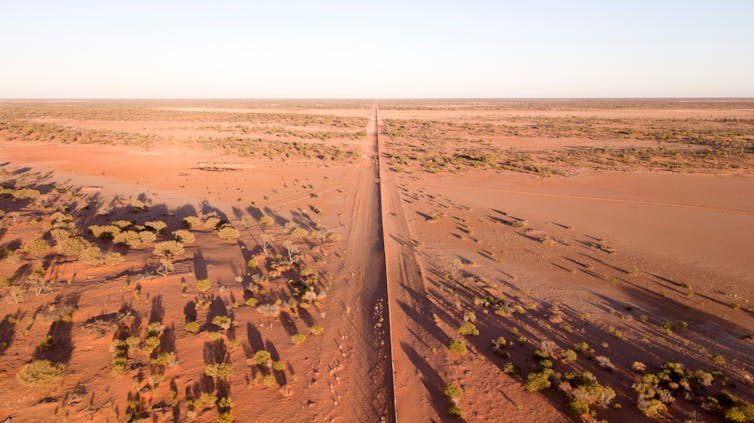
‘Stressful’ Lives
The dingo fence, formally known as the “wild dog barrier fence”, runs through Queensland, New South Wales and South Australia. It protects sheep and cattle to the southeast.
Extensive fencing can fragment habitats and disrupt ecosystems. Maintaining the fence costs about A$10 million per year. For these and other reasons, some have suggested the fence be pulled down.
But how would removing the fence affect kangaroos that have lived without dingoes for up to 70 years? Our research sought to answer this question.
We assessed 166 red kangaroos from two isolated populations on either side of the fence in far northwest NSW. We did this using data collected as part of a licensed shooting program. We compared population size, age structure, sex ratio, growth rate and skull shape.
We expected kangaroos north of the fence – those hunted by dingoes – to differ from their dingo-free cousins to the south. That’s because their lives are more stressful, especially for young kangaroos and females that are killed by dingoes more often than adult males.
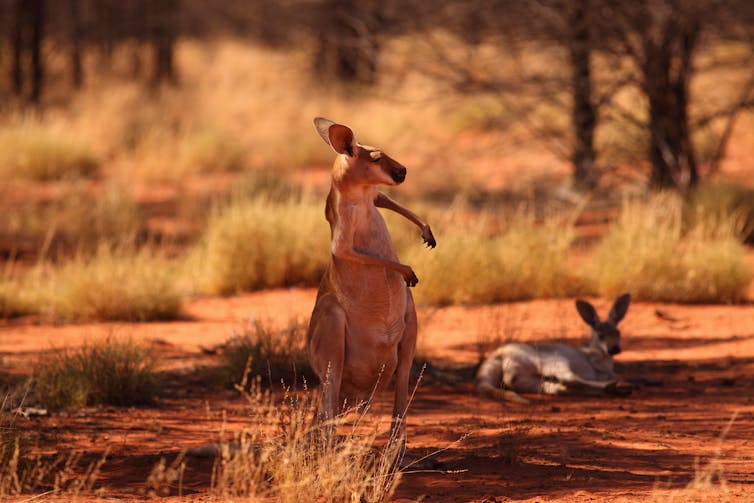
What We Found
As anticipated, we found more young and female kangaroos in the dingo-protected population south of the fence. But the story is more complex than that.
Young kangaroos south of the fence, up to about the age of four years, grew more slowly than those in the north. They were substantially smaller and lighter than their dingo-exposed counterparts.
This raises an exciting possibility: that the growth of kangaroos south of the fence has slowed in the absence of the dingo threat.
But maybe there was just more plant food available in the north, where there are fewer kangaroos compared to the south. Was this the reason the northern kangaroos grew more quickly?
As it turns out, no. We assessed the vegetation on each side of the fence using a decade of satellite measurements. We found there was probably less, not more, food overall for kangaroos in the north compared to the south.
More detailed investigation is needed into whether the types of plants differed on each side of the fence. But our results suggest the different growth rates were driven by predators, not food availability.
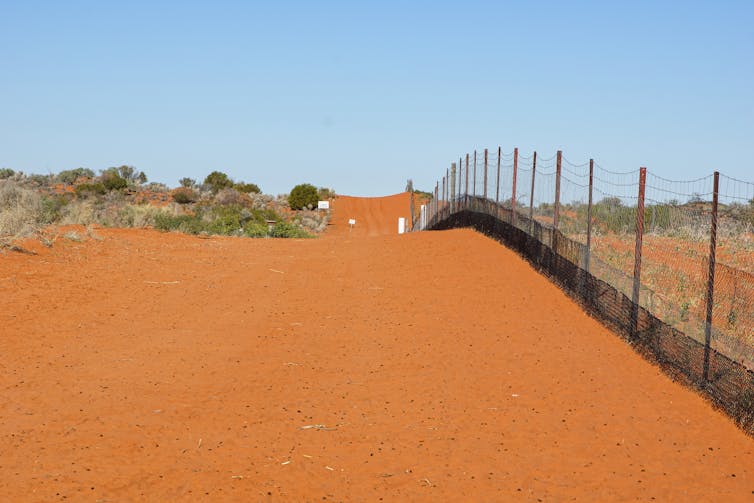
This Raises Important Questions
The differences between populations are even more striking considering the dingo fence in the area we studied was in disrepair until 1975. Before then, dingoes and kangaroos probably moved freely. So the changes we observed could have come about in as little as 17 kangaroo generations.
This would be unusually fast for an evolutionary adaptation. Instead, we suspect it’s the result of a more immediate response to the absence of dingoes, such as lower concentrations of stress-related hormones. These affect the health of mammals, and might have affected kangaroo growth rates in this case.
After about the age of four, the protected kangaroos had caught up and were the same size as their unprotected counterparts. But the unprotected kangaroos would have invested a lot more bodily resources into growing so quickly.
This would have left less energy for the animals to develop important functions such as their immune or reproductive systems. Or they might have had less fat reserves.
Conversely, protected kangaroos might have been healthier, or more fertile, because of their slower growth rates.
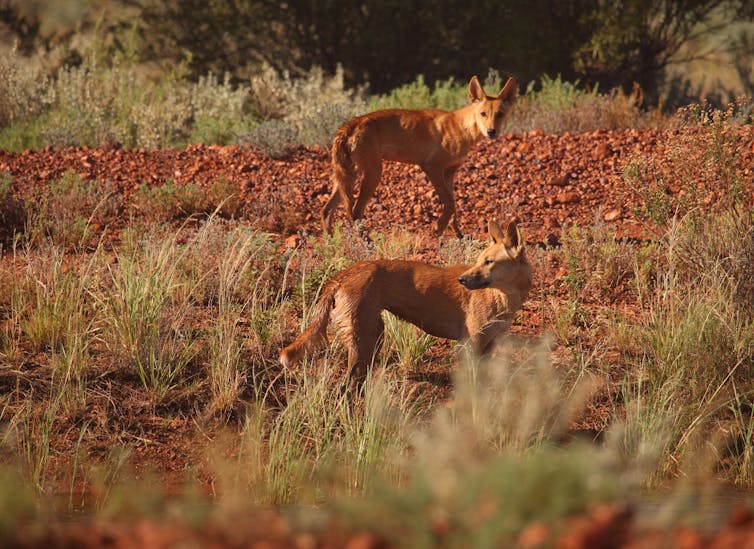
Understanding The Mammal Response
Our study involved only a single sample at one point in time. But it’s the first to comprehensively assess differences in a dingo prey species on either side of a fence.
Our results provide an insight into how prey populations might fare if the dingo fence is removed. But the implications are potentially even broader.
We must now investigate whether other native mammal species share similar differences across the fence. If so, this could help us predict how animals elsewhere in Australia are coping with rapid environmental change.![]()
Vera Weisbecker, Associate Professor, Flinders University; Corey J. A. Bradshaw, Matthew Flinders Professor of Global Ecology and Models Theme Leader for the ARC Centre of Excellence for Australian Biodiversity and Heritage, Flinders University; Frédérik Saltré, Research Fellow in Ecology for the ARC Centre of Excellence for Australian Biodiversity and Heritage, Flinders University, and Rex Mitchell, Postdoctoral Fellow, Flinders University
This article is republished from The Conversation under a Creative Commons license. Read the original article.
3 little-known reasons why plastic recycling could actually make things worse
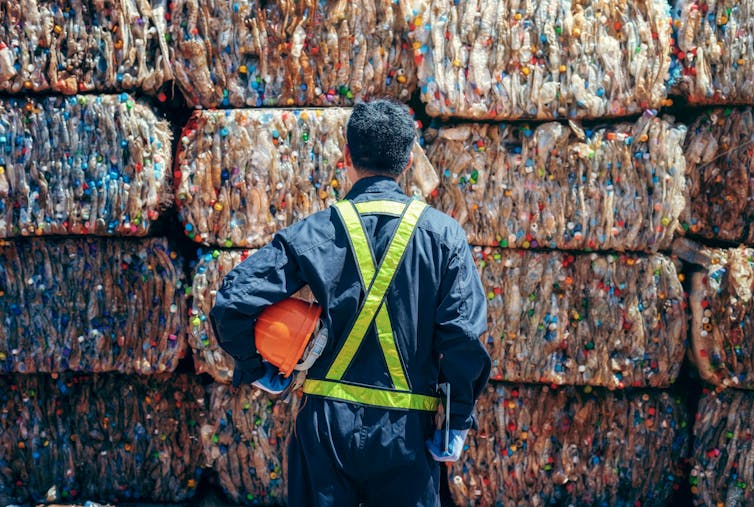
This week in Paris, negotiators from around the world are convening for a United Nations meeting. They will tackle a thorny problem: finding a globally binding solution for plastic pollution.
Of the staggering 460 million tonnes of plastic used globally in 2019 alone, much is used only once and thrown away. About 40% of plastic waste comes from packaging. Almost two-thirds of plastic waste comes from items with lifetimes of less than five years.
The plastic waste that escapes into nature persists and breaks up into smaller and smaller pieces, eventually becoming microplastics. Plastics now contaminate virtually every environment, from mountain peaks to oceans. Plastic has entered vital systems such as our food chain and even the human blood stream.
Governments and industry increasingly acknowledge the urgent need to reduce plastic pollution. They are introducing rules and incentives to help businesses stop using single-use plastics while also encouraging collection and recycling.
As a sustainability researcher, I explore opportunities to reduce plastic waste in sectors such as tourism, hospitality and meat production. I know how quickly we could make big changes. But I’ve also seen how quick-fix solutions can create complex future problems. So we must proceed with caution.
Plastic Avoidance Is Top Priority
We must urgently eliminate waste and build a so-called “circular economy”. For plastics, that means reuse or recycling back into the same type of plastic, not lower grade plastic. The plastic can be used to make similar products that then can be recycled again and again.
This means plastics should only be used where they can be captured at their end of life and recycled into a product of the same or higher value, with as little loss as possible.
Probably the only example of this to date is the recycling of PET (polyethylene terephthalate) soft-drink bottles in Norway and Switzerland. They boast recovery rates of 97% and 95% respectively.
The waste management pyramid below shows how to prioritise actions to lessen the waste problem. It is particularly relevant to single-use plastics. Our top priority, demanding the biggest investment, is prevention and reduction through redesign of products.
Where elimination is not yet achievable, reuse solutions or recycling to the same or higher-level products can be sought to make plastics circular.
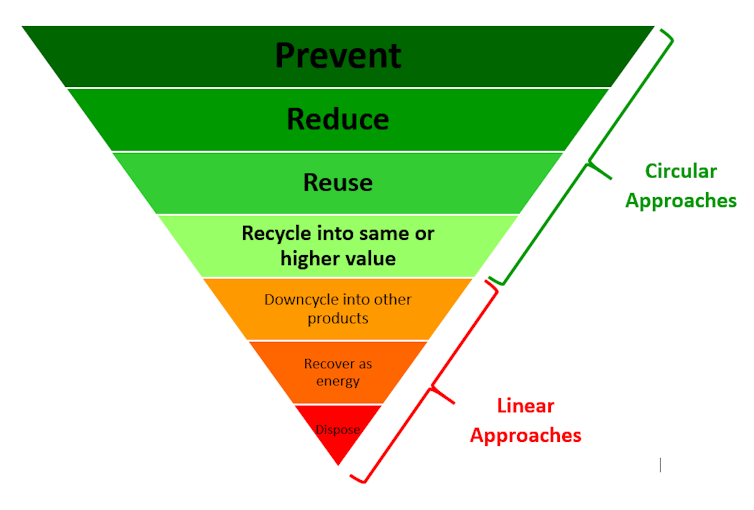
Unfortunately, a lack of high-quality reprocessing facilities means plastic waste keeps growing. In Australia, plastic is largely “downcycled”, which means it is recycled into lower quality plastics.
This can seem like an attractive way to deal with waste-plastic stockpiles, particularly after the recent collapse of soft-plastics recycler RedCycle. But downcycling risks doing more harm than good. Here are three reasons why:
1. Replacing Wood With Recycled Plastics Risks Contaminating Our Wildest Natural Spaces
An increasing number of benches, tables, bollards and boardwalks are being made from recycled plastic. This shift away from timber is touted as a sustainable step - but caution is warranted when introducing these products to pristine areas such as national parks.
Wood is naturally present in those areas. It has a proven record of longevity and, when degrading, does not introduce foreign matter into the natural system.
Swapping wood for plastic may introduce microplastics into the few remaining places relatively free of them. Replacing wood with downcycled plastics also risks plastic pollution through weathering or fire.
2. Taking Circular Plastics From Their Closed Loop To Meet Recycled-Content Targets Creates More Waste
Clear PET bottles used for beverages are the most circular plastic stream in Australia, approaching a 70% recovery rate. When these bottles are recycled back into clear PET bottles, they are circular plastics.
However, the used PET bottles are increasingly being turned into meat trays, berry punnets and mayonnaise jars to help producers meet the 2025 National Packaging Target of 50% recycled content (on average) in packaging.
The problem is the current industry specifications for plastics recovery allow only downcycling of these trays, punnets and jars. This means that circular PET is removed from a closed loop into a lower-grade recovery stream. This leads to non-circular downcycling and more plastic sent to landfill.
3. Using “Compostable” Plastics In Non-Compostable Conditions Creates Still More Plastic Pollution
Increasingly, plastics are labelled as compostable and biodegradable. However, well-intended use of compostable plastics can cause long-term plastic pollution.
At the right temperature with the right amount of moisture, compostable plastics breakdown into soil. But if the conditions are not “just right”, they won’t break down at all.
For example, when a landscape architect or engineer uses a “compostable” synthetic fabric instead of a natural alternative (such as coir or jute mats) they can inadvertently introduce persistent plastics into the environment. This is because the temperature is not hot enough for the synthetic mat to break down.
We must also differentiate between “home compostable” and “commercially compostable”. Commercial facilities are more effective at composting because they operate under more closely controlled conditions.
Learning From Our Mistakes
Clearly, we need to reduce our reliance on plastics and shift away from linear systems – including recycling into lower-grade products.
Such downcycling may have a temporary role in dealing with existing plastic in the system while circular recycling capacity is being built. But we must not develop downcycling “solutions” that need a long-term stream of plastic waste to remain viable.
What’s more, downcycling requires constantly finding new markets for their lower-grade products. Circular systems are more robust.
So, to the negotiators in Paris, yes the shift to a circular plastics economy is urgent. But beware of good intentions that could ultimately make things worse.![]()
Pascal Scherrer, Senior Lecturer, Faculty of Business, Law and Art, Southern Cross University
This article is republished from The Conversation under a Creative Commons license. Read the original article.
Photos from the field: spying on Antarctic moss using drones, MossCam, smart sensors and AI
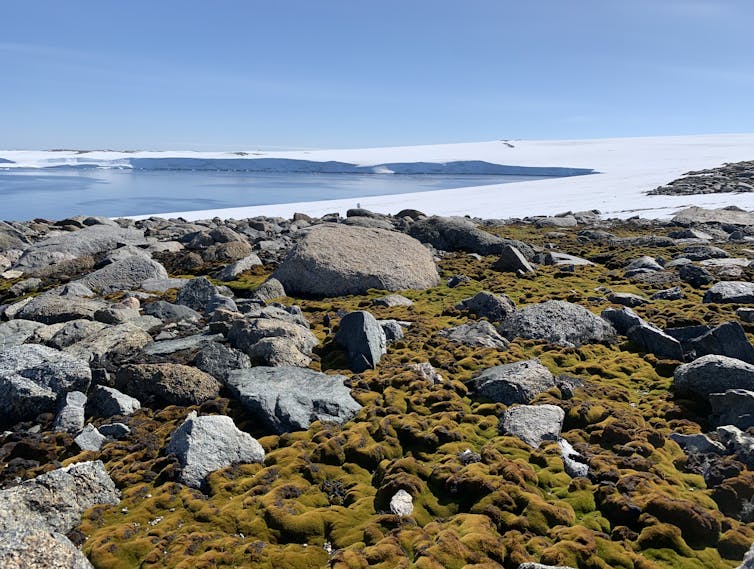
The Antarctic continent conjures visions of white ice and blue sky. But not far from Australia’s Casey Station, 3,880km due south of Perth, moss beds emerge verdant and green.
Sadly, the health of these moss beds is declining due to changing climate conditions, ozone depletion and heatwaves. Yet our understanding of the problem is limited. Conducting research in Antarctica is difficult. Periods of data collection are short, and there can be years between each research opportunity. Fortunately, new technology offers solutions.
In December 2022, we travelled to Casey Station. We spent two months in the field – combining our skills in biology, flying drones, programming and artificial intelligence – to learn more about the moss and find better ways to remotely monitor biological changes.
We mapped large moss beds and trialled a new sensor system that can deliver continuous, year-round moss data. While this research is ongoing, we’re thrilled to share the early results with you here.
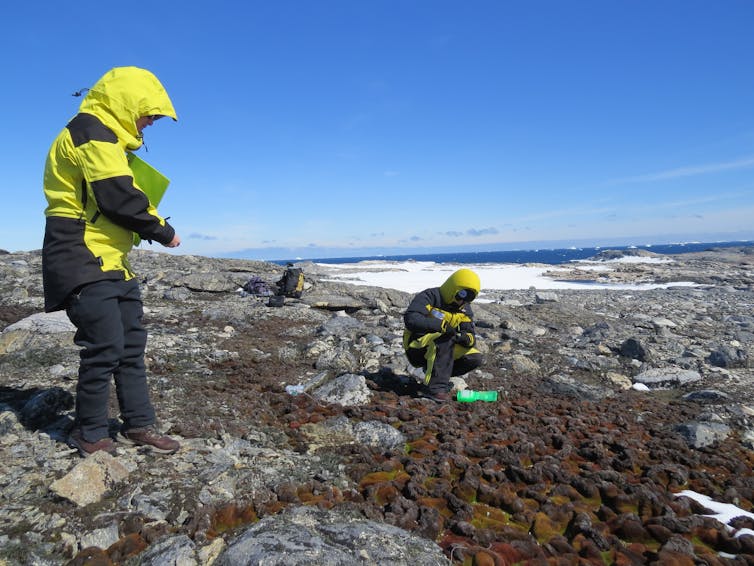
Miniature Forests, Bustling With Life
Plants need sunlight, warmth and liquid water. Antarctic plants face months of darkness, freezing temperatures and drought from frozen water – but moss has adapted to this hostile environment.
Moss is the dominant plant life in Antarctica. It provides habitat for invertebrates, microbes and fungi, which make up more than 99% of Antarctica’s land biodiversity. The moss beds resemble miniature forests, bustling with life.
Antarctic moss creates its own warm microclimate, using pigments to absorb sunlight. This warmth aids photosynthesis and helps the mosses to melt snow to obtain liquid water. The tiny hills and valleys across moss beds determine the amount of light mosses receive and creates differences in their microclimates and health.
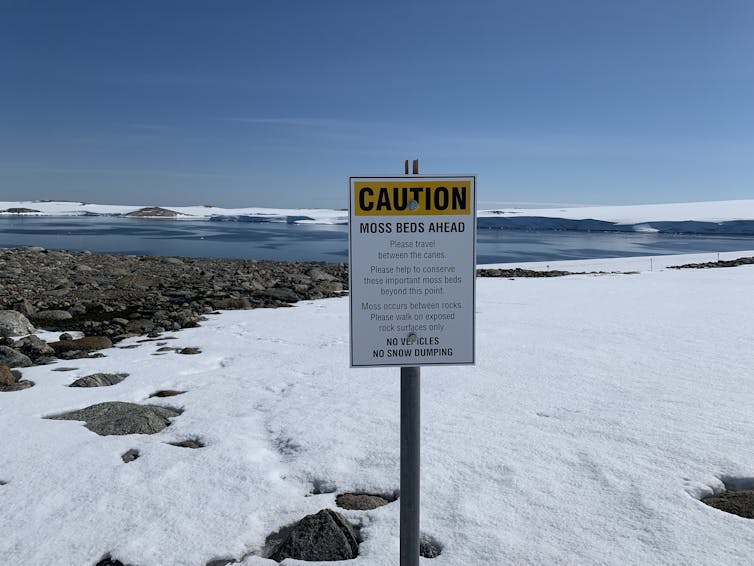
Once we reached the moss, we’d carefully balance on rocks to take samples and place data loggers. These consisted of four sensors that measured canopy temperatures at different positions in the moss bed. We also measured photosynthesis and collected moss samples for pigment analysis, which indicates health and stress levels.
The below photo depicts a moss bed with our equipment attached. You can see the complex micro-topography and a mosaic of healthy and stressed mosses. Healthy moss is green and velvety. Stressed mosses are red and eventually turn grey.
Mosses growing just centimetres apart can experience vastly different microclimates. In the photo below, some mosses had warmed up to 19℃ (next to the red marker), while only about 30cm away the moss was at 0.6℃ (next to the white marker).
Collecting this data enables us to explore connections between the physical structure of the moss beds, microclimates and indicators of moss health.
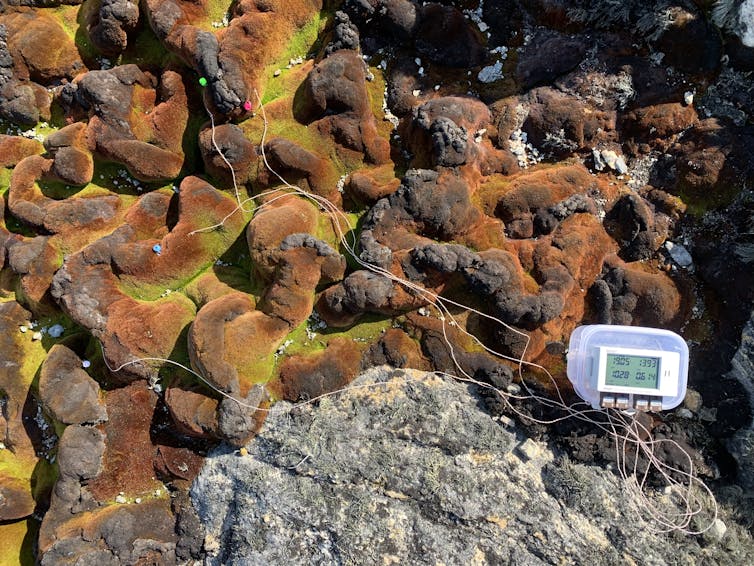
Smart Sensors, Cameras And Transmitters
While in Antarctica, we also tested the first prototype of an intelligent, autonomous and long-term sensing platform. It offers scientists more information than previous data-collection devices as it can collect and transmit data over an extended period outside regular summer field campaigns, including winter time.
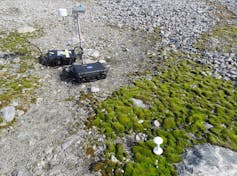
The prototype monitored the moss bed near Casey Station for a month and a half. Its sensors captured light intensity, ambient air temperature and humidity, moss canopy temperature and, finally, energy exchanged between soil and air. A webcam, affectionately nicknamed MossCam, captured regular images of the moss bed.
We also installed the first antenna in Antarctica for the LoRaWAN wireless network. This network is low power, long range and free to use. This allowed us to send data back to Australia in near real-time and display it on a website dashboard that is visible to Australians only.
After some early bug fixes, the platform performed better than expected. We brought it home at the end of the season for further refinement and deployment next season.
Drones And Hyperspectral Imaging
We sent drones on 25 flights, collecting data from two Antarctic Specially Protected Areas (ASPAs 135 and 136).
Operating drones in the Antarctic presents significant challenges. The proximity to the magnetic pole disturbs the GPS navigation, and strong winds make it difficult to fly. Severe cold reduces battery life – and it’s also tough on the operator’s fingers. We customised drones with RTK (real-time kinematics, a technique to eliminate position errors) GPS, multiple redundancies and battery warmers to increase their resilience to harsh conditions.
Our drones could capture 5,000-10,000 images on each flight. They were also equipped with high-tech sensors. These sensors are programmed to record “spectral signatures”, which is a term we use to describe a kind of optical identity or visual “DNA” that differentiates landscape features like moss, rock and snow within the image.
These images will be stitched together and mapped to their ground coordinates. Using machine learning, we will train a model to identify vegetation, including moss, lichen and cyanobacteria. We will also develop vegetation and hydrology maps, 3D fly-throughs and virtual reality experiences to support decision-making around conservation and management.
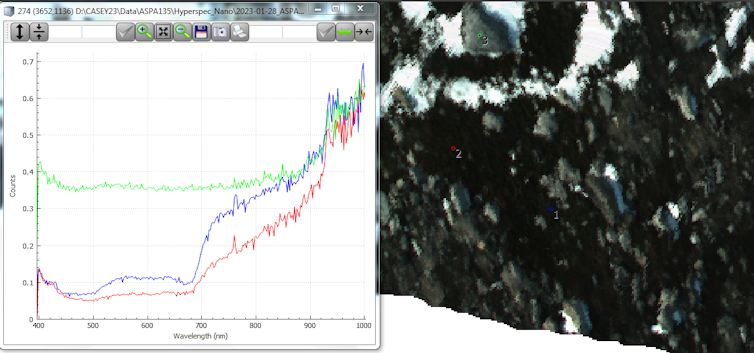
One Journey Ends, While Another Is Just Beginning
Often while we were working, curious penguins wandered over to see what we were doing. Making friends with these locals was always the highlight of the day.
But after a couple of fantastic months in the field, it was time to pack up and head home. On the 60km journey inland to Wilkins Aerodrome we ventured into the Antarctic Circle. We waited in -20℃ to watch our plane land on the blue ice runway before boarding and flying back to Tasmania. There, it felt like we’d just woken up from a dream.
Our Antarctic adventure was over, but we all felt so grateful for the experience.
Now we’re exploring the data, to see what stories it can tell, while further developing our moss sensing platform. We hope to return to Antarctica to deploy it at the end of the year.
The authors travelled to Casey Station as part of the Australian Research Council Special Research Initiative Securing Antarctica’s Environmental Future (SAEF).![]()

Johan Barthélemy, Developer Relations Manager, NVIDIA and Honorary Senior Research Fellow, University of Wollongong, University of Wollongong; Barbara Bollard, Professor of Computational Conservation, Auckland University of Technology; Juan Sandino, Postdoctoral research fellow, Queensland University of Technology, and Krystal Randall, Postdoctoral Research Fellow, University of Wollongong
This article is republished from The Conversation under a Creative Commons license. Read the original article.
A new trade deal delivers cheaper Australian beef and British sweets – but does little to avert dangerous global warming
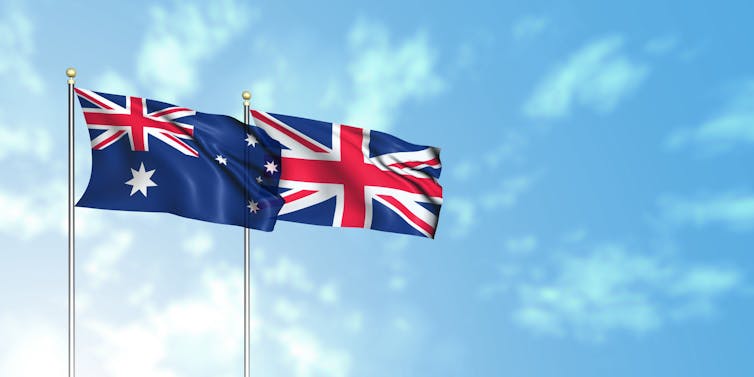
A free trade agreement between Australia and the United Kingdom begins on Wednesday. When it was announced in 2021, then-prime ministers Boris Johnson and Scott Morrison cheerily exchanged packets of chocolate biscuits. Meanwhile, one British newspaper celebrated the prospect of cheaper steaks.
The agreement eliminates tariffs on a range of Australian exports, including beef and lamb, and makes it easier for Australians to work in the UK. British exporters of cars, whisky and confectionery will also benefit. But the deal is notable for another reason.
As our research has found, it does relatively little to tackle climate change. In the context of growing damage from climate change – internationally, in Australia and in the UK – this is a missed opportunity.
The Albanese government inherited this free trade agreement, and describes it as “gold standard”. It is not, however, gold standard on climate action. Both the Australian and UK governments must now ensure the deal does not damage efforts to keep global warming at safe limits.
Hopes Were High
Trade is vital to the global economy. It is also inextricably linked to climate change.
Trade increases greenhouse gas emissions. And climate change can damage trade when severe weather disrupts supply and distribution networks.
Free trade agreements can be used to tackle climate change. For example, they can lower the cost of goods needed in the low-carbon transition, such as solar panels and bicycle parts. And trade partners can provide leadership on emissions reduction.
When the UK hosted the COP26 climate conference in 2021, it sought to establish a reputation as a global leader on climate action. The nation seemed well-placed to ensure emissions reduction was on the agenda when it negotiated a post-Brexit trade deal with Australia.
But the free trade agreement with Australia failed to put climate change at the forefront.
‘Regrettable’: The Deal Lacks Climate Ambition
The final text of the deal acknowledges each nations’ commitment to addressing climate change and notes “the role of global trade and investment in these efforts”. It also recognises the Paris Agreement.
However, a report last year by a British parliamentary committee noted the agreement’s lack of climate ambition, saying:
Given the UK’s generous tariff offer, it could have pressed [Australia] for more ambitious commitments on climate change, stronger enforcement provisions, and for an explicit reference to the Paris temperature goals.
The report also noted:
it is regrettable that the agreement did not include any references to reducing or reviewing Australia’s reliance on coal.
There was speculation that the UK government prioritised securing the agreement over holding Australia to account on climate action.
In Australia, the Department of Foreign Affairs and Trade analysed the impact of the free trade agreement with the United Kingdom and did not raise concerns over its climate ambition.
What The Deal Should Have Done
So how might the trade pact have properly addressed climate change? There are many options.
A UK-New Zealand trade deal, for example, signals that in some circumstances, it may be justifiable for climate action to affect trade. The European Union has proposed such action, in its plan to impose reporting - and potentially, a financial charge – on emissions-intensive imports.
The UK-NZ agreement also takes steps to eliminate fossil fuel subsidies, in recognition that government support for the coal, oil and gas industries distorts prices and discourages climate action.
And the pact between the European Union and Canada requires the development of climate-friendly labelling and certification standards on products.
The Australia-UK deal seeks to ensure that each nation encourages high levels of environmental protection. These provisions could be strengthened with respect to climate change – for example, by tying them to each party’s emissions-reduction commitment under the Paris Agreement.
The agreement requires Australia and the UK to promote trade and investment in environmental goods and services, such as low-emissions technologies and renewable energy infrastructure. Yet the UK-NZ deal goes further. It eliminates customs duties on listed environmental goods, such as bicycle parts and plants.
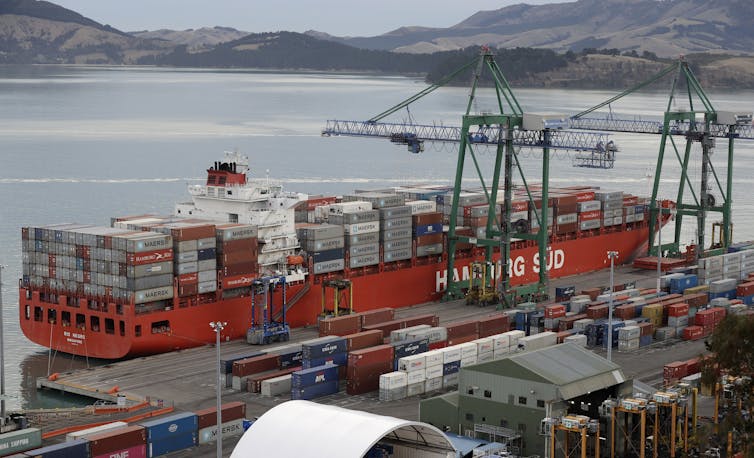
The Australia-UK deal might have had stronger climate provisions if it incorporated a wider range of public views.
Public participation is key to good environmental decision-making. But the Australia-UK trade deal has been criticised by non-government organisations for its lack of public input.
In Australia, a parliamentary committee last year examined the deal. It said while peak business groups were often satisfied with the level of consultation on free trade agreements, others – including civil society groups and unions – were frequently not.
Looking Ahead
The Albanese government was elected on a platform of enhanced climate action and has since entrenched temperature targets in national legislation. While the Australia-UK trade deal was finalised when it took office, opportunities exist to strengthen its climate ambition.
The agreement establishes a working group to review and monitor environmental provisions relating to matters such as marine pollution from ships, ozone-depleting substances, illegal logging and the wildlife trade. This group could also work to better integrate the climate and trade goals of both nations.
This might involve monitoring land-use change caused by agricultural trade between the countries and exploring prospects for sustainable food systems. It could mean removing customs duties for low-emissions goods and discussing ways to constrain subsidies on fossil fuels.
Doing so would help ensure this agreement, and others to come, meet the urgent need to avert dangerous global warming.![]()
Margaret Young, Professor, The University of Melbourne and Georgina Clough, , The University of Melbourne
This article is republished from The Conversation under a Creative Commons license. Read the original article.
Invasive lionfish have spread south from the Caribbean to Brazil, threatening ecosystems and livelihoods
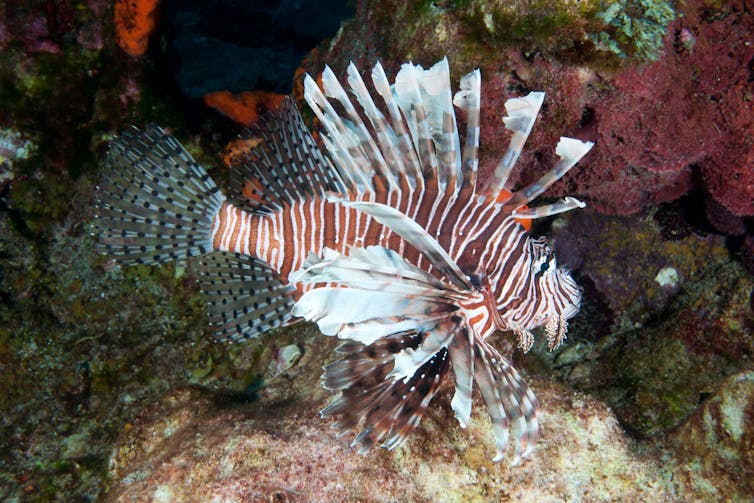
Brazil’s coastal waters teem with a rich array of species that paint a living tapestry beneath the waves. This underwater world is particularly special because many of its species are endemic – they are found nowhere else on Earth. The southwestern Atlantic is home to 111 endemic reef fish species, each of which plays a crucial role in the intricate web of marine life.
An uninvited guest has arrived in these tropical waters: the Pacific red lionfish (Pterois volitans). Renowned for its stunning appearance and voracious appetite, the lionfish was first detected off of Florida in 1985 and has spread throughout the Caribbean, killing reef fish in large numbers.
Now it has breached a formidable obstacle: the Amazon-Orinoco river plume, which flows into the Atlantic from northeastern Brazil. This massive discharge of fresh water has long functioned as a barrier separating Caribbean fish species from those farther south along Brazil’s coastline.
Scientists and environmental managers widely agree that the lionfish invasion in Brazil is a potential ecological disaster. As a marine ecologist, I believe mitigating the damage will require a comprehensive approach that addresses the ecological, social and economic harms wrought by this predatory fish.
Tracing The Lionfish’s Spread
It’s easy to see why lionfish appeal to aquarium enthusiasts. Native to the warm waters of the Indo-Pacific ocean, they are 12 to 15 inches long, with red and white stripes and long, showy fins. They protect themselves with dorsal spines that deliver painful venomous stings.
Lionfish were first detected in the Atlantic Ocean in 1985 off Dania Beach, Florida, probably discarded by a tropical fish collector. Since then they have spread throughout the Caribbean Sea, the Gulf of Mexico and northward as far as Bermuda and North Carolina – one of the most successful marine invasions on record. A close relative, the common lionfish or devil firefish (Pterois miles), has invaded the Mediterranean Sea and is spreading rapidly there.
Lionfish can be eaten safely if they are properly prepared to remove their venomous spines. In Florida and the Caribbean, lionfish hunting tournaments have become popular as a control method. However, lionfish move to deeper waters as they grow, so hunting alone can’t prevent them from spreading.
Marine scientists have anticipated for years that lionfish would someday arrive along the eastern coast of South America. A single sighting in 2014, far removed from the Amazon-Orinoco plume, was likely a result of an aquarium release rather than a natural migration.
Then in December 2020, local fishermen caught a pair of lionfish on coral reefs in the mesophotic, or “twilight,” zone several hundred feet below the mighty Amazon River plume. A scuba diver also encountered a lionfish in the oceanic archipelago of Fernando de Noronha, 220 miles (350 kilometers) off Brazil’s tropical coast.
New invasion fronts have quickly opened along Brazil’s north and northeast coasts, covering eight states and diverse marine habitats. More than 350 lionfish have been tallied along a 1,720-mile (2,765-kilometer) swath of coastline.
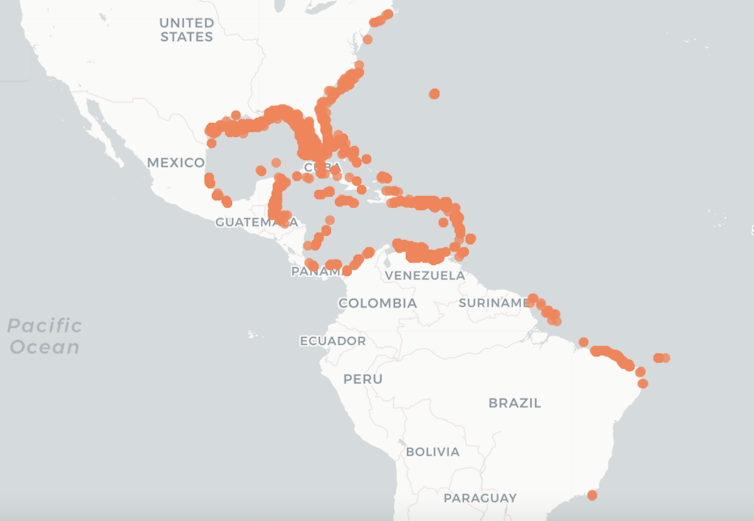
Aggressive Predators Without Natural Enemies
Like many introduced species, lionfish in the Atlantic don’t face natural population control mechanisms such as predation, disease and parasitism that limit their numbers in the Indo-Pacific. A 2011 study found that lionfish on reefs in the Bahamas were larger and more abundant than their Pacific counterparts.
Lionfish thrive in many marine habitats, from mangroves and seagrass beds to deepwater reefs and shipwrecks. They are aggressive, persistent hunters that feed on smaller fish, including species that keep coral reefs clean and others that are food for important commercial species like snappers and groupers. In a 2008 study, when lionfish appeared on reefs in the Bahamas, populations of small juvenile reef fish declined by 80% within five weeks.
Brazil’s northeast coast, with its rich artisanal fishing activity, stands on the front line of this invasive threat. Lionfish are present in coastal mangrove forests and estuaries – brackish water bodies where rivers meet the sea. These areas serve as nurseries for important commercial fish species. Losing them would increase the risk of hunger in a region that is already grappling with substantial social inequality.
Fishers also face the threat of lionfish stings, which are not lethal to humans but can cause painful wounds that may require medical treatment.
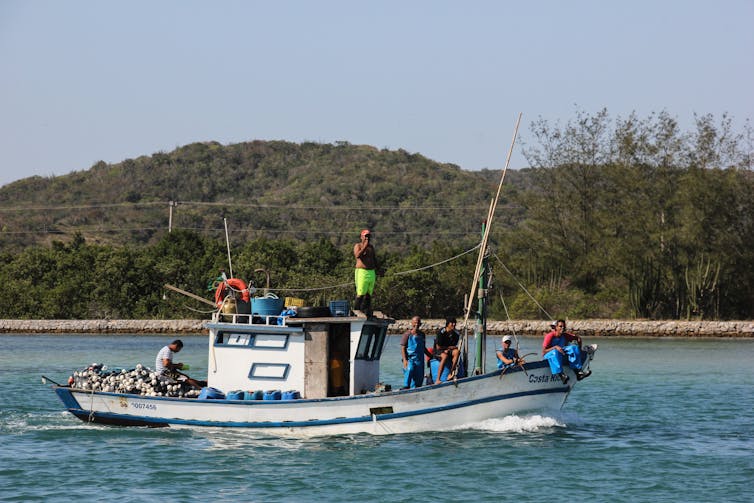
Facing The Invasion: Brazil’s Challenges
Biological invasions are easiest to control in early stages, when the invader population is still growing slowly. However, Brazil has been slow to react to the lionfish incursion.
The equatorial southwestern Atlantic, where the invasion is taking place, has been less thoroughly surveyed than the Caribbean. There has been little high-resolution seabed mapping, which would help scientists identifying potential lionfish habitats and anticipate where lionfish might spread next or concentrate their populations. Understanding of the scale of the invasion is largely based on estimates, which likely underrepresent its true extent.
Moreover, turbid waters along much of Brazil’s coast make it hard for scientists to monitor and document the invasion. Despite their distinctive appearance, lionfish are difficult to spot and record in murky water, which makes it challenging for scientists, divers and fishers to keep an accurate record of their spread.
Still another factor is that from 2018 through 2022, under former President Jair Bolsonaro, Brazil’s government sharply cut the national science budget, reducing funding for field surveys. The COVID-19 pandemic further reduced field research because of lockdowns and social distancing measures.
Making Up For Lost Time
Brazil has a history of inadequately monitoring for early detection of marine invasions. The lionfish is no exception. Actions thus far have been reactive and often initiated too late to be fully effective.
As one of many Brazilian scientists who warned repeatedly about a potential lionfish invasion over the past decade, I’m disheartened that my country missed the window to take early action. Now, however, marine researchers and local communities are stepping up.
Given the length of Brazil’s coast, traditional monitoring methods are often insufficient. So we’ve turned to citizen science and information technology to fill the gaps in our knowledge.
In April 2022, a group of academic researchers spearheaded the launch of an online dashboard, which is updated continuously with data from scientific surveys and local community self-reports. This interactive platform is maintained by a research group led by marine scientists Marcelo Soares and Tommaso Giarrizzo from the Federal University of Ceará.
The dashboard allows anyone, from fishers to recreational divers and tourists, to upload data on lionfish observations. This information supports rapid response efforts, strategic planning for preventive measures in areas still free from lionfish, and the development of localized lionfish removal programs.
I believe lionfish are here to stay and will integrate over time into Brazil’s marine ecosystems, much as they have in the Caribbean. Given this reality, our most pragmatic and effective strategy is to reduce lionfish populations below levels that cause unacceptable ecological harm.
Regions along the coast that are still lionfish-free might benefit from early and preventive actions. Comprehensive surveillance plans should include environmental education programs about exotic species; early detection approaches, using techniques such as analyzing environmental DNA; citizen science initiatives to monitor and report lionfish sightings, participate in organized culls and help collect research data; and genetic surveys to identify patterns of connectivity among lionfish populations along Brazil’s coast and between Brazilian and Caribbean populations.
Brazil missed its initial opportunity to prevent the lionfish invasion, but I believe that with strategic, swift action and international collaboration, it can mitigate the impacts of this invasive species and safeguard its marine ecosystems.
This article has been updated to reflect that the correct number of endemic reef fish species in the southwestern Atlantic is 111.![]()
Osmar J. Luiz, Senior Research Fellow in Aquatic Ecology, Charles Darwin University
This article is republished from The Conversation under a Creative Commons license. Read the original article.
Why 40°C is bearable in a desert but lethal in the tropics

This year, even before the northern hemisphere hot season began, temperature records were being shattered. Spain for instance saw temperatures in April (38.8°C) that would be out of the ordinary even at the peak of summer. South and south-east Asia in particular were hammered by a very persistent heatwave, and all-time record temperatures were experienced in countries such as Vietnam and Thailand (44°C and 45°C respectively). In Singapore, the more modest record was also broken, as temperatures hit 37°C. And in China, Shanghai just recorded its highest May temperature for over a century at 36.7°C.
We know that climate change makes these temperatures more likely, but also that heatwaves of similar magnitudes can have very different impacts depending on factors like humidity or how prepared an area is for extreme heat. So, how does a humid country like Vietnam cope with a 44°C heatwave, and how does it compare with dry heat, or a less hot heatwave in even-more-humid Singapore?
Weather And Physiology
The recent heatwave in south-east Asia may well be remembered for its level of heat-induced stress on the body. Heat stress is mostly caused by temperature, but other weather-related factors such as humidity, radiation and wind are also important.
Our bodies gain heat from the air around us, from the sun, or from our own internal processes such as digestion and exercise. In response to this, our bodies must lose some heat. Some of this we lose directly to the air around us and some through breathing. But most heat is lost through sweating, as when the sweat on the surface of our skin evaporates it takes in energy from our skin and the air around us in the form of latent heat.
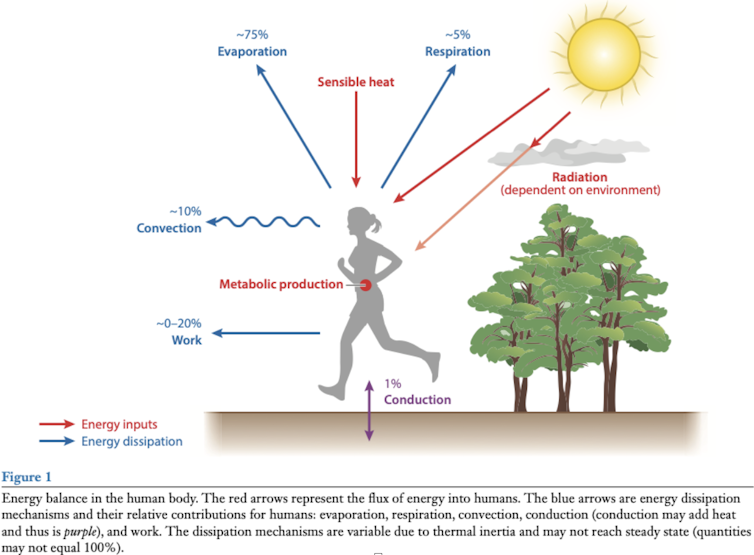
Meteorological factors affect all this. For example, being deprived of shade exposes the body to heat from direct sunlight, while higher humidity means that the rate of evaporation from our skin will decrease.
It’s this humidity that meant the recent heatwave in south-east Asia was so dangerous, as it’s already an extremely humid part of the world.
The Limit Of Heat Stress
Underlying health conditions and other personal circumstances can lead to some people being more vulnerable to heat stress. Yet heat stress can reach a limit above which all humans, even those who are not obviously vulnerable to heat risk – that is, people who are fit, healthy and well acclimatised – simply cannot survive even at a moderate level of exertion.
One way to assess heat stress is the so-called Wet Bulb Globe Temperature. In full sun conditions, that is approximately equivalent to 39°C in temperature combined with 50% relative humidity. This limit will likely have been exceeded in some places in the recent heatwave across south-east Asia.
In less humid places far from the tropics, the humidity and thus the wet bulb temperature and danger will be much lower. Spain’s heatwave in April with maximum temperatures of 38.8°C had WBGT values of “only” around 30°C, the 2022 heatwave in the UK, when temperatures exceeded 40°C, had a humidity of less than 20% and WBGT values of around 32°C.
Two of us (Eunice and Dann) were part of a team who recently used climate data to map heat stress around the world. The research highlighted regions most at risk of exceeding these thresholds, with literal hotspots including India and Pakistan, south-east Asia, the Arabian peninsula, equatorial Africa, equatorial South America and Australia. In these regions, heat stress thresholds are exceeded with increased frequency with greater global warming.
In reality, most people are already vulnerable well below the survivability thresholds, which is why we can see large death tolls in significantly cooler heat waves. Furthermore, these global analyses often do not capture some very localised extremes caused by microclimate processes. For example a certain neighbourhood in a city might trap heat more efficiently than its surroundings, or might be ventilated by a cool sea breeze, or be in the “rain shadow” of a local hill, making it less humid.
Variability And Acclimatisation
The tropics typically have less variable temperatures. For example, Singapore sits almost on the equator and its daily maximum is about 32°C year round, while a typical maximum in London in mid summer is just 24°C. Yet London has a higher record temperature (40°C vs 37°C in Singapore).
Given that regions such as south-east Asia consistently have high heat stress already, perhaps that suggests that people will be well acclimatised to deal with heat. Initial reporting suggests the intense heat stress of the recent heatwave lead to surprisingly few direct deaths – but accurate reporting of deaths from indirect causes is not yet available.
On the other hand, due to the relative stability in year-round warmth, perhaps there is less preparedness for the large swings in temperature associated with the recent heatwave. Given that it is not unreasonable, even in the absence of climate change, that natural weather variability can produce significant heatwaves that break local records by several degrees Celsius, even nearing a physiological limit might be a very risky line to tread.

Don’t have time to read about climate change as much as you’d like?
Get a weekly roundup in your inbox instead. Every Wednesday, The Conversation’s environment editor writes Imagine, a short email that goes a little deeper into just one climate issue. Join the 10,000+ readers who’ve subscribed so far.![]()
Alan Thomas Kennedy-Asser, Research Associate in Climate Science, University of Bristol; Dann Mitchell, Professor of Climate Science, University of Bristol, and Eunice Lo, Research Fellow in Climate Change and Health, University of Bristol
This article is republished from The Conversation under a Creative Commons license. Read the original article.
Plastic recycling is failing – here’s how the world must respond
Cressida Bowyer, University of Portsmouth; Keiron Roberts, University of Portsmouth, and Stephanie Northen, University of PortsmouthRecycling was once considered the obvious solution to the excessive amount of new (or virgin) plastic produced each year. This is no longer realistic. Global recycling capacity simply cannot keep up with the taking, making and wasting of natural resources.
Growing mountains of plastic waste are accumulating in the poorest countries as affluent nations such as the UK ship their recycling overseas. But some nations are importing far more plastic waste than they can possibly recycle.
The recycling process itself also creates problems. A new report by Greenpeace and the International Pollutants Elimination Network has revealed how plastics which are made with or come into contact with toxic chemicals, such as flame retardants, can contaminate the recycling process by spreading these toxins through subsequent batches of plastic waste. Another recent study showed that recycling facilities can release hundreds of tonnes of microplastics into the environment each year.
Only 6-9% of all plastic ever produced has been sent for recycling. Although plastic and other waste is collected for recycling in most countries, the amount of material that is remade into the same or similar products (what is called closed-loop recycling) is extremely low. Only 2% of plastic waste is recycled in a closed loop and not turned into something of lower quality, which is called downcycling. Recycling can not fully replace virgin material as it can only be recycled twice before losing necessary properties, and so most recycling results in a downgraded material that cannot be used for the same purpose.
A more sustainable approach would prioritise preventing plastic waste by taking action at earlier stages of a plastic product’s lifecycle: reducing how much plastic is ultimately made, reusing what exists and replacing plastic with alternative materials where appropriate.
Reduce
Manufacturers must stop making so much unnecessary plastic to reduce the amount entering the economy. There is no case for making plastics that are impossible to collect, reuse or recycle, or are toxic. Yet they are abundant: think multilayered sachets, thin films and wrappers. These should be phased out as a priority.
Global caps on plastic production could restrict its use to reusable products and packaging, reducing the pressure on recycling systems.
You can refuse single-use packaging when shopping if alternatives are available and affordable. Choose loose vegetables, or products wrapped in packaging that can be refilled.

Reuse
Using the plastic you already have for as long as possible reduces the amount of new products and packaging that need to be made and how much waste is ultimately sent for recycling.
Roughly 250 billion single-use coffee cups are used worldwide every year – a figure that could be slashed by governments setting national mandates for reusable cups and bottles. This might involve shops, cafés and other venues providing reusable packaging for any products they sell and ensuring each one is used, tracked, washed, returned and replenished for the next consumer cycle.
Substitute
Metals, glass, or paper can be used instead of plastic, but there is no universal sustainable alternative. The most appropriate material depends on the item’s use.
The environmental consequences of any material should be rigorously assessed across its entire life cycle – from production to use and disposal – to ensure it does more good than harm. And such assessments must consider all social, environmental and economic costs.
The true cost of making, distributing and disposing of plastic is estimated to be more than ten times greater than what the customer pays for the product. Including the hidden costs of environmental damage and human misery arising from pollution in the price of virgin plastic, by taxing manufacturers or retailers for instance, could boost the economic case for alternatives.
Recycling Can Still Be Useful
Not all plastics can be reused, especially medical devices. When all alternatives have been exhausted, recycling keeps material in the economy and temporarily delays the need for more virgin plastic. But the existence of recycling shouldn’t justify making more plastic.
Recycling must not pollute. Manufacturers should only make plastics which can be recycled via methods proven to be safe and clean, and ban toxic additives. Simple labelling can help consumers make informed decisions about how, where and what to either reuse or recycle, which would help prevent recycling loads becoming contaminated with non-recyclable waste and toxins.
Plastics sent for recycling should be treated in the most socially and environmentally responsible way. High-income countries which export waste to poorer countries for cheap recycling do so without guarantees that infrastructure exists to manage this waste where it ends up. The result is waste leaking into the environment, and toxic plastic blocking drainage channels and causing floods. Some of this is burned outdoors, which comes with its own risks to health and the environment. Banning or restricting exports would help.
Precarious workers in the informal waste sector collect, sort and sell recyclable materials and carry out 60% of global recycling. Waste reclaimers endure poor health and low pay but their extensive knowledge is invaluable and must be acknowledged. Policies to protect their rights and improve their livelihoods are needed.
Countries meeting in Paris for the second of five rounds of negotiations for an international treaty to end plastic pollution will discuss all areas of the plastic lifecycle - from the extraction of material to manufacturing, use and disposal. Banning unnecessary plastics, toxic additives and waste exports should be high on the agenda, along with schemes to encourage reuse and repair.

Don’t have time to read about climate change as much as you’d like?
Get a weekly roundup in your inbox instead. Every Wednesday, The Conversation’s environment editor writes Imagine, a short email that goes a little deeper into just one climate issue. Join the 10,000+ readers who’ve subscribed so far.![]()
Cressida Bowyer, Senior Research Fellow and Deputy Director, Revolution Plastics, University of Portsmouth; Keiron Roberts, Senior Lecturer in Sustainability and the Built Environment, University of Portsmouth, and Stephanie Northen, Research Associate, Revolution Plastics, University of Portsmouth
This article is republished from The Conversation under a Creative Commons license. Read the original article.
The secret world of moss, ancient ancestor of all plants and vital for the health of the planet
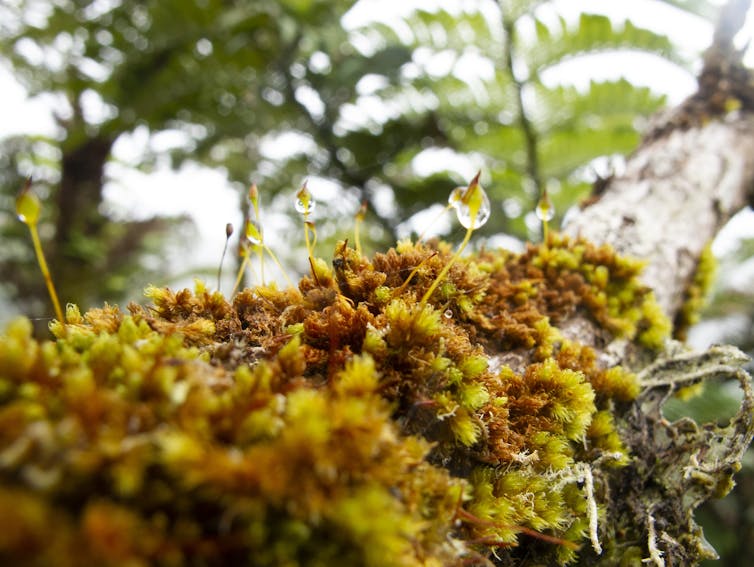
When people consider extraordinary plants, most probably don’t spare a thought for moss. It blends in against the green background of plant life, and seems to grow everywhere – whether you want it to or not.
You can listen to more articles from The Conversation, narrated by Noa, here.
But this group of plants, which actually comprises between 12,000 and 15,000 species, is astonishing. Their almost unique resilience allows them to grow practically everywhere on Earth. They are helping scientists understand the evolution of life, and are one of the most ancient plant groups alive today.
A recent study by an Australian research team found that mosses are the lifeblood of habitats around the world, with plants and soil in better shape almost everywhere they grow.
Despite their importance, mosses are often overlooked due to their diminutive size. The smallest mosses, known as micromosses, measure only a few millimetres in length. Even the largest moss, Dawsonia superba, a species native to Australia, New Zealand and the Pacific Islands, only reaches heights of up to 50cm – a giant among mosses, yet still smaller than the average houseplant.
But in fact, mosses help hold up entire ecosystems.
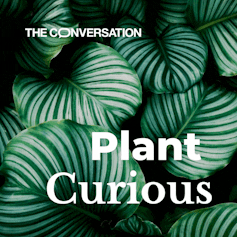
Many people think of plants as nice-looking greens. Essential for clean air, yes, but simple organisms. A step change in research is shaking up the way scientists think about plants: they are far more complex and more like us than you might imagine. This blossoming field of science is too delightful to do it justice in one or two stories. This article is part of a series, Plant Curious, exploring scientific studies that challenges the way you view plantlife.
Drivers Of Critical Ecosystem Services
The contributions of mosses to the structure and function of modern ecosystems is often overlooked, lagging behind our understanding of more complex plants. The Australian study examined mosses’ relationship to their habitats in detail, and found they are critical to soil health.

The researchers collected moss samples from ecosystems around the globe – from tropical rainforest to polar landscapes through to arid deserts. Combining their findings from these samples with an analysis of previous research, their results showed that mosses are key players in every habitat in which they are found. Mosses store huge amounts of carbon, help the soil nutrient cycle, and also the decomposition of organic matter.
Mosses can even come to the rescue in disturbed ecosystems. Research examining the area around the Mount St. Helens volcano following a devastating eruption in the early 1980s found mosses were among the first forms of life to reappear.
Some types of moss, including the Sphagnum species, absorb and hold water in their tissues. This regulates water flow in the area, preventing flooding and creating peatland habitats which are home to rare plants and animals.
Mosses also provide unique habitats for microscopic life. Tardigrades, eight-legged micro-animals, are also known as moss piglets or bears of moss, thanks to their habit of clambering through moss “jungles” in search of their next meal. Moss piglets are nearly indestructible and can even survive in outer space, by entering a death-like state called cryptobiosis.

Ancient Ancestors
Mosses, along with liverworts and hornworts, are part of a group of plants known as bryophytes. These evolved more than 400 million years ago and still share many characteristics with the first plants to have emerged on to the Earth’s land surfaces – their small size and lack of true roots, for example. And while most plants have a continuous column of water which flows inside them via a xylem and phloem, mosses don’t – just like some of the most ancient plants in Earth’s history.
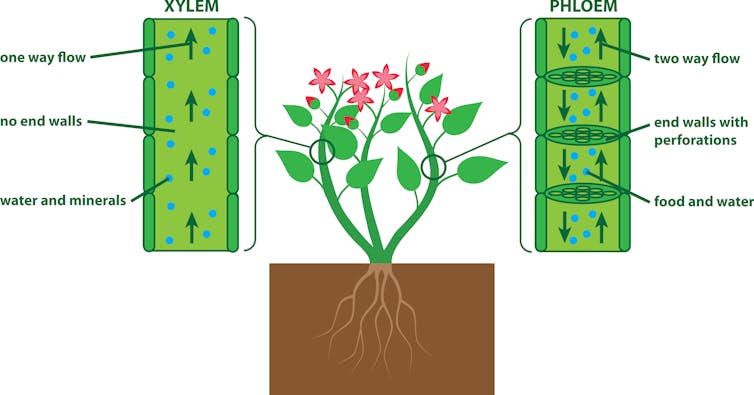
Instead, these tiny plants have their own conducting systems to move substances around their bodies. They absorb water and nutrients from rainwater and dust deposits across their surfaces. Their hair-like “roots”, known as rhizoids, anchor mosses to the surface they are growing on.
Mosses are almost unparalleled in their ability to survive harsh environments. This makes them excellent for studying the evolution of plants, much of which occurred during challenging conditions on Earth.
The study of modern mosses’ and other bryophytes’ genetics and physiology has given researchers insights into the adaptations that allowed plants to transition from water to land – for example, the formation of partnerships with fungi to access soil nutrients. Their incredible resistance to environmental stress such as drought and UV radiation was also crucial to their ability to evolve on land.
One of the most critical features of land mosses is their desiccation tolerance, which is the ability to survive near-complete drying out. When water is scarce, mosses can enter a state of suspended animation where they greatly reduce their metabolic activity, allowing them to survive until conditions improve. Some species, such the desert moss Syntrichia caninervis, can survive a hundred years in this dormant state and revive within hours of rewetting.
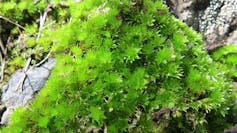
Studying the mechanisms of this ability in modern plants helps scientists understand how ancient plants might have adapted to land. It is possible that studying desiccation tolerance in mosses could help scientists discover new ways to protect crops from extreme drought in the future.
These little plants are also entwined with human history. From exploiting the antiseptic properties of moss for wound healing to using broom moss (Dicranium scoparium) for relief of constipation, mosses have played a substantial role in relieving human suffering.
So, perhaps we should think twice before raking out mosses from the lawn. Instead, take a moment to consider the natural beauty of their delicate green tendrils – and their history as some of the most intrepid explorers in Earth’s history.![]()
Katie Field, Professor in Plant-Soil Processes, University of Sheffield and Silvia Pressel, Senior Researcher Lead in Life Sciences, Natural History Museum
This article is republished from The Conversation under a Creative Commons license. Read the original article.
Atlantic hurricane season 2023: El Niño and extreme Atlantic Ocean heat are about to clash
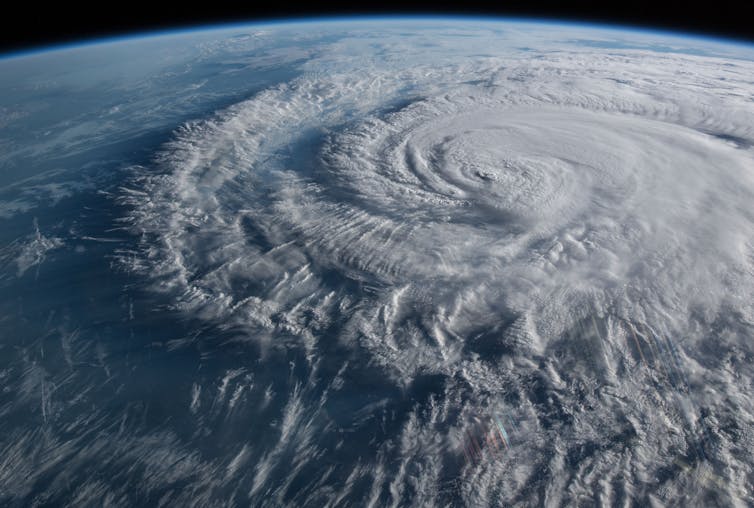
The Atlantic hurricane season starts on June 1, and forecasters are keeping a close eye on rising ocean temperatures, and not just in the Atlantic.
Globally, warm sea surface temperatures that can fuel hurricanes have been off the charts in the spring of 2023, but what really matters for Atlantic hurricanes are the ocean temperatures in two locations: the North Atlantic basin, where hurricanes are born and intensify, and the eastern-central tropical Pacific Ocean, where El Niño forms.
This year, the two are in conflict – and likely to exert counteracting influences on the crucial conditions that can make or break an Atlantic hurricane season. The result could be good news for the Caribbean and Atlantic coasts: a near-average hurricane season. But forecasters are warning that that hurricane forecast hinges on El Niño panning out.
Ingredients Of A Hurricane
In general, hurricanes are more likely to form and intensify when a tropical low-pressure system encounters an environment with warm upper-ocean temperatures, moisture in the atmosphere, instability and weak vertical wind shear.
Warm ocean temperatures provide energy for a hurricane to develop. Vertical wind shear, or the difference in the strength and direction of winds between the lower and upper regions of a tropical storm, disrupts the organization of convection – the thunderstorms – and brings dry air into the storm, inhibiting its growth.
The Atlantic Ocean’s Role
The Atlantic Ocean’s role is pretty straightforward. Hurricanes draw energy from warm ocean water beneath them. The warmer the ocean temperatures, the better for hurricanes, all else being equal.
Tropical Atlantic Ocean temperatures were unusually warm during the most active Atlantic hurricane seasons on recent record. The 2020 Atlantic hurricane season produced a record 30 named tropical cyclones, while the 2005 Atlantic hurricane season produced 28 named storms, a record 15 of which became hurricanes, including Katrina.
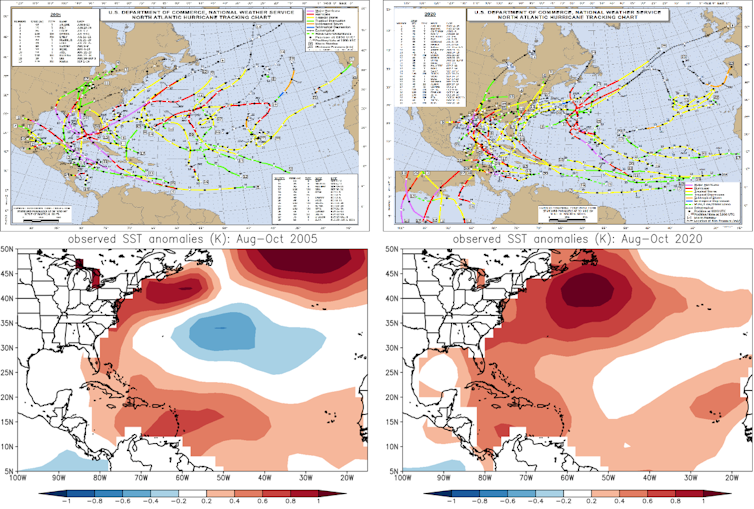
How The Pacific Ocean Gets Involved
The tropical Pacific Ocean’s role in Atlantic hurricane formation is more complicated.
You may be wondering, how can ocean temperatures on the other side of the Americas influence Atlantic hurricanes? The answer lies in teleconnections. A teleconnection is a chain of processes in which a change in the ocean or atmosphere in one region leads to large-scale changes in atmospheric circulation and temperature that can influence the weather elsewhere.

One recurring pattern of tropical Pacific climate variability that initiates teleconnections is the El Niño-Southern Oscillation.
When the tropical eastern-central Pacific Ocean is unusually warm, El Niño can form. During El Niño events, the warm upper-ocean temperatures change the vertical and east-west atmospheric circulation in the tropics. That initiates a teleconnection by affecting the east-west winds in the upper atmosphere throughout the tropics, ultimately resulting in stronger vertical wind shear in the Atlantic basin. That wind shear can tamp down hurricanes.
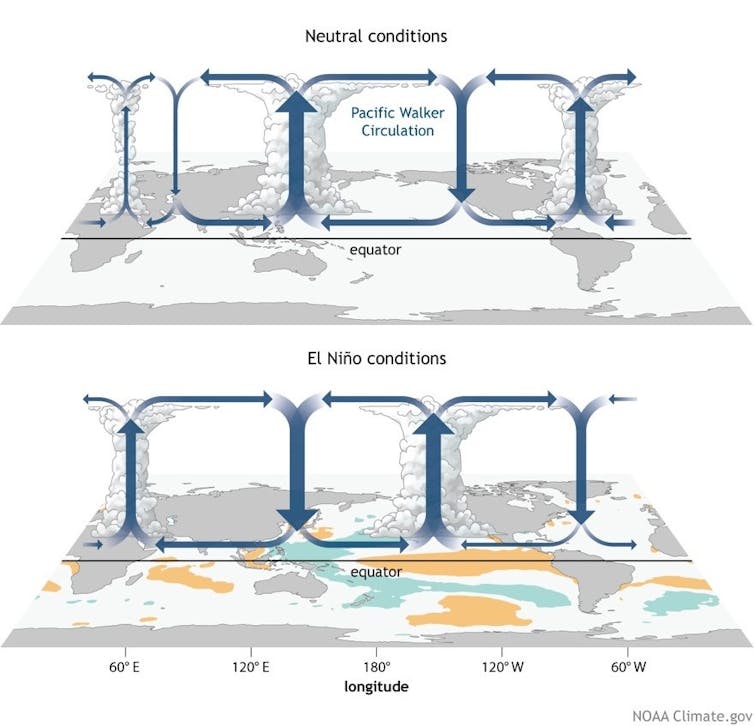
That’s what forecasters are expecting to happen this summer. The latest forecasts show a 90% likelihood that El Niño will develop by August and stay strong through the fall peak of the hurricane season.
A Tug Of War Between Atlantic And Pacific Influences
My research and work by other atmospheric scientists has shown that a warm Atlantic and a warm tropical Pacific tend to counteract each other, leading to near-average Atlantic hurricane seasons.
Both observations and climate model simulations have shown that outcome. The National Oceanic and Atmospheric Administration’s 2023 forecast calls for a near-average 12 to 17 named storms, five to nine hurricanes and one to four major hurricanes. An earlier outlook from Colorado State University forecasters anticipates a slightly below-average season, with 13 named storms, compared with a climatological average of 14.4.
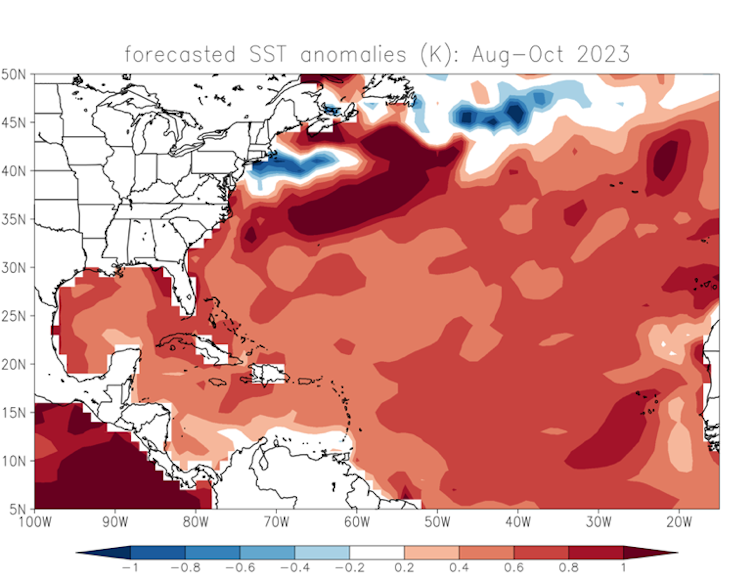
The Wild Cards To Watch
Although tropical Atlantic and Pacific Ocean temperatures often inform skillful seasonal hurricane forecasts, there are other factors to consider and monitor.
First, will the forecast El Niño and Atlantic warming pan out? If one or the other does not, that could tip the balance in the tug of war between the influences.
The Atlantic Coast should be rooting for El Niño to develop as forecast, since such events often reduce hurricane impacts there. If this year’s expected Atlantic Ocean warming were instead paired with La Niña – El Nino’s opposite, characterized by cool tropical Pacific waters – that could have led to a record-breaking active season instead.
Two other factors are also important. The Madden-Julian Oscillation, a pattern of clouds and rainfall that travels eastward through the tropics on a time scale of 30 to 90 days, can either encourage or suppress tropical storm formation. And dust storms from the Saharan air layer, which contains warm, dry and dusty air from Africa, can suppress tropical cyclones.![]()
Christina Patricola, Assistant Professor of Atmospheric Sciences, Iowa State University
This article is republished from The Conversation under a Creative Commons license. Read the original article.
Australia’s Aged Care Sector: Mid-Year Report 2022-23
- Warning signs of financial distress amongst approved providers
- Adequacy of direct care funding in residential care depends on workforce availability.
- Large staffing gaps to meet the minimum standards.
- Losses grow for non-care services
- Home care financial performance continues to decline.
- Government spending on aged care far exceeds forecasts.
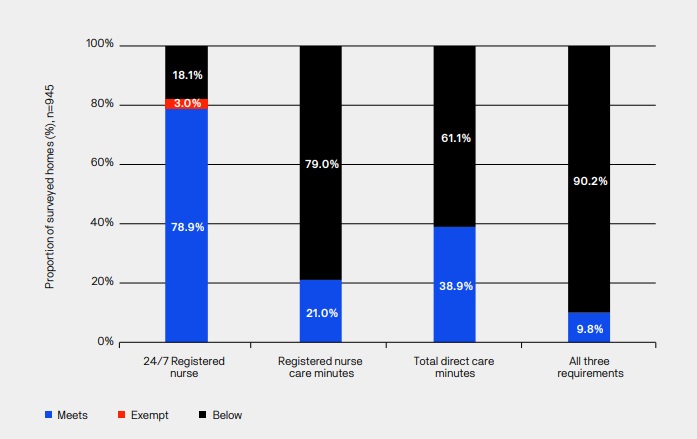
I’ve been approved for a home care package but how do I choose a provider – and what if I want to switch?

So you’ve been approved for a home care package. Congratulations! This government-funded program can provide you with much-needed assistance to stay independent and live safely in your own home.
However, the process of getting started can be confusing and overwhelming. Which provider should you choose, how do you get the most out of your package, and what if you change your mind later?
Here’s what you need to know.
What Does A Provider Do?
A provider delivers aged care services subsidised by the Australian government – such as nursing care, personal grooming, home maintenance, meal preparation and transport – under a home care package.
Your provider can help with decision-making, managing your package funding, and handling any fees or charges you may have to pay.
Your choice of provider will be limited to those that service your area, their staffing levels, and possible waiting lists for different service types. My Aged Care’s Find a Provider can provide more information about providers near you.
Are There Waiting Periods?
Potentially.
There may be a delay between receiving your approval for a home-care package and when one becomes available. This will be the same regardless of your choice of service provider.
Occasionally, the service provider will be at capacity and not able to start the services you want as soon as your package starts.
The only way to know is to ask the service provider directly.
How Does The Provider Work?
Providers all work differently.
Some use case managers and assign staff members to you to provide consistency and familiarity. Others may be organised centrally and different workers might attend each time you need that service.
Some may come the same time each week, or day. Others may come on different days each week.
Think through what’s important to you and what your expectations are before you discuss your care with a service provider.

What Fees Does The Provider Charge?
Provider fees are highly variable. Fee schedules are published on the My Aged Care website or can be requested from the service provider, but it is still sometimes quite hard to compare.
If you can, try to compare:
- administration fees
- care management fees
- service delivery fees (for example, do they charge per hour or per 15 minute block?)
- travel costs (for example, do they charge per kilometre travelled or a flat rate?)
- internal or third-party services (for example, do they use their own nurses or outsource it to another company that provides this care?)
Writing these down or creating a spreadsheet can help with comparisons.
What Services Do I Get?
You get to choose how the funds in your home care package are spent, as long as they are broadly for health care.
This choice can be daunting, but try to think through what services best meet your care goals. Consider which services will best meet the long-term goal of staying healthy at home. The assessment completed prior to your approval is a good starting point for identifying gaps in your care.
Ask yourself: “What will help me stay living at home longer?”

Can I Organise Services Outside Of What The Provider Supplies?
Yes. However, they may not be covered through your home care package.
Say you already have a trusted clinician and would like to continue to receive their care. You can discuss brokering through your service provider.
If you have used up the funds in your home care package, you always have the option to pay privately. This won’t affect your home care package.
Likewise, you are still eligible to receive Medicare rebates, chronic disease management plans, and government-subsidised prescriptions while you’re on a home care package.
Can I Review My Package As Time Goes On?
Yes. You should review your package regularly to make sure it still meets your needs.
You might need to change the mix of services, or you might realise you need more funding. If you have a case manager assigned to you, they can help you find the best options.
Think about services you may be able to access outside of your package and what informal care might be available. This can take pressure off your package.
If your care needs are still not being met, you may be eligible to apply for a higher level package, which you can discuss with your provider at any time.

What If I Want To Change Providers?
First, think about what issue you have with the current provider, whether you feel comfortable discussing your concerns with them, and whether switching will resolve the issue.
If you decide to switch, it won’t cost anything. You need to provide between two and four weeks notice for your package to transfer and you will generally need to contact My Aged Care to reactivate your code for the new provider yourself.
Remember there may be waiting periods with the new provider and their fee structure may be different. Be sure to check the details of the new provider carefully to make sure they can support you to stay healthy at home. ![]()
Danelle Kenny, PhD student, The University of Queensland and Tracy Comans, NHMRC Boosting Dementia Research Leadership Fellow, The University of Queensland
This article is republished from The Conversation under a Creative Commons license. Read the original article.
‘We lose ourselves’: carers talk about the lonely, stressful work of looking after loved ones

An informal personal carer is someone who looks after a family member, neighbour or friend in need of care due to disability, illness or age.
In Australia, there are approximately 2.8 million informal personal carers, including 906,000 who are primary carers. Projections suggest the national demand for carers will rise 23% by 2030.
Around one in ten Australians are informal carers: most of these unpaid. This group of people support one of society’s most foundational needs and our economy would struggle without them.
Yet, little is understood about their experiences. Our recent research reveals how this group of carers lack necessary support for their own wellbeing.
Our Research
We interviewed 36 informal personal primary carers living across Western Australia and Queensland. Respondents were aged between 34 and 69 years, and had all been the primary carer for a child, parent, partner, or in-law, for between two and 21 years. Data was collected in two waves: one in 2020 and the other in 2021. Respondents were recruited with the help of an Australian carers’ organisation.

‘I’d Rather It Be Someone Else’s Problem’
Many of the carers we spoke to said they were not caring by choice, but by necessity. They said they feel both unseen and undervalued. A husband who had been caring for his wife who suffers from Alzheimer’s said:
I would rather work. I really don’t like being a carer. I’d rather it be someone else’s problem. Being a carer, you just get forgotten.
Carers generally provide care around-the-clock, yet their compensations (such as carer payments) are far from equivalent to full-time pay. The carer payment, for example, equates to only 28% of weekly ordinary time earnings in Australia, and carers can expect to lose approximately $17,700 in superannuation every year they provide care.
Few of Carers Australia’s pre-budget submission items to benefit carers were adopted in the most recent federal budget. Instead, the budget contained items which may indirectly benefit carers through increased support for the cared-for. But these measures do not explicitly recognise and support carers’ wellbeing.
Similarly, the recent draft of the National Strategy for the Care and Support Economy recognises the contribution informal carers make to Australia’s economy but focuses on paid care and support.
Our interviewees spoke about the personal costs of their work, and the stress and loneliness they experience. They shared feelings of being taken for granted as if their role was not work, let alone difficult work. One mum caring for her disabled son shared:
I just want people to see that, [a] carer doesn’t have any leave, paid leave, or recognition. People just think that’s your loved one, that’s your job. But I do want people to understand that I did not choose to be a carer as my career, but I will do it because it is important.
This played into a feeling of people losing their sense of self, because caring work was so demanding and time consuming. A mother who had been caring for her daughter for 17 years after she had been involved in an accident said:
People don’t realise how much we put our life on hold to support the people that need that emotional and mental and physical and spiritual support. We put ourselves in the back shed while we’re supporting them, so we lose ourselves.
A Mental Toll
Many spoke of how they once had individual goals and ambitions, which they now considered unachievable. All of our interviewees had quit jobs and halted careers to take on personal care full-time. One mother caring for her ill child said:
I think if I had a crystal ball, I don’t know that I would perhaps have become a parent, I think I would have just stuck to my corporate life and had a cat and be done with it.
The mental health toll experienced by carers in our study was clear throughout all interviews. A mother looking after her child with mental health challenges expressed:
Every carer has mental health impacts from being a carer. They won’t say it’s depression or anxiety, but it’s mental health because when the hierarchy of needs is not being met for you, you can’t provide them for somebody else.
As one interviewee explained, the demanding nature of the work had left them exhausted and as though they “can’t do it”. Our interviewees spoke of “falling apart” under the strain of constantly caring for high-needs people in their households. One mother who cared for her children who were both on the autism spectrum recalled:
How many times, if I don’t go to the bathroom and have a shower to cool down myself, I could kill the kids and myself easily. That’s how bad. We are not ever in the category to get help.
Feeling Abandoned
Because so much of their work happens in pre-existing relationships and behind closed doors, carers talked about not just feeling unseen but abandoned. A common theme across all interviews was how carers felt abandoned by institutions, health professionals and, in many cases, friends and family members. One husband who had cared for his wife for close to 20 years said:
The government doesn’t even care about the carers […] we’re not really getting anything and then they’re trying to take the crumbs off us.
Carers do not have psychological, institutional or social support for themselves as individuals, separate from their role. But these support pillars are necessary so the entire responsibility of care does not fall solely on informal carers.
Carer-inclusive activities could be a good start. But policy should also be responsive to the unique and unmet needs of carers. These relate to the lack of personal and professional development, feelings of abandonment and social isolation.
With an ageing population, a pandemic, and an emerging crisis over the quality of care for older Australians and people with disabilities, the role of informal carers has become increasingly important.
The truth is that most of us will likely, at some point, undertake care work or be the person being cared for. Better formalised support for carers will ultimately improve the care for the most vulnerable among us and society as a whole.
If this article has raised issues for you, or if you’re concerned about someone you know, call Lifeline on 13 11 14. Carers Australia also offers advice and support.![]()
Fleur Sharafizad, Lecturer in Management, Edith Cowan University; Esme Franken, Lecturer in Management, Edith Cowan University, and Uma Jogulu, Senior Lecturer, School of Business and Law, Edith Cowan University
This article is republished from The Conversation under a Creative Commons license. Read the original article.
Study Highlights Vital Need For Specialised Aged Care For Older People Experiencing Homelessness
Navigating Community-Based Aged Care Services From The Consumer Perspective
I’m over 65 and worried about the flu. Which vaccine should I have?

Influenza, or the flu, is a virus transmitted by respiratory droplets from coughing and sneezing. It can cause the sudden onset of a fever, cough, runny nose, sore throat, headache, muscle and joint pain.
In Australia, the flu is responsible for more than 5,000 hospitalisation and 100 deaths a year. The highest rates are among those over 65, whose immune systems aren’t as effective as they used to be, and children under five, whose immune systems are yet to mature.
To combat the decline in immunity as we age, specific vaccines are available for people aged 65 and over. So how do they work, and why exactly are they needed?
Remind Me, How Does The Immune System Work?
The immune system uses multiple mechanisms to fight viral infections, which can be divided into two major arms of the immune system, called innate and adaptive immunity.
Innate immunity involves multiple inflammatory cells and chemicals that are triggered immediately, or within hours of encountering an infection. They activate the immune system to clear the infection.
Adaptive immunity takes a little longer (weeks) to work and involves memory T cells and antibody-producing B cells, which can be reactivated when the body encounters a virus or other pathogen.
The combined innate and adaptive immune response determines how well we respond to an invading virus like influenza.
Why Are Older People More At Risk From The Flu?
Generally, as we age past 65, the innate cells become less effective at their job of clearing infections. They also start producing more inflammation.
New T and B cell numbers also decrease with increasing age and hence the adaptive immune response is also not as effective as when we are younger. This immune system decline is called immunosenescence, which leads to increased susceptibility, hospitalisation and death from influenza.
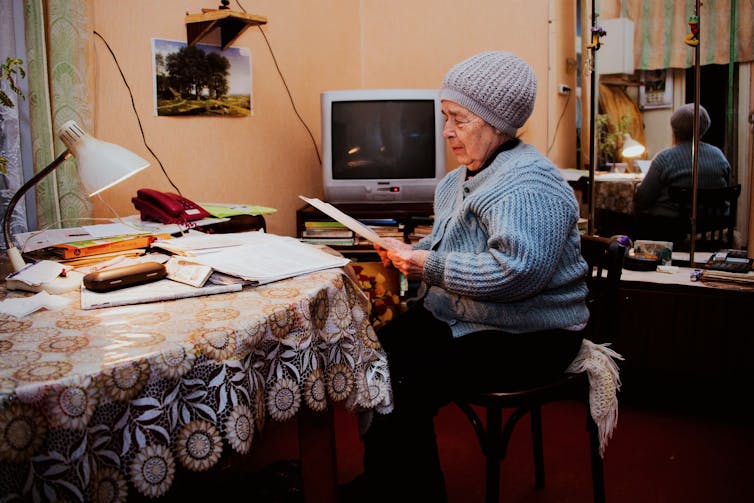
Certain medical conditions, such as cancer and heart and lung conditions, increase susceptibility to severe influenza, with older people being more likely to have additional medical conditions than younger people.
What Flu Vaccines Are Available?
Annual flu vaccines are recommended to protect against the common circulating strains of influenza, which can differ from year to year.
The standard flu vaccines offered to adults aged under 65 consist of surface proteins of the virus or inactivated (killed) virus from four influenza strains: two A strains (H1N1 and H3N2) and two B strains.
When you’re vaccinated, your immune system makes antibodies from B cells which protect you if you become exposed to these strains of the virus.
However, the standard influenza vaccine is less effective in older people.

Two stronger or augmented vaccines have been made targeting this age group. They contain the same components as the standard vaccine, but one vaccine – called Fluad – uses a strong adjuvant (an agent used to increase the immune response to vaccination) called MF59 to stimulate better immunity.
The other augmented vaccine, called Fluzone, uses a four-fold higher dose of each influenza strain to increase immunity.
How Do They Compare?
Studies comparing Fluad and Fluzone show both vaccines stimulate stronger immunity against influenza than the standard flu vaccine and are therefore likely to provide better protection.
Studies directly testing for improved clinical outcomes with vaccines for over-65s show a small benefit of receiving either of the vaccines over the standard vaccine, including a modest decrease in lab-confirmed influenza, hospitalisations and emergency department visits compared to the standard influenza vaccine.
They are however yet to show and impact on flu-related deaths.

In the few studies comparing Fluad and Fluzone directly, there is little evidence of a difference between them in reducing influenza and serious flu outcomes. The Australian Technical Advisory Group on Immunisation therefore recommends using either Fluad or Fluzone.
While both have been Therapeutic Goods Administration (TGA) approved since 2020, only Fluad is available for free on the National Immunisation Program for people aged 65 and over.
Fluzone is only available with a private prescription if you’re 60 years and over, at a cost of around A$65-70.
If neither augmented vaccine is available, a standard influenza vaccine is also acceptable for older people, since any influenza vaccine is preferable to receiving none.
Flu vaccines can also be given at the same time as COVID vaccines.
How Else Can We Protect Against The Flu?
While influenza vaccination is the single most effective way of preventing influenza, other measures such as social distancing and wearing a mask or N95 respirator can also provide some community protection.
Wearing a mask or N95 respirator significantly reduces the risk of infecting others when infected.
The evidence for protecting oneself against infection is less conclusive, mainly because it’s linked to early, consistent and, importantly, the correct use of masks.![]()
Magdalena Plebanski, Professor of Immunology, RMIT University; Jennifer Boer, Postdoctoral Research Fellow, RMIT University; Katie Louise Flanagan, Infectious Diseases Specialist and Clinical Professor, University of Tasmania, and Kirsty Wilson, Postdoctoral Research Fellow, RMIT University
This article is republished from The Conversation under a Creative Commons license. Read the original article.
Over half of eligible aged care residents are yet to receive their COVID booster. And winter is coming

As Australia heads towards the fourth winter of the pandemic, we have once again started seeing an increase in the level of COVID circulating. With this comes an increased risk of infection and serious illness.
Elderly people living in aged care are one of the groups facing the greatest risk.
But the latest figures from the federal health department show that to May 24 just over 40% (42.9%) of aged care residents estimated eligible for a booster vaccination have had their latest shot and are fully vaccinated.
If we also take into account immunity gained through recent infection in the past six months, just over half (50.4%) of aged care residents are estimated to have adequate levels of immunity.
Although numbers have increased considerably in the past few weeks, this is plainly far from ideal.
It’s Been Heartbreaking
Earlier in the pandemic, I was briefly part of the Victorian Aged Care Response Centre, set up to coordinate the response to the COVID surge in residential facilities. I was part of the team that collected, collated and interpreted COVID data used to inform the public health response.
What we witnessed in aged care then, and since, has been nothing short of heartbreaking.
Our inability to adequately protect aged care residents in the early part of the pandemic was undoubtedly one of our biggest pandemic failures.
I saw firsthand that this was not due to a lack of effort. The reality was there were just too many factors thwarting our ability to bring outbreaks under control in this uniquely challenging setting.
Since then, aged care residents have continued to die from COVID during the Omicron era. Since January 2022 COVID has accounted for about 5% of all deaths in residential aged care.
Why Booster Shots Are So Critical
Maintaining high levels of immunity by being up to date with COVID boosters is vital for protecting this vulnerable cohort from serious outcomes this winter.
Age, existing chronic illnesses and weaker immune systems are just some of the reasons why this group is most vulnerable.
Not only do vaccines protect against severe illness, they reduce the likelihood of passing COVID on to others in this high-risk environment.
And with higher rates of COVID transmission in the community, we’ll likely see more active outbreaks in residential aged care facilities. This highlights how important it is to see more residents receive their booster shots.

COVID Fatigue, Vaccine Distribution
It’s not entirely clear why COVID booster rates in aged care are so low.
There may be some COVID vaccine fatigue. Residents and their families may have tuned out to public health messages about the importance of vaccination and keeping up to date with booster shots. But how much of an issue this is in aged care is hard to measure.
Changes in the way COVID vaccines are delivered to aged care may have also played a role. Early in the pandemic, vaccine delivery was coordinated federally. However, now aged care centres are responsible for ensuring residents have access to the recommended COVID vaccine, with primary health-care providers, such as GPs and pharmacists, administering the shots.
We’ve Tried Incentives
Health departments and health workers are well aware of the need to adequately protect aged care residents as we head towards winter.
In February 2023, incentive payments for eligible health workers to go into residential aged care facilities to administer COVID vaccines were streamlined and increased.
In April 2023, the federal health department’s chief medical officer, and the aged care quality and safety commissioner issued a joint letter to aged care providers with advice on preparing for winter, including a reminder about COVID vaccination.
The federal government has also called on Primary Health Networks – bodies responsible for coordinating delivery of primary health care in their regions – to encourage them to support residential aged care homes across Australia to arrange COVID vaccination clinics.
This is all positive and sensible. Yet, we still haven’t seen a huge spike in COVID booster rates as we reach the end of May. That is concerning.
We Mustn’t Forget Flu Vaccines
As we enter the colder months, influenza also poses a significant threat for aged care residents.
So promoting COVID and influenza vaccination in aged care should go hand-in-hand this year, and for the foreseeable future.![]()
Hassan Vally, Associate Professor, Epidemiology, Deakin University
This article is republished from The Conversation under a Creative Commons license. Read the original article.
In the 1800s, colonisers attempted to listen to First Nations people. It didn’t stop the massacres
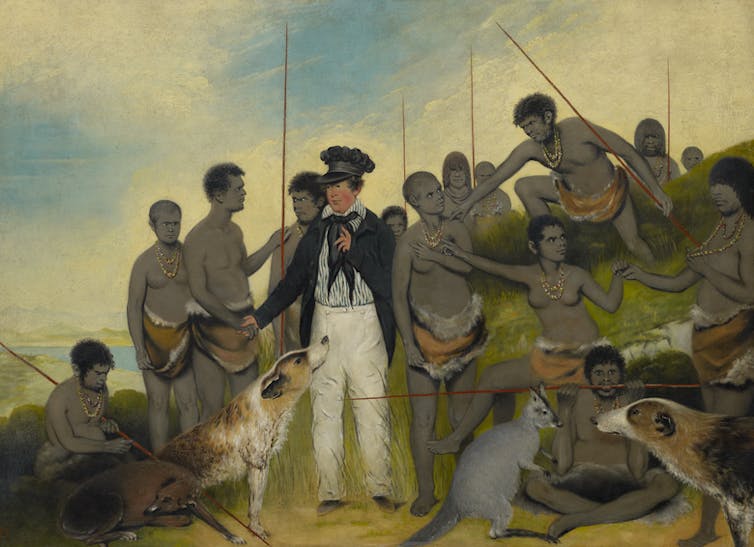
Note of warning: This article refers to deceased Aboriginal people, their words, names and images. Words attributed to them and images in the article are already in the public domain. Also, historical language is used in this article that may cause offence.
As we head toward the referendum on the Aboriginal and Torres Strait Islander Voice to Parliament later this year, it is worth considering the long history of how governments have tried and failed to authentically listen to First Nations people.
And not just post-federation governments. During Australia’s colonial period in the 19th century, the office of the Protector of Aborigines was established in an effort to hear to the “wants, wishes and grievances” of Aboriginal people, as the secretary for the colonies, Lord Glenelg, put it in 1838.
However, this office not only failed to genuinely listen to First Nations peoples, it led to policies that actually underpinned the erasure of Aboriginal and Torres Strait Islander people from the Australian Constitution of 1901.
Spotlight On The Treatment Of Indigenous People
During the 1830s, slave rebellions in Britain’s colonies and a growing humanitarian movement in the UK pushed the government to abolish slavery. The spotlight was then turned on the treatment of Indigenous peoples, both within and on the edges of the rapidly expanding British Empire.
In 1836, the British government established a Select Committee of the House of Commons on Aborigines to hear testimony from church leaders, missionaries and colonial officials about the situation of Aboriginal people in the Australian colonies.
The hearings focused particular attention on the conduct of militia forces in the so-called Black War in Tasmania, where roving parties of white men hunted down and killed Palawa people and massacres were seen as part and parcel of occupying Aboriginal lands.
In January 1838, Glenelg wrote to the governor of New South Wales, Sir George Gipps, that the British government
[had] directed their anxious attention to the adoption of some plan for the better protection and civilisation of the native tribes.
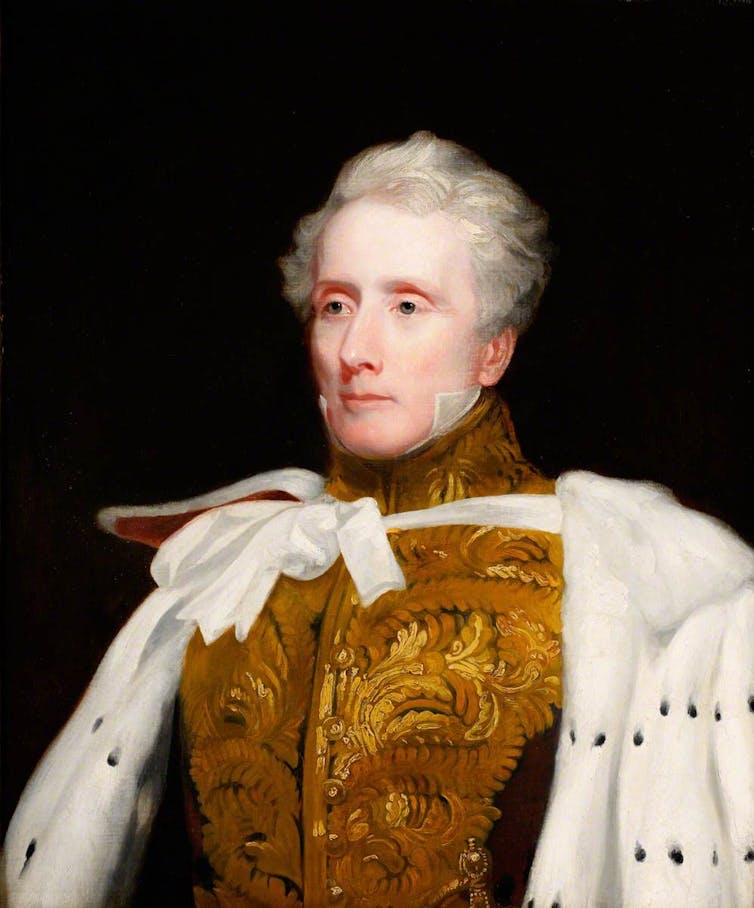
Glenelg told Gipps that as part of the scheme, the British government had decided to “appoint a small number of persons qualified to fill the office of Protector of Aborigines”. The chief protector, a non-Indigenous person, was to be aided by four assistant protectors and to “fix his principal station at Port Phillip” (later to become Melbourne), only recently occupied by the British.
According to Glenelg, George Augustus Robinson was bestowed with the office of chief protector as he had
shewn [sic] himself to be eminently qualified by his charge of the Aboriginal Establishment at Flinders Island.
Robinson’s so-called “Friendly Mission” - a series of journeys around Tasmania in the early 1830s to convince Palawa of Governor George Arthur’s humane intentions - was lauded by Gipps as a success, as it had peacefully convinced some people to move to a reserve at Flinders Island. Historians now consider this mission to be nothing more than ethnic cleansing.
For Glenelg, appointing Robinson to the new position of chief protector appeared to be the only plan available that did not involve military or police, or armed settlers dispensing their own “justice”.
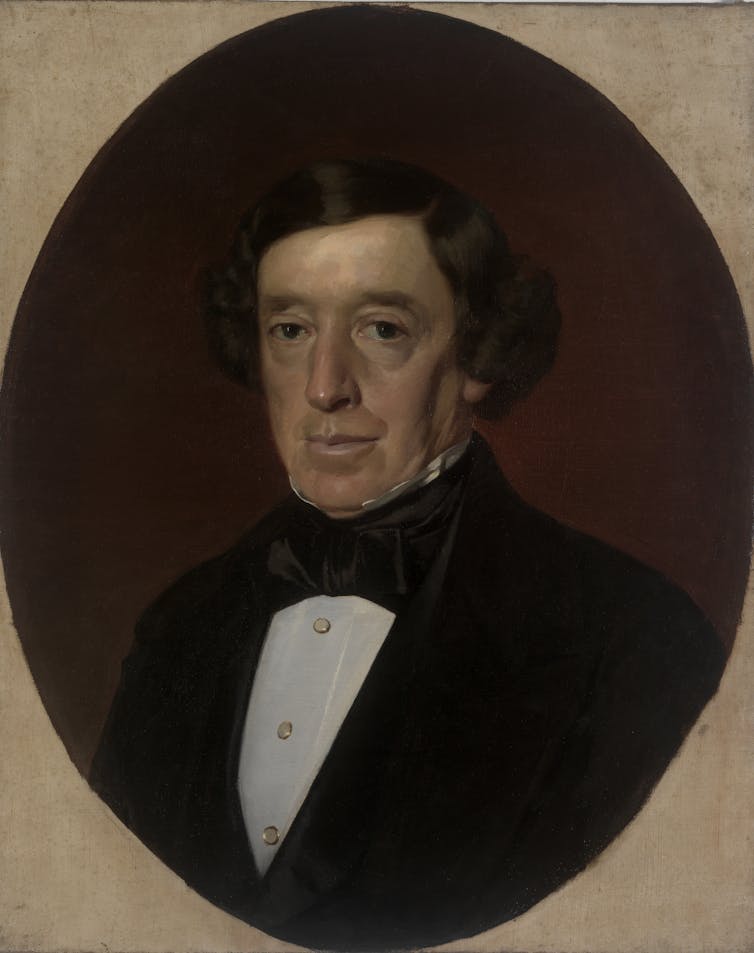
An Aim To Convey ‘Wants, Wishes Or Grievances’
The plan for establishing Aboriginal protectorates followed Robinson’s Friendly Mission model in Tasmania.
Protectors were to “watch over the rights and interests of the natives” and protect them from “acts of cruelty, of oppression or injustice”. The protector was also to be a kind of conduit to express the “wants, wishes or grievances” of Aboriginal peoples to the colonial governments. For this purpose, each protector was commissioned as a magistrate.
Protectors were encouraged to learn the “language of the natives” and “obtain accurate information” on the “number of the natives within his district”.
On paper at least, the “plan for the better protection and civilisation of the native tribes” seemed a remarkable step forward from previous years. Indeed, there was no plan prior to this that attempted to deal with the situation in Aboriginal lands beyond the official boundaries of the colonies – boundaries that were being increasingly crossed by hundreds of squatters and stockmen, and tens of thousands of cattle and sheep.
The establishment of the role of protectors, who would live among Aboriginal people and learn their languages, was arguably an early attempt at a conduit for an Aboriginal voice to government.
A Failure From The Beginning
But the scheme did not stop the conflicts and massacres. Shortly after the commission’s report appeared in print in Australia, dozens of Gamilaraay people were killed at Waterloo Creek and Myall Creek in northern inland New South Wales in January and June 1838.

The scheme also did little to stop the resistance warfare that broke out across the entire length of the frontier in the late 1830s and early 1840s – a counteroffensive that has been described by some contemporary observers as a “general uprising”.
The protectorates scheme was also bound up in the supposed superiority of the colonisers’ race and Christian religion. The ultimate goal was for Aboriginal people to become “civilised” and Christian – just like white people apparently were. It was a paternalistic concept that ultimately turned humanitarian ideals into an even more violent and coercive colonial system.
The protectors, as they had been directed to, could report to the government the “grievances” of Aboriginal people. These were often found to be, as one observer at the time wrote,
[an] explosion of long-pent feelings of revenge and hatred towards the whites, resulting from a long course of violence and injustice.
The attempt by the colonial authorities to understand the “wants, wishes and grievances” of Aboriginal people, however, failed in its mission to actually protect people. The system was abandoned in 1849.
From the 1860s, the various colonial governments developed even more coercive policies of “protection”, which controlled peoples’ lives and corralled them into missions and reserves, so their lands and children could be taken from them.
How This History Feeds Into Failed Policies Today
The Protector of Aborigines office was an important historical moment that embedded this idea of government control over First Nations’ people’s lives into the social and political fabric of this nation. These supposedly moral standards around “protection” and “civilisation” ultimately forced Indigenous people to become less Indigenous.
These beliefs continue to permeate our government today through failed paternalistic policies such as Closing the Gap. Such racialised policies draw on Australia’s history of containment of Aboriginal land and the ongoing colonial violence of “protection”.
Because of this, we have yet to generate new possibilities of truly meaningful dialogue.
The long struggle for rights and recognition by Aboriginal people has been punctuated by (all too few) moments of support by non-Aboriginal people. As the referendum for the Voice approaches, another such moment beckons. Will this be history repeating itself?![]()
Stephen Gapps, Historian and Conjoint Lecturer, University of Newcastle and Lynda-June Coe, PhD Candidate, Macquarie University
This article is republished from The Conversation under a Creative Commons license. Read the original article.
Friday essay: Private Leo, my imaginary father

My mother fell in love with my father, Leo, at a Melbourne suburban dance hall in 1946. He was 26, handsome, athletic, smart, a newly minted war veteran, and his grin was infectious. They were a dazzling couple, as their later wedding photos show. Many decades on my mother liked to tell of Leo’s mother warning her that he was going to prove a handful — and was she prepared for this? Possibly my mother told the story to let us know that her love for Leo could never be doubted. Or equally she might have been letting us know that she had no idea what a handful he would actually turn out to be.
In 2017, when Leo died at the age of 97, one of my brothers gave me a folder of papers. They were the documents of our father’s military service. I put them away with clippings, incomplete family trees, photos and birth and marriage certificates that constitute a patchy record of our unwritten family history.
Three years later, at the height of Melbourne’s extended lockdowns against a rising death toll from COVID-19, with time on my hands at home, I began going through the book shelves, throwing out what would never be read or consulted again, and culling papers accumulated through 40 years of writing and teaching. I found forgotten letters from past lovers and exchanges arising from past close friendships in whole series of letters, reminders that once I’d been a young man with hopes and ideals, but no idea what the future held for that young man. There were letters and notes from my father too, one of them dismissing me as a “receiver”. His disappointments in me were many. His letter explained at length what a receiver is on the football field and how team mates feel about such a cowardly player among them.
When I came across his war documents this time it was with a fresh curiosity about the young man who had been the subject of eight years of military clerks’ scribbled notes. I wondered how I might fit this record of him as a young recruit to the violent father I’d known. As his first son and second child I had swum in a world made of him, never wondering whether I really knew him but always feeling I knew him too well. Perhaps, I thought now, in these military records I might glimpse the youth he once was.
****
I can remember a line of white rime along the edge of his mouth as he beat me one night, seemingly unable to stop, my mother from the hallway saying over and over, “That’s enough, Leo.” What strikes me now is that I so neatly filed away this image of his lips during the terror of a beating.
Sometimes there were lucky escapes when he did hold himself back. We had a square wooden table painted blue that fitted in to a kitchen alcove. It was possible to scramble under this table as a small child and press myself against the far wall out of his reach, knowing he would refuse the indignity of getting down on his knees to crawl in after me.
Going through the papers of his war record I began to wonder if he was someone else as a young man — someone I would not have feared and might have even enjoyed knowing.
****
In his late teenage years, wiry Leo was a talented suburban cricketer, about average height, with a thin, straight nose and that handsome grin. His intense green eyes were too deeply set to ever give him an expression of openness, though in certain moods he would have been handsome and irresistible.
A week before turning 19, in the inner northern Melbourne suburb of Carlton, he enlisted in the Australian armed forces, signing an oath to “well and truly serve Australia’s Sovereign Lord the King” for the next three years. This was seven months before Australia joined with Britain in war. Too young for the army, Leo had enlisted in the mostly part-time Citizens Militia Force, a body meant to supply the army with trained recruits; and once war was declared in September 1939, 40,000 were immediately deployed from the militia into full service. Was Leo declaring himself keen to be part of that war once it got under way?
I don’t understand this enthusiasm to be absorbed into the military so early. Perhaps it was a way of putting distance between himself and his childhood family. Or something he did with his mates in a moment of shared restless ratbaggery. It might have been a sign of determination to show his older brothers he had become a man. Among them, Jim and Bernie did not enlist until 1942.
Leo was one of six brothers, and as it turned out he would be the only one among them not to achieve a professional education. Suddenly enlisting at 18 might have been the beginning of a series of impulsive decisions that so complicated his life it became impossible for him to stop improvising as he went, decade after decade, through the rest of the 20th century.
Not once did we hear from him a word of praise for England or the English. With an identity built upon Irish Catholic hatred directed at Great Britain, he could not have joined the military in the hope of being sent to Europe to defend the English.
But even so in November 1941 he signed a new form in Carlton to enlist as a regular soldier. One part he left blank, possibly as self-protection: What is your religious denomination? Control of what he considered personal information was always vital to him.
Less than a year later he signed a further attestation, this time from an office at Adelaide River, a hundred kilometres South of Darwin. He noted on this form that he had been serving as a Corporal at an Australian Army Bulk Issue Petrol and Oil Depot in the Northern Territory. He committed to serving the King “until the cessation of the present time of war and twelve months thereafter”. His Medical Examination Report is a quick handwritten note: “A1”. He left education and religion details blank. He was moved to Darwin.
He had been serving in the Northern Territory since the first week of April in 1942, and by then the Japanese air force had made ten raids on Darwin and across the Territory, including a bombing of Katherine, 300 kilometres inland.
Beginning in June 1942, the bombing raids over Darwin included low-level strafing by Japanese Zeroes. The long-range Zero fighter planes, stripped of armour and radios, were so lightweight, fast and deadly that pilots of the less nimble Australian planes each carried a pocket-map marking food caches buried along the northern coast in case they were shot down — as many were.

Much later my father told us that the troops in Darwin became so familiar with the routines and flight paths of the Japanese bombing fleets that they knew what times were good for being out on patrol or out partying, and when to head for the bunkers near the beach.
There were at least 77 raids over the Northern Territory alone between 1942 and 1944. Nearly 200 Japanese airmen died as their planes were brought down, with many wrecks and bodies still not found today. By my count, my father was present for more than 30 raids during his 11 months in and around Darwin.
In his eighties he became somewhat deaf, and blamed this on the effects of being so close to exploding Japanese bombs. There were stories of him leaving a card game just before a bomb landed, and of raiding the liquor cabinets in abandoned suburban Darwin houses, wheeling out a piano to dance and sing in the empty streets between raids. When he was in his nineties, and I was spending time in Halls Creek, he said that if he had got there during his service in the north it would have been in the back of a military police truck under arrest since Halls Creek was the site of the army’s prison.
My impression is of a restless man moving step by step, oath by oath, deeper into the army, further from home, and closer to harm. He was never the kind of patriot to be proud of dying for his military leaders or his nation but perhaps he was the kind of young man who could not resist an adventure, a chance to prove himself, or a shot at being among the bravest. He could have remained safely a clerk at the Adelaide River Depot, but it seems he was determined to be in Darwin under those bombs.
****
Leo had a younger brother after whom I was named; he was disabled by polio. I have seen a newspaper photo of the older brothers wheeling him on a portable bed to a VFL football game. His illness might have been rare bad luck, but not so rare then that the family felt singled out by a malevolent fate. He died aged 17 in 1940. There is one small, glossy snapshot of him peeking over the top of his wicker pram, head propped by a fluffed pillow, a confident smile across his thin face, his gaze direct. In this photo he looks as if he would take an interest in whoever stopped to talk. He looks well loved.

My father’s parents, Alice and Tom, were stalwart members of their community and their Catholic parish. Alice had been a school teacher. Tom was a local station master in the northern inner Melbourne suburb of Coburg after serving in country towns. He kept a milking cow on Crown land beside his railway station. In a surviving family photo he stands in railway uniform ramrod straight, unsmiling and clear-eyed in front of his extended family. My father never spoke about him except to tell the story of his death.
Tom died at the age of 66, in 1947, fallen from his bicycle in Princes Park on his way home from the Carlton football ground. That afternoon the Carlton team had made a grand comeback in muddy conditions from being five goals adrift of Richmond well into the third quarter. Carlton would go on to win the VFL premiership that year, with their centre-half-back Bert Deacon securing the Brownlow Medal.
When Tom had failed to return, my newly-married father and one of his brothers went out looking through Brunswick and around Princes Park. Eventually they went to the Carlton police station where they were told that there was an unidentified body at the city morgue. The brothers late that night identified the body of their father. He had died of a heart attack.
I wonder about Leo as a 27-year-old identifying the anonymous body of his father only a few years after brothers on both sides of him had died, and himself a recent war survivor.
It was the death of the third son, Bernie, early in the battles of Finschhafen on the remote Huon Peninsula in the north of New Guinea that, I think, most deeply shook my father. Bernie died in October 1943 at the age of 26, one of 73 Australians to die in the first of those battles. The record shows my father was given a week’s leave without pay shortly after Bernie’s death, then a second request for another week of leave was rejected. A few months later he changed his “next of kin” notice on his military details from his mother to his father’s name. The telegram notice of Bernie’s death had been delivered directly to his mother, and I guess Leo understood that she could not have withstood another such telegram.
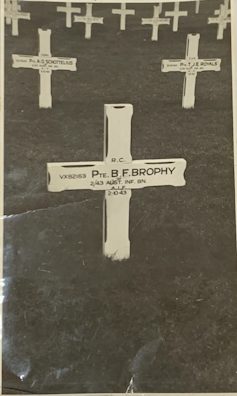
In his last years my father asked to be taken to Papua New Guinea to visit Bernie’s grave at the Lae War Cemetery. No one in the family had been there, and as the last living brother his mind went to this unfinished business. But he weakened too much and too quickly for us to consider the journey.
His other older brother Jim flew bomber planes across Germany from Britain. Afterwards Jim kept his medals out of sight. Refusal to celebrate the war might have been a necessary family gesture of respect for the death of Bernie.
My father’s military mementos lived in the spidery stillness of a dim shed at the back of our childhood yard in Coburg. I remember a jacket with corporal stripes, a sheathed Japanese bayonet that I spent many hours polishing and marvelling over. And a gas mask of rubber and canvas that turned us into monsters as we took turns trying it on.
****
On the eleventh of January 1943, Leo’s papers show he was demoted from Corporal to Private at his own request. He had joined the First Australian Parachute Battalion. Without direct combat experience, and by concealing a defect that would have excluded him, he had managed to be selected for the most elite fighting and flying unit ever formed in Australia. His defect was colour blindness.
His story was that he listened to a man in front answer the questions put on colour vision, memorised them on the spot, and repeated them back to the testing officer. Did he do this for a bet or just for the hell of it? Or was he caught up in some kind of trouble — and this voluntary demotion with a switch to the new paratroop battalion looked to be a way out? And if perception of colour might have meant the difference between life and death on the battlefield for himself and his comrades, why did he risk such disaster? His paths through the army and the war look to me to be erratic, impulsive, risky.
As a member of the First Parachute Battalion, newly Private Leo was being trained to make incursions into enemy territories. As well as airborne drills, the men were expected to learn guerrilla warfare tactics while carrying on their backs equipment weighing up to 30 kilograms. He qualified as a parachutist in December 1943, which meant he had completed at least seven successful jumps over ten months, a time cleaved by the death of his brother Bernie. Refusals to jump were not uncommon among trainees. Most often a refusal to jump occurred on a trainee’s third flight.
The explanation for this was that a first jump could be exhilarating, the second a return to reality, then at the third a man might come to understand the real dangers. These troops jumped without auxiliary parachutes on the reasoning that the auxiliary pack was too cumbersome, and in any case they were jumping at such low heights that if a parachute failed there would be no time to release an auxiliary.
Within the first year of the formation of the Parachute Battalion, five men had died in training mishaps and more had suffered broken limbs, concussion and other injuries. The parachutists soon won rights to extra pay in recognition of risk and danger. These superbly fit and now well-paid young men became infamous for excursions to whatever breweries, hotels and brothels were near their remote bush training grounds.
To be a paratrooper was to know that you might at any time be ordered to jump out into an enemy sky, an easy floating target for snipers.

With one son dead in New Guinea, another training for high-casualty missions, and a third flying bomber planes over Europe, this family must have seemed set to pay much too high a price for any coming Allied victory.
In March, 1944 the Parachute Battalion underwent intensive jungle warfare manoeuvres, participated in dawn attack rehearsals over Wollongong, and were moved from the Blue Mountains to Mareeba in North Queensland not far inland from Cairns in preparation for a possible mission into New Guinea with American support.
It was during this month of feverish preparations for real engagement in the war that my father suffered injuries to his ankles in a jump. He was one of five injured in training jumps during that month. Leo was hospitalised at Concord on the Parramatta River where he was treated then discharged to the Lady Gowrie Convalescent Home. From April until July he was moved between hospital and convalescent home repeatedly. It seemed he was being invalided out of the army.
Somehow, though, and following his own brand of determination, he found his way back to the Parachute Battalion’s training ground in Queensland where he took charge of managing the officers’ mess. J. B. Dunn notes in his history of the paratroopers that at this time Leo had earned the reputation of being “the most tight-lipped man in the Battalion”.
He had made his way back north, I imagine, because he had found for himself a place and a reputation among these paratroopers. Privy to information, accepted by this species of men, and probably at least on the fringes of whatever scams went on, Leo could be trusted to keep the truth close. This fits the man I knew. He loved to talk, and he could have us almost falling off our chairs at the dinner table once he turned his talents to mocking our neighbours and friends. But when it came to business or money or murkier matters of sexuality he was either utterly tight-lipped or so meanderingly impenetrable in anything he said that we could not trust or follow his talk.
Operating from a zone of bluff somewhere between bully and charmer, salesman and commander, he never let up. I expect in business he wore people down. He was always looking to show us he was a man with the inside information, the man with a way through where others floundered. When he wanted one of my younger brothers to be privately tutored in mathematics he found a man a few doors away who was so smart “he could teach a cow to count”.
My brother was sent to him for lessons and I was encouraged to go there too to play chess with this apparently brilliant man. I don’t know why I agreed to go. A deep introvert as teenage years approached, I spent my days when I could with comics and books. Perhaps I went out of curiosity or most likely it was just easier to do what my father told me to do.

This amazing man my father had found lived in a small newly-built house with a young and beautiful wife. When we played chess his beautiful wife would serve us tea and cake, and he would say as she left the room that when he married her he thought he could teach her something, but that she had turned out to be plain dumb. She couldn’t learn anything and he couldn’t teach her anything. Had he made this confession to my father? Shocked that he would let his new, young wife witness him speak these insults, I was distressed. But I returned to the house many times.
I think I kept going back even when my brother’s lessons had ceased. I was half in love with his wife, and I hated him. He was large and pushy, his heavy eyes glistening with self-satisfaction. He liked above all to be able to impress a small boy with his big talk. After a while I thought I understood that in fact my father considered him a fool, and that I must be just as much a fool in my father’s eyes if I sought this man’s company.
****
Perhaps it was some overly-rigid discipline adopted from his military years or an earlier implacable standard he identified with, for when we left to go to school in the mornings it had to be with hair brushed, ties tied, caps and hats straight, and shoes polished. “You might be able to learn Latin but you can’t even learn to polish your shoes,” he would say to me. And in a bloody-minded way I became happy enough to construct a rough version of myself around that accusation. Perhaps the humiliation of it remains as a shadow, a provocation, and a point of pride for me. He held us close but he held us in contempt.
Does his silence about his father (and in fact his whole childhood), and that seeming eagerness to be gone into the army as a teenager, speak of damage done well before he became a soldier in a war? This would be another story, and much of it would have to be fiction.
The one value my father held to as a near-absolute was tribal loyalty. How could it be that we were Catholics (with the moral absolutes that came with that), but no matter how un-Christian or how “sinful” one of us might be, my father’s loyalty to family would come above all? And yet it was inside the family where he let his temper and venom loose. None of it made sense.
His obsession with sexual morality was equally intense. Politicians and public figures were judged on their fidelity in marriage. The increasing public disgrace of the Catholic Church for prolonged and incomprehensible abuse of children in their care confronted him. In the last year of his life my father did try to tell me something about his experience of abuse, perhaps impulsively as a plea for understanding, or more likely to prove some point important and urgent for him at the time. He talked of a family friend who used to visit their home and get drunk and stay the night. He said the man climbed into his childhood bed with him, so he understood what men could do to children. That was all. Perhaps he was showing me the world could teach him little he didn’t already know. He went on to some other topic, some other complaint. He had made his point — about vulnerability, knowledge, men’s evil, and even perhaps about the failure of parents to protect their children in his story that was so brief it was not even a story.
****
While working on this essay I have been reading, among a half-dozen other books, Jess Hill’s report on research into domestic abuse, See What You Made Me Do. I realise that my childhood home was sometimes a prison and sometimes a haven. Each day as I returned from school and each morning as I woke in that place I couldn’t be sure which it would turn out to be.
****
My father believed he understood men — a conviction that could bring you forcefully in under his orbit. As long as he could see you as a type, he had you, even if it took him a few wrong guesses to get you right. Then you were pocketed.
His best years were his time in business managing teams of hot-asphalt spreaders. The workers were mostly Italians who loved him and were devoted to him. In my last couple of years at school during the mid 1960s I did labouring work with them through the summer and they told me what a good boss my father was. They bestowed on me some of the affection and loyalty they felt towards him. I was in another world with them, a place where my father was trusted, where something like love passed between him and these men, a place where migrant families saw him as their avenue to success and dignity. I was proud to be the son of such a man — and upset at him for not bringing these qualities into his own family. What happened to him in our presence? What was it that brought out such desperate meanness when he was with us? There was something about family life that could turn him inside-out with rage.
Sometimes, though, he was that generous father we craved and imagined. He could take us into the countryside for hikes and picnics or to the beach in summer where he liked to swim out until he was a far smudge on the sea. For a while there were purple-eyed ferrets caged in the back yard. I remember going ferreting with him and his mates, setting the nets at rabbit-hole entrances across a paddock, then letting a ferret into a burrow and waiting for the rabbits to come racing in a panic up and out and into those nets where they would be easy to grab and have their necks wrung.
Sometimes, though, a ferret would settle with its catch inside a burrow, refusing to emerge. It was then that each person had to guard an entrance while someone began digging down to where the ferret was guarding its kill. It was chaotic, messy, hit-and-miss. But it did put rabbits on our table, and for a while we ate rabbit as often as people eat chicken now. I think it was at this half-wild life of mucking about in the open air with other men, making up the rules as you went, that my father found himself most fully.
****
In January 1945 his extra parachutist pay was cancelled, with a note on his file indicating he was unfit for marching or for long standing due to a “stiff foot”. Nevertheless, in October Leo managed to join a group re-assigned to embark for Singapore. They visited the Changi Prison and contributed a contingent of troops to a guard of honour for the official surrender. Until January 1946 they operated as local Military Police preventing looting while order was restored to Singapore.
Then on May 29, 1946, Private Leo was discharged without ceremony back into civilian life. He had been in the military for most of the first eight years of his early adulthood, and upon resuming his civilian status his home address was still his parents’ address in Coburg.
By September 1949 he would be married with a two-year-old daughter and me, his new baby boy. Seven more children would follow.
How unprepared was this erratic, restless young soldier for the life that he found himself choosing so soon after the war? In her chapter on the experiences of children in families where fathers are abusive, Hill writes of a form of post-traumatic stress suffered by combat veterans:
Every time a potential threat arises a survival response triggers in the brain, motivating the soldier to act defensively — a reaction that can be the difference between life and death.
This describes my father’s reaction when faced with a crisis or even a passing difficulty within the family. He could react as if his physical life depended upon him fighting his way through to an immediate victory — darkly red in the face, veins striking lines down his neck, green eyes alive with an animal urge to survive no matter what damage might be done to others. It was easy to be terrified of him at these times.
Was this reaction fixed in him by the cumulative terrors of the bombing raids over Darwin, the repeatedly suppressed panic he must have faced in jumping from planes, the shock of seeing mates die in accidents, the physical and psychological rigours of training among men renowned for their wildness — and by feelings of grief and guilt over the death of his brother Bernie? He kept a photo of Bernie on his desk all his adult life. How far beyond his temperamental limits might he have been tested during those shaping years of his early twenties? I suspect there was as much shame as pride for him in his war experience, and more confusion than purpose.
Larrikin or patriarch? Trouble-maker or law-giver? Working man or thinker? Tribal lord or obedient Catholic parishioner? Scheming insider or cynical outsider? Husband or knockabout? Survivor or warrior? He loved telling stories, and he was good at it, but some form of confused shame, I think, kept him from telling the stories that were closest to him, which were the ones I wanted to hear.
The almost daily violence at home continued through our childhoods in part because we kept it among ourselves. There I was, silent, arriving at school of a morning shamed by bruised legs; and there were the teachers keeping their distance. The vicious dog our neighbour kept in his tiny yard was no less loud, mad and wrong than my father. But nobody complained about either of them. There might have been no words for what was happening. Now I write what I can in the hope of coming somewhere close to comprehending how my father might have been as a young man bursting with himself while struggling, as I imagine him, between recklessness and fear, cowardice and bravado, all the while desperate to keep himself intact as much as a green young man could in that war-time world. I am writing this with an eye out for the ways my imagined father might point me away from a shamed, inchoate privacy that can only make each of us diminished versions of ourselves.
There is a surviving faded black and white photo of him with a mate who remained a lifelong friend. They are in Darwin on the wharves, both dressed in loose-fitting tropics uniforms, helmets at cocky angles, my father’s arm over his friend’s shoulder as their bodies lean in towards each other.

My father’s expression is easy, open, confident, untroubled. They look like men who have arrived in a place that suits them. This isn’t the man I remember. But it’s a man I’d like to get to know and spend time with. This is the man my mother must have loved so completely just a few years later. In the moment of the photo he appears supremely comfortable with himself and with the kind of friendship made possible in that war zone.
This essay was recently shortlisted for the 2023 Calibre Prize for an outstanding essay.![]()
Kevin John Brophy, Emeritus Professor of Creative Writing, The University of Melbourne
This article is republished from The Conversation under a Creative Commons license. Read the original article.
DIY degree? Why universities should make online educational materials free for all

This article is part of our series on big ideas for the Universities Accord. The federal government is calling for ideas to “reshape and reimagine higher education, and set it up for the next decade and beyond”. A review team is due to finish a draft report in June and a final report in December 2023.
As part of the federal government’s bid to overhaul higher education, the Universities Accord discussion paper is seeking to “widen” opportunities for people to access university. It also wants to “grow a culture” of lifelong learning in Australia. As the review team note, most people in Australia who study at university are under 35.
Lifelong learning can help to ensure that workforce skills are up to date and that jobs in high demand can be filled, as well as enabling people to create new job opportunities through innovation.
These issues need to be approached in many ways. And will inevitably include proposals for shorter forms of learning as well as addressing the financial cost of attending university.
My proposal – also outlined in this journal article – is that a proportion of educational resources generated by publicly funded universities should be made public and freely available.
This could radically expand opportunity and flexibility and potentially allow students to design their own degrees, by doing multiple different units from different universities.
This Idea Is Not Completely New
There is a precedence for this idea. The international Plan S initiative is led by a group of national research funding organisations. Since 2018, it has been pushing for publicly funded research to be published in open-access journals or platforms.
Australian chief scientist Cathy Foley similarly wants all Australian research to be “open access, domestically and internationally, and for research conducted overseas to be freely available to read in Australia”.
When it comes to university learning, a 2019 UNESCO report encouraged member states to make higher education educational resources developed with public funds free and freely available.
In a March 2023 report, the Productivity Commission recommended the federal government require “all universities to provide all lectures online and for free”. The commission said this would increase transparency in teaching performance and encourage online learning.
But this also has the ability to make to higher education more accessible.
There is already plenty of international experience sharing educational materials online – including the global Open Educational Resources public digital library. This includes resources from early learning through to adult education.
The Productivity Commission says universities would not lose income by making educational resources open access. This is because universities “sell” credentials, not resources. It is also argued overworked academics can save time by using materials created by others.
But there is resistance from institutions and academics, including a perception free resources will be poor quality and take a lot of time to create. There is also a lack of technological tools to adapt resources. This may explain why open education has not yet taken off in Australia.

How Would This Work?
My plan would require open online sites to host educational materials produced by academics. These would need to be moderated or curated and published under an open access license.
It would include a peer review system for educational materials like the one already used for research publications. Academics could get credit for publishing, updating or reviewing resources and the publication of education output would be included in the university metrics.
This could also help reverse the current downgrading of teaching in Australian universities in favour of research.
There could be three types of users:
students who access materials through the university that produced them, as per current practice
individual students outside the university that created the materials who access materials for their own learning at whatever stage of life they are relevant to them
other organisations, including other universities, that then contextualise and deliver the materials to their students.
What Kind Of Materials Are We Talking About?
The Productivity Commission has talked about “lectures” being made available for free. But lectures are not a good way of transmitting information, especially online. For one thing, they do not promote critical thinking.
My plan proposes whole courses or at least sections of courses with assessments, would be provided. This includes text, videos and software and can include course planning materials and evaluation tools.
An indication of the academic level to which the course speaks, and the amount of possible credit, should also be provided.
What About Accreditation?
Accreditation of learning should be considered as part of this.
The OERu is an international organisation where partner universities (including Penn State in the US and Curtin University in Australia) offer free access to online courses. Students pay reduced fees if they want to submit assignments, which can earn them microcredits towards a degree offered by one of the partners.
A more radical option would be to develop a system where students collect microcredits from whatever source they wish and present them to an accrediting body for an academic award rather than enrolling in a particular degree course.
Suggested Recommendations
As it prepares its draft report, the accord review team should recommend:
most university-generated educational material should be public and free
as an interim goal, within three years, 10% of all public university courses should be freely available online
an organisation should be created to develop the infrastructure needed to do this. This includes, open repositories, a peer review system for open educational materials, and systems for offering microcredits to students and academic credit to academics who take part.

Why Is This A Good Idea?
The Productivity Commission says making this material public will encourage higher quality teaching, empower students and assist in lifelong learning. On top of this, there is the potential for true reform of the educational landscape.
It provides opportunities for collaboration between universities, rather than a competitive business model. And it would make teaching more important, rather than an “inconvenient task” by those seeking academic advancement through research.
Finally, it would genuinely make learning more accessible and more affordable, no matter who you are or where you live.![]()
Richard F. Heller, Emeritus Professor, University of Newcastle
This article is republished from The Conversation under a Creative Commons license. Read the original article.
Native raspberries, limes and geraniums: how did these curious plants end up in Australia?
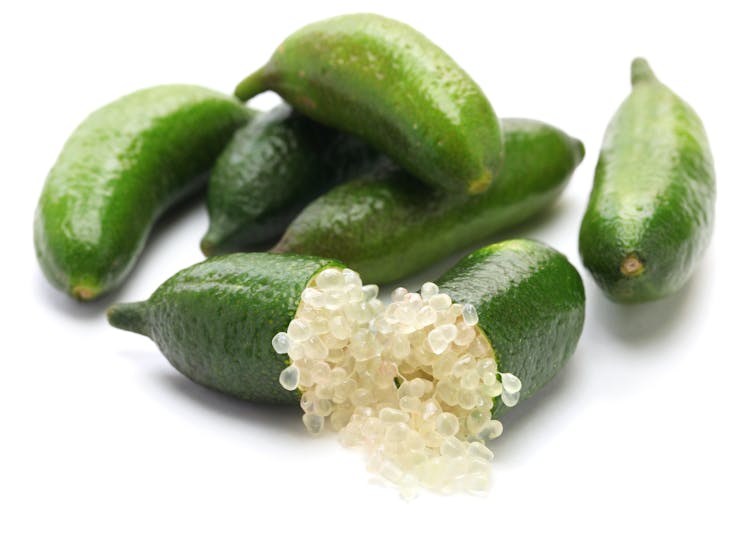
While plants can’t walk, they can certainly travel. Some species have travelled vast distances over millennia, moving by different and varied modes.
Some found new habitats when the continent they were riding on slowly crashed into another. Others went on perilous ocean going journeys – think of coconuts washing up on new island shores. Others still have been carried as seeds by birds or other animals – including us.
Many have now become local, endemic to their region of Australia. Some may surprise you.
Native Nuts – How Macadamia Trees Began
Early in the age of jet aeroplanes, flying to America meant a stop-over in Hawaii to refuel. Here, many Australians tasted macadamia nuts for the first time and probably assumed they were a local delicacy. Imagine their surprise at discovering the truth. Hawaii’s macadamia industry began when a few nuts were sent from Australia in the 1880s.
Of course, this was not news to Australia’s First Nations people, many of whom had enjoyed macadamia nuts for millennia.
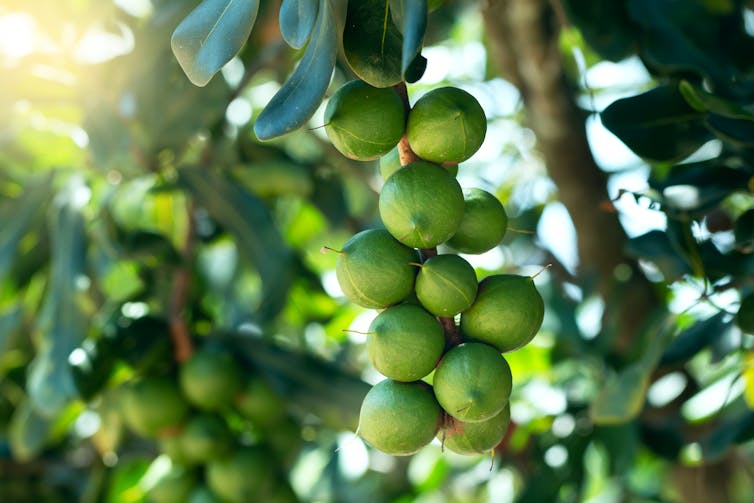
There are four species of Macadamia, of which two are the most important nut producers, namely Macadamia integrifolia and M . tetraphylla. All species belong to the Proteaceae family, meaning they are related to banksias, grevilleas and proteas.
This family connection reveals the genus has a long evolutionary history, dating back about 100 million years. Macadamias travelled with the continent of Australia as it split off from Antarctica and South America.
In their natural habitat across northern New South Wales and southern Queensland, these subtropical trees can reach heights of 25 metres. But even though they are now widely farmed, they’re actually threatened in the wild – and may be further threatened by climate change.
Oranges, Lemons – And Native Citrus?
Many of us are fond of tart and tasty citrus – oranges from southern China, lemons probably from northern India. All the world’s citrus trees stem from an ancestor species which grew in the foothills of the Himalayas, according to DNA evidence. Over time, these trees spread out and new species split off. Eventually, about 8–10 million years ago, they arrived in Australia.
The most well known is the finger lime, C. australasica, with tiny globes spilling out of the fruit like citrus caviar. But there are others, like the Australian lime, Citrus australis and the desert lime C. glauca. Like many citrus, they can be prickly customers with long painful spines. While most are shrubs and small trees, the Australian lime can reach heights of 20 metres.
Native Raspberries
In recent years, the native raspberry, Rubus probus, has achieved celebrity status as a prickly, quick growing bramble with a good fruit.
But like its relative, the blackberry, Rubus fruticosus, you have to work hard to get fruit and rarely come away unscathed.
That’s why it was big news when a thornless specimen was found and propagated. This will make a big difference to the cultivation of our native raspberry.

So how did Australia come to have raspberries? It seems likely their ancestors migrated from North America towards Europe and Asia between 10 and 15 million years ago and eventually made it to Oceania.
Exactly how the genus Rubus made it to Australia is unknown, but the most likely pathway is a few seeds stuck to the feathers of a migrating bird. It could have happened as recently as a few hundred thousand years ago.
Native Geraniums? It’s True
I associate geraniums with my maternal grandmother, who had the most magnificent red geraniums along her back fence. Family folklore had it they were cuttings from a prize winner at a major horticultural exhibition – and I believe it.
While we associate garden geraniums with Europe, they’re actually African and only arrived in Europe in the 17th century.
But while we all know these geraniums, Australia has its own species. That fact still amazes me after decades of studying plants.
But first, let’s clear up the debate over names. In the 17th century, geraniums and closely-related pelargoniums were grouped together in a single genus. But early in the 18th century, Charles LeHeritier – the botanist who first described eucalypts – divided them and there has been confusion ever since.
The easiest way of telling them apart is that geraniums have five petals of the same size and shape but pelargoniums have two larger petals and three smaller ones.
Most of the Australian native plants commonly called geraniums are in fact pelargoniums. You may have stumbled across Pelargonium australe, the most common of our seven species, which is spread across much of southern Australia.

Native Orchids: From Flying Ducks To The Queen Of Sheba
There’s something about orchids. In the 19th century, so many Europeans went mad for their flowers that the name “orchidelirium” was coined.
We have some of the most iconic orchids as natives, such as the remarkable flying duck orchid and the stunning Queen of Sheba. Our 1800 species mostly grow in our tropical and subtropical areas.
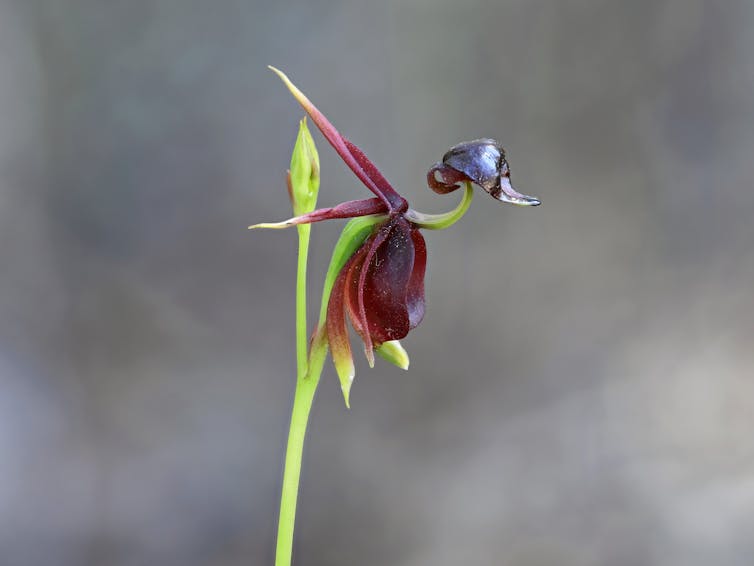
Some orchids can be traced back to the last years of Gondwana. But curiously, we also have tropical species which must have island hopped from Papua New Guinea and Indonesia more recently.
That’s only the start of our surprising plants. We have native tamarinds, native rivermint, and a native rhododendron.
And did you know that cloves come from an Indonesian species of lilly pilly? This species is related to Australian lilly pillies, a genus which evolved as the final fragmentation of Gondwana occurred about 65 million years ago. They rapidly diversified and there are now over 1000 species.

Plants move slowly. But they move much more than you’d expect. Their success has enriched the biodiversity and novelty of our ecosystems in surprising ways. As for me, I love an Australian macadamia nut – and I’ll always love those imported red geraniums.![]()
Gregory Moore, Senior Research Associate, School of Ecosystem and Forest Sciences, The University of Melbourne
This article is republished from The Conversation under a Creative Commons license. Read the original article.
What really started the American Civil War?


Curious Kids is a series for children of all ages. If you have a question you’d like an expert to answer, send it to curiouskidsus@theconversation.com.
What really started the Civil War? – Abbey, age 7, Stone Ridge, New York
The U.S. citizenship test – which immigrants must pass before becoming citizens of the United States – has this question: “Name one problem that led to the Civil War.” It lists three possible correct answers: “slavery,” “economic reasons” and “states’ rights.”
But as a historian and professor who studies slavery, Southern history and the American Civil War, I know there’s really only one correct answer: slavery.

White Southerners left the Union to establish a slave-holding republic; they were dedicated to the preservation of slavery.
What’s more, unlike slavery in the ancient world, slavery in the United States was based on race. By the time of the Civil War, Black people were the ones enslaved; white people were not.
Every American citizen, whether born in this country or naturalized, should understand that the conflict over slavery is what caused the Civil War.
The History
Slavery in the U.S. began at least as early as 1619, when a Portuguese ship brought about 20 enslaved African people to present-day Virginia. It grew so quickly that by the time Colonists fought for their independence from England in 1775, slavery was legal in all 13 Colonies.
As the 19th century progressed, Northern states slowly abolished slavery; but Southern states made it central to their economy. By 1860, nearly 4 million enslaved people lived in the South.
Increasingly, the North and South were at odds over the future of slavery. White Southerners believed slavery had to expand into new territories or it would die. In 1845, they pressured the federal government to annex Texas, where slavery was legal. They also supported an effort to purchase Cuba and add it as a slave state.
In the North, people generally opposed the expansion of slavery into new territories, and many favored the gradual emancipation of enslaved people. A smaller group, known as abolitionists, wanted slavery to end immediately.
But even though many Northerners opposed the expansion of slavery, they did not favor equal rights for Black people. In most Northern states, segregation was rampant, Blacks were barred from voting and violence against them was common.
By the 1850s, it became more difficult for the federal government to satisfy either side. The Compromise of 1850, a series of bills that tried to solve the problem, pleased almost no one.
The publication of the 1852 novel “Uncle Tom’s Cabin” – about the pain and injustice inflicted on an enslaved man – turned Northerners against slavery even more. In the 1857 Dred Scott decision, the Supreme Court ruled that enslaved people were not U.S. citizens, nor could Congress ban slavery in a federal territory. Two years later, the abolitionist John Brown attacked a federal arsenal in Harpers Ferry, Virginia, in an unsuccessful attempt to supply weapons to enslaved people.
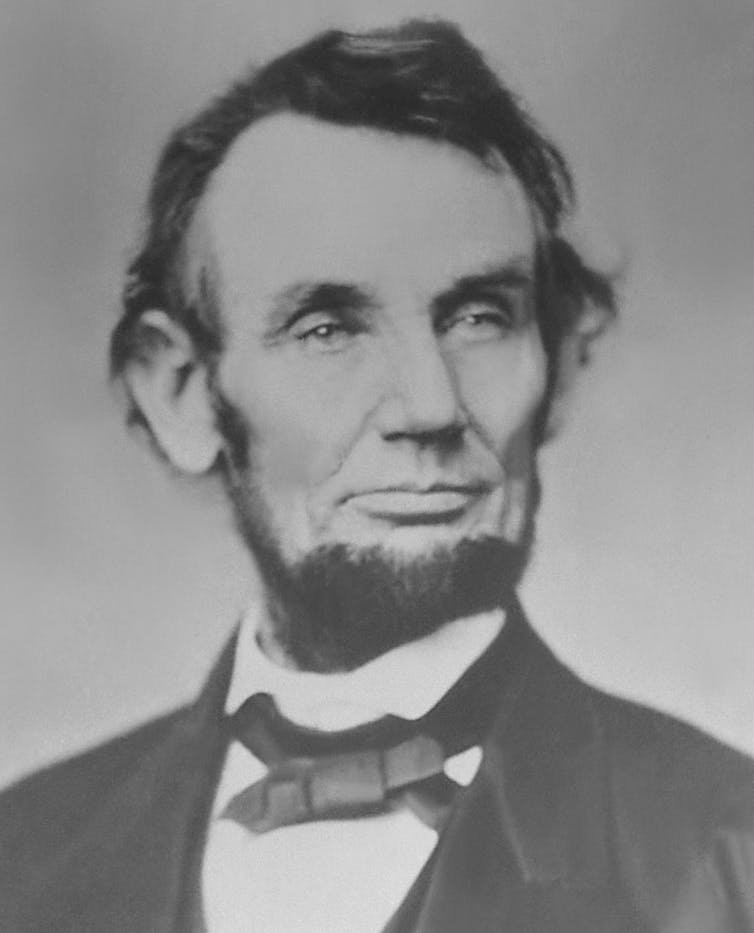
Lincoln Becomes President, Secession Follows
Amid this swirl of troubles, the presidential election of 1860 took place. A new political party, the Republican Party, was opposed to the spread of slavery throughout the western territories. With four major candidates running for president, Abraham Lincoln won the electoral vote – but only 40% of the popular vote.
The election of a president from a party that opposed slavery jolted white Southerners to action. Less than two months after Lincoln won, South Carolina delegates, meeting in Charleston, decided to secede from the Union – that is, to formally withdraw membership in the United States.
Other Southern states followed and said slavery was the primary reason for secession. Texas delegates wrote the abolition of slavery “would bring inevitable calamities upon both races and desolation” in the slave states. The Mississippi secession document said “our position is thoroughly identified with the institution of slavery – the greatest material interest in the world.”
Confederate Supporters Made Their Position Clear
The vice president of the Confederacy, Alexander Stephens, also said slavery was the reason for secession, and that Thomas Jefferson’s words in the Declaration of Independence – that all men are created equal – were wrong.
“Our new government is founded upon exactly the opposite idea,” Stephens told a crowd. “Its foundations are laid, its cornerstone rests, upon the great truth that the negro is not equal to the white man; that slavery subordination to the superior race is his natural and normal condition.”
Although the evidence shows slavery caused the Civil War, some Southerners created a myth – the “Lost Cause” – that transformed Confederate generals into heroes who were defending freedom. To some degree, that myth has, unfortunately, taken hold. Some schools are still named after Confederate generals; so are some military bases, although that is changing.
It’s important to know the real reason for the Civil War so the country no longer celebrates historical figures who fought to establish a slave-holding republic.
This article has been updated to clarify that the colonies became states in the United States of America.
Hello, curious kids! Do you have a question you’d like an expert to answer? Ask an adult to send your question to CuriousKidsUS@theconversation.com. Please tell us your name, age and the city where you live.
And since curiosity has no age limit – adults, let us know what you’re wondering, too. We won’t be able to answer every question, but we will do our best.![]()
Robert Gudmestad, Professor and Chair of History Department, Colorado State University
This article is republished from The Conversation under a Creative Commons license. Read the original article.
Newly described enormous marsupial wandered great distances across Australia 3.5 million years ago

Today, 80% of Australia is arid, but it was not always that way. In the early Pliocene, 5.4 to 3.6 million years ago, Australia had a greenhouse climate, widespread forests and diverse marsupial animals.
As the climate dried out in the late Pliocene, open woodland, grassland and shrubland spread across Australia. How did large marsupials cope with these changes?
In 2017, Flinders University researchers uncovered a skeleton eroding from a cliff face on the Warburton River, at the Australian Wildlife Conservancy’s Kalamurina Station in northern South Australia.
The skeleton belongs to a species in the family Diprotodontidae – a group of four-legged herbivores that were the largest marsupials to ever exist.
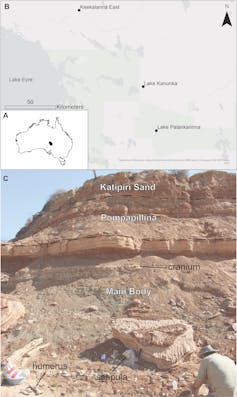
In a new study published in Royal Society Open Science today, we describe this fossil finding in detail, providing new insights into how the animal lived and moved.
Exceptional Preservation
Wombats are the closest living relatives of diprotodontids, but the two are as distantly related as kangaroos are to possums. As a result, palaeontologists have had a hard time reconstructing these large, long-gone animals, especially since most diprotodontid species have been described mainly from jaws and teeth.
But the common, widespread nature of diprotodontid remains indicates they were an integral part of Australian ecosystems until the last species, including the rhino-sized Diprotodon optatum, became extinct about 40,000 years ago.
It is rare to find multiple bones belonging to a single skeleton in the fossil record. Only a handful of studies have described parts of the limbs of a post-Miocene diprotodontid. As such, the newly described skeleton is of great importance and is even more special, as it is the first to be found with associated soft tissue structures.
We also compared the specimen to more than 2,000 diprotodontid elements from museums across the globe, making this the most comprehensive appraisal of a diprotodontid skeleton to date.
Our comparisons revealed the skeleton belongs to a new genus we named Ambulator, meaning walker or wanderer. We chose this name because the locomotory adaptations of the legs and feet of this quarter-tonne animal would have made it well suited to roaming long distances in search of food and water, especially when compared to earlier relatives.
We 3D-scanned the specimen, and the files are freely available for anyone to download and look at online.
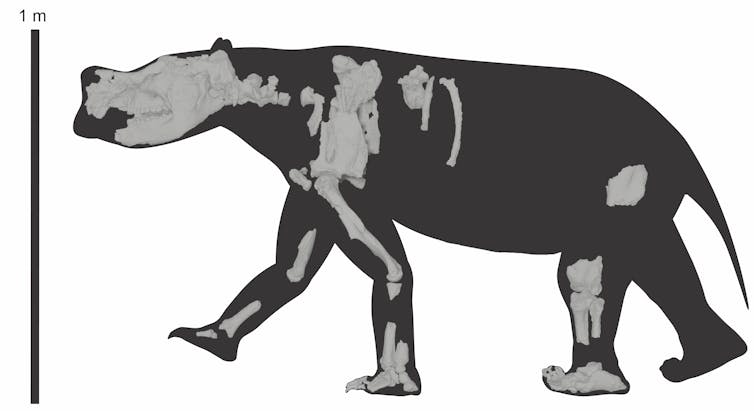
Walking Marsupials
We don’t often think of walking as a special skill – but when you’re big, any movement can be energetically costly, so efficiency is key.
Most large herbivores today, such as elephants and rhinoceroses, are unguligrade, meaning they walk on the tips of their toes, with their wrists or ankles not touching the ground.
Diprotodontids are what we call plantigrade, meaning their heel-bone contacts the ground when they walk – similar to human feet. This stance helps distribute weight and reduces energy loss when walking, but uses more energy for other activities such as running.
Many diprotodontids also have so-called extreme plantigrady in their hands – a wrist bone modified into a secondary heel. This “heeled hand” made early reconstructions of these animals look bizarre and awkward.
Development of the wrist and ankle for weight-bearing meant the digits became essentially functionless and likely did not make contact with the ground while walking. This may be why no finger or toe impressions are observed in the trackways of diprotodontids.
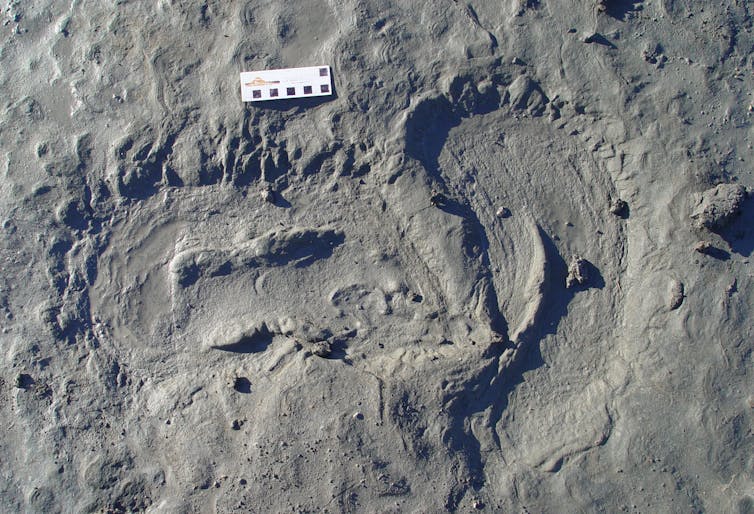
Climbers, Walkers And Grabbers
Diprotodontids have limb-bone shapes that can be grouped into three main types. There are those adapted to tree climbing, such as Nimbadon lavarackorum and Ngapakaldia tedfordi; and those adapted to more efficient locomotion and travelling great distances, such as Diprotodon optatum and Ambulator keanei (we call these “walkers”).
There are also diprotodontids that were terrestrial and probably could not climb. However, unlike the walkers, their forelimbs were not as specialised for walking and were able to perform a range of functions. These were “grabbers” such as Neohelos stirtoni, and likely Kolopsis torus and Plaisiodon centralis.
Walkers do not show up in the fossil record until we get to the Pliocene (3.5 million years ago). In fact, A. keanei is the earliest diprotodontid we know of that had these specialised walking adaptations.
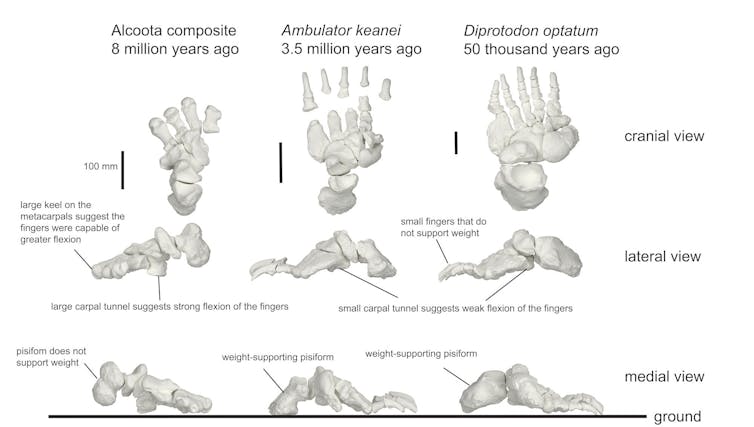
During the Pliocene, when A. keanei was around, there was an increase in grasslands and open habitat as Australia became drier. Diprotodontids likely had to travel much greater distances to obtain enough water and their preferred food, which was the soft leaves of shrubs and trees, not grass.
Animals such as Ambulator may have evolved to traverse great distances more efficiently. This may also have allowed diprotodontids to get bigger and support more weight. This would eventually lead to the evolution of the giant and relatively well-known 2.7 tonne Diprotodon.
Unfortunately, we will never get to see great migrating mobs of diprotodontids. But it’s amazing to know such a thing may have once been commonplace across the continent.![]()
Jacob van Zoelen, PhD Candidate, Flinders University; Aaron Camens, Lecturer in Palaeontology, Flinders University, and Gavin Prideaux, Professor, Flinders University
This article is republished from The Conversation under a Creative Commons license. Read the original article.
These magnificent 107-million-year-old pterosaur bones are the oldest ever found in Australia
Adele Pentland, Curtin University and Stephen Poropat, Curtin UniversityNew research on old bones has shed light on pterosaur fossils from the early Cretaceous period of Australia, which took place roughly 107 million years ago.
The bones were discovered in Victoria in the late 1980s at a fossil site called Dinosaur Cove, a few hours’ drive west of Melbourne.
Our paper describing the bones is published today in Historical Biology.
The Oldest Pterosaur Bones We Have
The Dinosaur Cove fossils are the geologically oldest pterosaur remains we have from the Lower Cretaceous of Australia.
These bones belonged to two separate individuals, because there’s a relative size difference between the two.
One specimen is a partial sacrum (the fused vertebrae from between the pelvic bones), a relative rarity in the pterosaur fossil record. The other is a comparatively small fourth metacarpal (part of the wing finger) – it is the first evidence of a juvenile pterosaur found in Australia.
Although we couldn’t pinpoint exactly which species in the pterosaur family these bones came from, the partial sacrum belonged to an individual with a wingspan estimated to exceed two metres. By contrast, the juvenile pterosaur had a wingspan just over one metre.
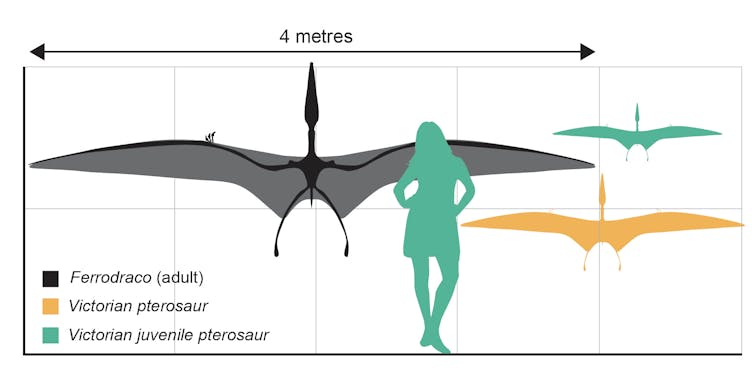
In the early Cretaceous, approximately 110–107 million years ago, Victoria was virtually unrecognisable. The Bass Strait was a narrow valley occupied by fast-flowing rivers. Conifers and ginkgoes grew here instead of eucalypts and grasses, and dinosaurs reigned.
On the ground, the dominant herbivore animals were small-bodied, beaked ornithopods, perpetually wary of the rapacious megaraptoran theropods.
For more than 30 years, it has been clear to scientists that flying reptiles called pterosaurs soared through the Victorian Cretaceous skies, above the heads of the dinosaurs. Until recently, however, they have remained a mystery.
Treasure At Dinosaur Cove
Large-scale excavations at Dinosaur Cove began in 1984, and for more than 40 years, a team of volunteers called Dinosaur Dreaming have excavated fossil sites along several other sites scattered across the Victorian coast.
Tom Rich and Pat Vickers-Rich, co-authors of our newly published paper, led the excavations that yielded not just the newly described pterosaurs, but myriad other discoveries as well.

The work at this rich fossil site has resulted in thousands of dinosaur bones and other fossils. These include fossil fish (bony fish and lungfish), skeletal remains from ornithopods, megaraptoran theropods, aquatic plesiosaurs and prehistoric mammals. There was also Australia’s only elaphrosaurine theropod: a lightly-built dinosaur with a small head, long neck, relatively short front limbs, long hind limbs and a long tail.
But among the rarest vertebrate fossils from Dinosaur Cove are those from pterosaurs.
Australia’s Pterosaur Record
The majority of Australia’s pterosaur fossils have been found in central-western Queensland. Indeed, the first pterosaurs reported from the continent were isolated remains from the Eromanga Basin, described in 1980.
Since then, more pterosaur material has come to light, with four Australian pterosaur species currently recognised: Mythunga camara, Aussiedraco molnari, Ferrodraco lentoni and Thapunngaka shawi.
Ferrodraco is the most complete Australian pterosaur to date, and is represented by an adult individual with a wingspan of approximately four metres, which we named as a new species in 2019.
Other pterosaur fossils from Australia include isolated remains from the Cretaceous of Western Australia, and opalised pterosaur teeth from the mid-Cretaceous of Lightning Ridge in New South Wales.
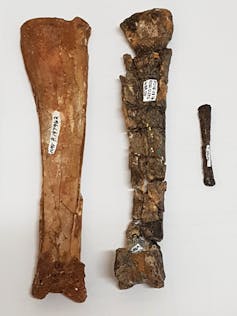
We don’t know which species the Victorian pterosaurs belong to. However, the comparatively small fourth metacarpal – a bone from the wing – is the first unequivocal evidence of a juvenile pterosaur from Australia.
Pterosaurs At High Latitudes
Few pterosaur remains have been reported from fossil sites that were at high latitudes during the Age of Reptiles – the Mesozoic Era.
Antarctica, which was at high latitudes throughout, has produced three pterosaur fossils. One of these awaits formal description, and another was recovered from the charred remains of the National Museum of Brazil.
The only reports of high-latitude pterosaurs in the northern hemisphere are of isolated footprints.
During the Cretaceous, Australia was farther south than it is today. In fact, Victoria was within the polar circle during much of the Cretaceous. Southeast Australia was not frozen over at this time, but there were weeks or months of continuous darkness during the winter. Despite these harsh polar conditions, life found a way to survive and thrive.
This prompts a few questions: were pterosaurs permanent residents in southeast Australia? Or did they migrate south during summer and head north for the winter?
From a young age, pterosaurs were adept fliers, their bones already able to withstand the stresses of both launch and flight. However, subtle variations in the shape of the bones imply that hatchlings differed from their adult counterparts in terms of speed and manoeuvrability.
Until we discover pterosaur eggs or embryonic individuals at sites that were at high latitudes at the time, we won’t be able to confirm if pterosaurs were year-round residents or migratory.
Despite the rarity of pterosaurs in the fossil record, it is only a matter of time before we find more complete pterosaur material from Dinosaur Cove and other Cretaceous sites from coastal Victoria. Then, we can finally uncover the identity of these ancient, enigmatic winged reptiles.![]()
Adele Pentland, PhD candidate, Curtin University and Stephen Poropat, Research associate, Curtin University
This article is republished from The Conversation under a Creative Commons license. Read the original article.
Book Of The Month - June 2023: The riddle of the Raven : a sailing ship possessed by a ghost
By Jan De Groot
Jan De Groot describes his experiences aboard the Raven, a 140-foot gaff-rigged ketch he purchased in order to provide sailing adventures for underprivileged children in British Columbia, but which turned out to be haunted by the ghost of the ship's builder.
Mumma Moon Delivers - Part 1
Winter Sports On Victoria's Mount Buffalo In 1947
School Leavers Support
- Download or explore the SLIK here to help guide Your Career.
- School Leavers Information Kit (PDF 5.2MB).
- School Leavers Information Kit (DOCX 0.9MB).
- The SLIK has also been translated into additional languages.
- Download our information booklets if you are rural, regional and remote, Aboriginal or Torres Strait Islander, or living with disability.
- Support for Regional, Rural and Remote School Leavers (PDF 2MB).
- Support for Regional, Rural and Remote School Leavers (DOCX 0.9MB).
- Support for Aboriginal and/or Torres Strait Islander School Leavers (PDF 2MB).
- Support for Aboriginal and/or Torres Strait Islander School Leavers (DOCX 1.1MB).
- Support for School Leavers with Disability (PDF 2MB).
- Support for School Leavers with Disability (DOCX 0.9MB).
- Download the Parents and Guardian’s Guide for School Leavers, which summarises the resources and information available to help you explore all the education, training, and work options available to your young person.
School Leavers Information Service
- navigate the School Leavers Information Kit (SLIK),
- access and use the Your Career website and tools; and
- find relevant support services if needed.
Word Of The Week: Flibbertigibbet
noun
1. a silly flighty person. 2. a gossip/er. 3. a flighty or whimsical person, usually a young woman. In modern use, it is used as a slang term, especially in Yorkshire, for a gossipy or overly talkative person.
Flibbertigibbet is one of many incarnations of the Middle English word flepergebet, meaning "gossip" or "chatterer" (others include flybbergybe, flibber de' Jibb, and flipperty-gibbet).
It is a word of onomatopoeic origin, created from sounds that were intended to represent meaningless chatter. William Shakespeare apparently saw a devilish aspect to a gossipy chatterer; he used flibbertigibbet in King Lear as the name of a devil. This use never caught on, but the devilish connotation of the word reappeared over 200 years later when Sir Walter Scott used Flibbertigibbet as the nickname of an impish urchin in the novel Kenilworth. The impish meaning derived from Scott's character was short-lived and was laid to rest by the 19th-century's end, leaving us with only the "silly flighty person" meaning.
The word has been used by extension as a synonym for Puck.
Puck is also known as Robin Goodfellow, and was/is a domestic and nature sprite, or fairy.
The etymology of puck is uncertain. The modern English word is attested already in Old English as puca (with a diminutive form pucel). Similar words are attested later in Old Norse (púki, with related forms including Old Swedish puke, Icelandic púki, and Frisian puk) but also in the Celtic languages (Welsh pwca, Cornish bucca and Irish púca). Most commentators think that the word was borrowed from one of these neighbouring north-west European languages into the others, but it is not certain in what direction the borrowing went, and all vectors have been proposed by scholars. The Oxford English Dictionary favoured a Scandinavian origin, while a scholarly study by Erin Sebo of Flinders University argues for an Irish origin, on the basis that the word is widely distributed in Irish place-names, whereas puck-place-names in English are rare and late in the areas showing Old Norse influence, and seem rather to radiate outwards from the south-west of England, which she argues had Irish influence during the early medieval period.
The character Puck, also referred to as Robin Goodfellow, appears as a vassal of the Fairy King Oberon in William Shakespeare's 1595/96 play A Midsummer Night's Dream, and is responsible for the mischief that occurs.
The character also appears in Grim the Collier of Croydon (1660, but perhaps based on an earlier play). It is unknown how Shakespeare's Puck appeared on the stage; but the figure in Grim was costumed "in a suit of leather close to his body; his face and hands coloured russet-coloured, with a flail."
The nuns describe free-spirited Sister Maria as, “A flibbertigibbet! A will-o’-the wisp! A clown!” in the show tune “Maria” from the 1959 Broadway musical The Sound of Music by Rodgers and Hammerstein, and in the subsequent 1965 movie.
A new virtual museum reveals 600 million years of Australian fossils in unprecedented 3D detail

Palaeontology is the study of evolution and prehistoric life, usually preserved as fossils in rocks. It combines aspects of geology with biology and many other scientific disciplines.
But a lot of palaeontology really is about rocks. For 200 years, hammers and chisels have been some of its most commonly used tools.
However, advances in modern scanning technology are revolutionising the way we do palaeontology. Precise scans of the internal and external features of fossils let us see them in new ways.
And these digitised scans can readily be made available to the public online. At the new Virtual Australian Museum of Palaeontology, we offer free access to 600 million years of digital Australian fossils, from enigmatic early lifeforms to gigantic extinct marsupials.
How Do Palaeontologists Learn About The Past?
There are many different types of fossils. For example, a dinosaur leg bone can become a fossil, but so can a leaf from a tree, the footprint of an extinct kangaroo, poo from a shark, or even geochemical traces preserved in ancient soils.
The field of palaeontology was formally solidified into scientific enquiry by people such as Georges Cuvier (1769-1832). Cuvier was a French naturalist and zoologist sometimes referred to as the “founding father of palaeontology”. Others such as the Scottish geologist Charles Lyell (1797-1875) gave us the geological framework through which fossils could be classified and compared.
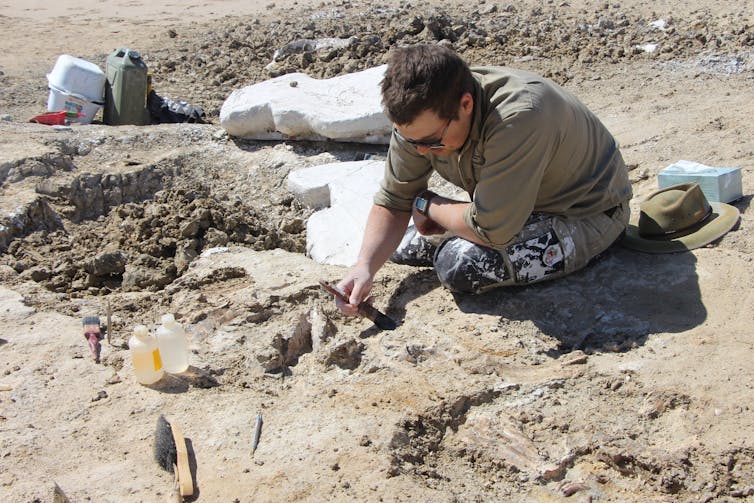
Palaeontology has come a long way in the past 200 years.
Records of long-extinct animals also survive in the rock art and oral traditions of First Nations peoples. These are increasingly being recognised as an important complement to traditional Eurocentric approaches.
How To Scan A Fossil
Different kinds of scanning technology are playing an increasing role in palaeontology. Computed tomography, or CT scanning, uses x-rays to create three-dimensional models of the internal and external features of dense objects.
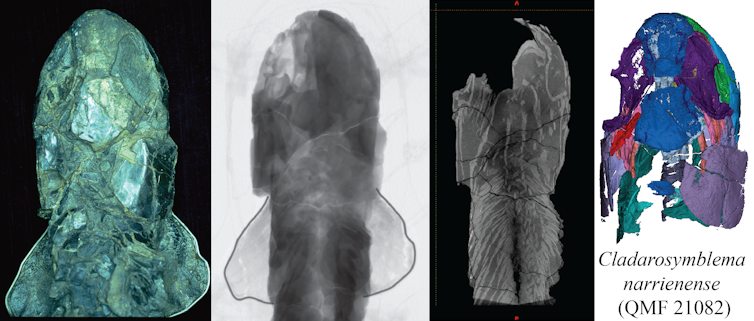
Other imaging methods include photogrammetry, or surface scanning using lasers or projected patterns of light. These methods capture the external three-dimensional shape of an object or site, sometimes with colour and textural detail. They also have the advantage of being more portable and can often be taken directly to the fossil.
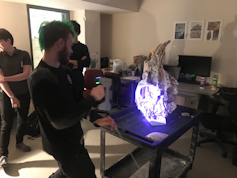
The most powerful scanning methods are the synchrotron and neutron imaging. A synchrotron works on the same principles as CT scanning, using radiation to look inside an object, but uses much stronger radiation. Neutron imaging uses neutrons instead of x-rays or other radiation, and it can be useful for particularly dense or large objects.
These advances in scanning technology are opening up whole new avenues for exploring, sharing and analysing Australia’s unique fossils. Now what to do with all our digital palaeontology data?
That’s where the Virtual Australian Museum of Palaeontology comes in.
About The Museum
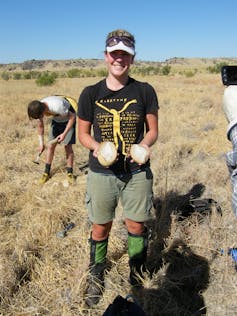
We are a group of researchers at Flinders University, working with the South Australian Museum, the Western Australian Museum, and the Museum and Art Gallery of the Northern Territory. Between us, we have spent many hours scanning, processing and uploading hundreds of three-dimensional virtual models.
Australia is geologically old with a rich fossil heritage. We are fortunate to have captured high-quality examples spanning nearly 600 million years of evolution on our continent.
We have scans of some of the earliest complex life from Ediacaran and Cambrian sites from over 500 million years ago. We have exquisite examples from the best ancient fish deposit in the world, and many amazing extinct megafauna not known from anywhere else.
Examples include the marsupial lion Thylacoleo, the giant wombat-like Diprotodon, and huge short-faced kangaroos such as Sthenurus.
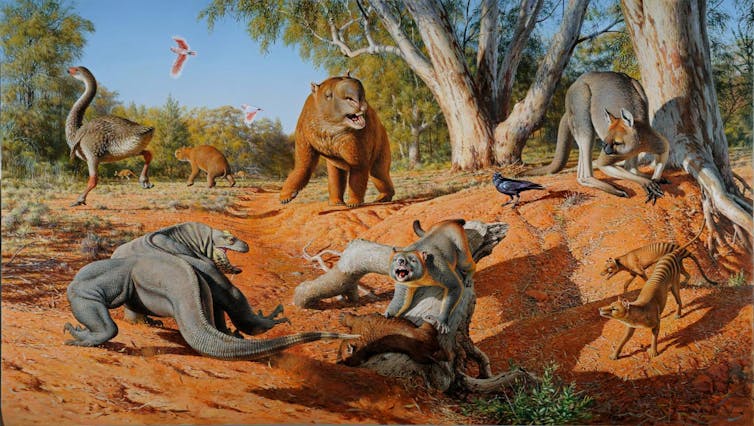
In the pilot phase of this project we have digitised more than 500 fossils across more than 30 genera. Some highlights include:
- one of the world’s most complete marsupial lion skeletons (almost every bone from the skull to the toe bones)
- one of the only known bones of a pterosaur (flying reptile) from South Australia
- scans of one of the oldest known sharks in the world
- fossil mammal footprints that are now known only from our digital data, as the original trackways have been destroyed.
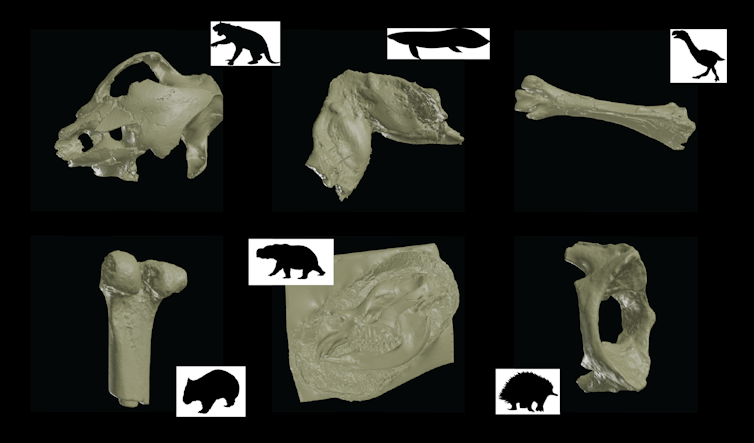
You can explore the VAMP website yourself. All you need to dig into a world of 3D fossil scans is a computer or a smartphone.![]()
Alice Clement, Research Associate in the College of Science and Engineering, Flinders University; Aaron Camens, Lecturer in Palaeontology, Flinders University, and Jacob van Zoelen, PhD Candidate, Flinders University
This article is republished from The Conversation under a Creative Commons license. Read the original article.
Picnic In The Park At Avalon Beach A Great Success
Picnic in the Park, Dunbar Park on Saturday morning, June 3rd 2023, hosted by Northern Beaches Council, was a great success - they sold 1,500 tickets.
The Show seen here was The Busy Izzy and Friends show. Peppa Pigs 'Taking Turns' live show was on next!
Photos: Cr. Miranda Korzy

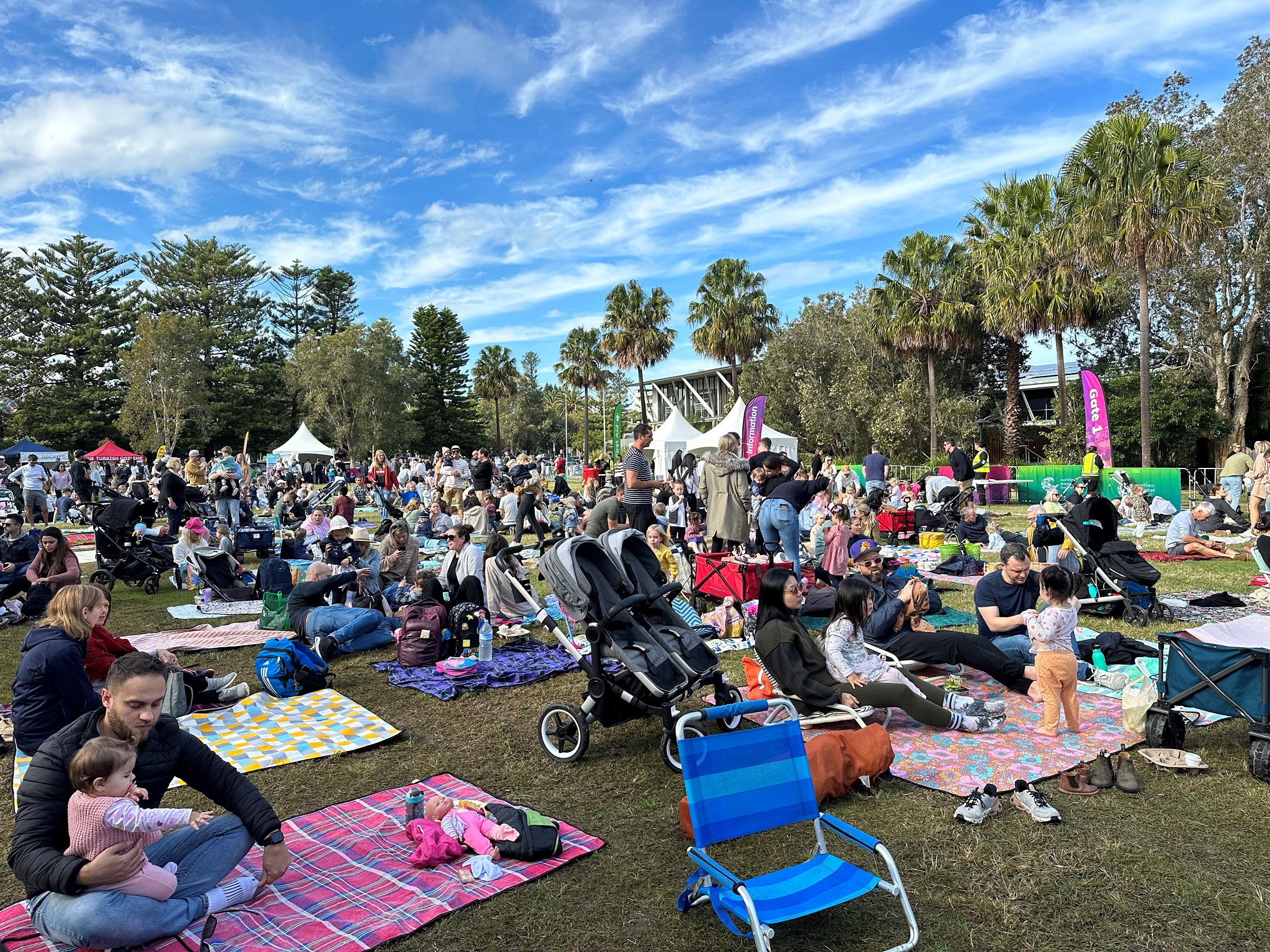
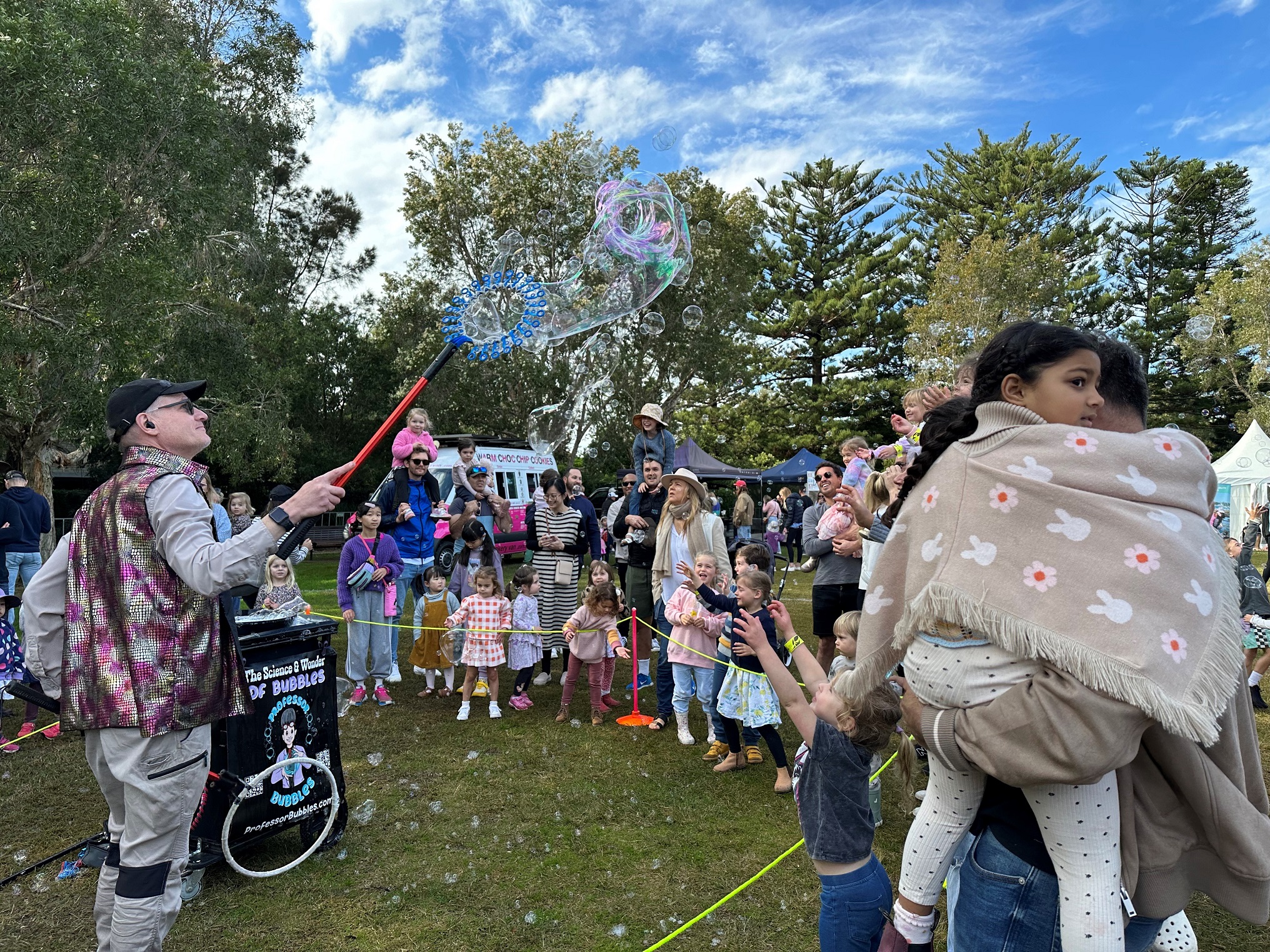

The STAEDTLER Secondary School Artists Of The Year Competition Is Back!
Open to all year 7 to 12 students, it’s a chance for all up and coming artists to share their work for the opportunity to win 1 of 11 prizes. Entries open on 16th May and close 20th June.
With the help of our panel of 3 talented judges, we are searching for the STAEDTLER Senior (years 10-12) and Junior (years 7-9) Artist of the Year 2023.
Both first place winners will receive a $1,000 VISA gift card!
For more information on prizes, please click here.
How to enter
Create
Using your favourite STAEDTLER products, show us your creativity and produce a masterpiece you’d like to submit.
You can get your inspiration from anywhere; a favourite place, a person, animal or school art project – we can’t wait to see your work of art!
Enter
Upload a photo of your artwork here and follow the prompts. If you are a Teacher, you can enter for your students and upload multiple entries at once. You will need to include artwork title, your name, school and year group.
Please ensure we can see the surface the artwork has been produced on eg. canvas or paper.
Note: digitally created or digitally enhanced artwork will not be accepted.
Win
Entries close on Tuesday 20th June and the judging and voting will then take pace.
You can vote for the People’s Choice Award from 21st -28th June – just come back to this page.
Winners will be announced 7th July.
Enter here: https://au.competitions.staedtler.com/

Dorothea Mackellar Poetry Awards 2023: Optional Theme This Year 'The Winding Road'
HOW TO ENTER: https://dorothea.com.au/how-to-enter/
PLEASE SEE HERE FOR A DETAILED PDF ON ENTRY INSTRUCTIONS FOR TEACHERS AND PARENTS.
ONLINE SUBMISSION
Primary school and secondary school entries can be submitted anytime during the competition period.
1. Teacher/parent register account online *If you have already created an account, skip to step 3 and log in*
2. Check email for link to verify account and create password
3. Log in to your account
4. Purchase tier of entries *Please note we’re only able to accept credit card payments at this time*
5. Enter student details and submit poem(s) (cut and paste or type in poem content direct to the webpage)
6. Repeat step 5 for every student/individual poem.
*PLEASE NOTE: If you’re registering as an individual student, put your HOME address in your personal details and not your SCHOOL’S address! The address you list is where your participation certificate will be posted!*
Please read our Conditions of Entry here before registering for the competition.
USEFUL TIPS
Have a read of the judges’ reports from the previous year. They contain some very helpful advice for teachers and parents alike!
It is recommended for schools to appoint a coordinator for the competition.
Only a teacher/parent can complete the registration form on behalf of the student/child.
Log-in details: username is the email address and a password of your choice.
Log-in details can be given to other teachers/students for poem submission in class/at home.
Log-in as many times as necessary during the competition period.
Teachers can view progress by monitoring the number and content of entries.
Individual entries are accepted if the school is not participating or a child is home schooled. Parent needs to complete the registration form with their contact details. Please indicate ‘individual entry’ under school name and home postal address under school address.
Invoice for the entry fee will be sent to the registered email address within 2 weeks.
‘Participation certificate only’ option available for schools where pre-selection of entries has been carried out. Poems under this option will not be sent to judges, students will still receive participation certificate for their efforts.
Please read the Conditions of Entry before entering. Entries accepted: March 1 to June 30, results announced during early September.
NEED SOME INSPIRATION?
Check out our learning resources or browse the previous years’ themes and winning entries.
For more information contact our Project Officer on 02 6742 1200 or email dorothea.mackellar@outlook.com.
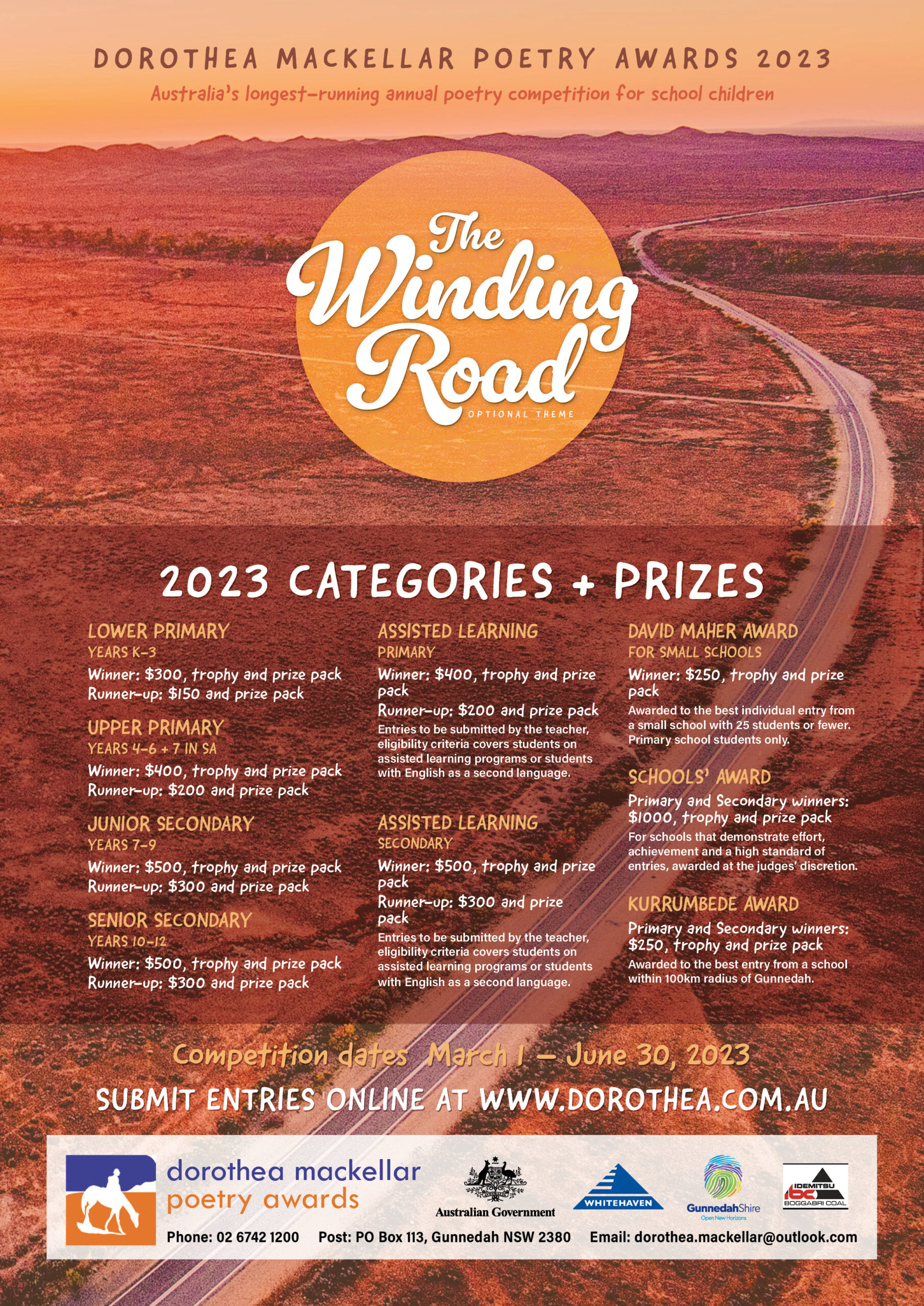
Curious Kids: where does our rubbish go?

Where does our rubbish go? – Tsubamé, aged nine, London, UK
Modern life causes lots of different types of rubbish. It comes from households, hospitals, schools, farming, shops, offices, industry and building projects. Just the rubbish from our homes can include food, packaging, plastics, metals, glass, paper, furniture, clothes, shoes, electronics, broken toys and garden wastes.
We produce billions of tonnes of rubbish every year, and we need to manage it carefully to protect human health and our environment. Waste is managed in many different ways across our planet.

Curious Kids is a series by The Conversation that gives children the chance to have their questions about the world answered by experts. If you have a question you’d like an expert to answer, send it to curiouskids@theconversation.com and make sure you include the asker’s first name, age and town or city. We won’t be able to answer every question, but we’ll do our very best.
A way of thinking about how we get rid of our rubbish is called the waste hierarchy. It puts the different ways we deal with waste in order of preference, from the worst ways – such as burning rubbish – at the bottom of the hierarchy, to the best ways at the top.
At The Bottom
The bottom of the hierarchy is waste disposal. This means getting rid of rubbish without trying to use it or turn it in to something else.

One way of doing this is to put rubbish in an open dumpsite. This is land where people tip solid or liquid waste with no treatment or pollution control. Dumpsites like this take 40% of the world’s rubbish. But open dumpsites have bad impacts on the environment. They produce gases that lead to climate change, and they can make people ill. There is a plan to close all open dumpsites.
Another way is to use landfill – putting rubbish in a hole or heap that has been designed to safely hold rubbish. Landfill sites are carefully built to stop liquid pollutants and gases escaping. Landfill gas can be very dangerous. When a landfill is full, it is safely covered with soil and can be used to make parks or sports pitches.
You may be surprised to know that we used to dump rubbish in our oceans. This is now banned, but lots of plastic rubbish still gets into our oceans, killing marine birds and animals.
Another way to get rid of rubbish is to burn it, which can produce energy. People worry about burning rubbish because incinerators may release nasty harmful pollutants into the air. In some places, the gases are cleaned before they are released.
Composting is another way of getting something useful out of rubbish. It turns waste food into compost, which we can use in gardens and on farms to improve the soil.
In The Middle
In the middle of the hierarchy is recycling. This means collecting materials in rubbish, such as plastic, paper, metal or glass, and using them to make new products.
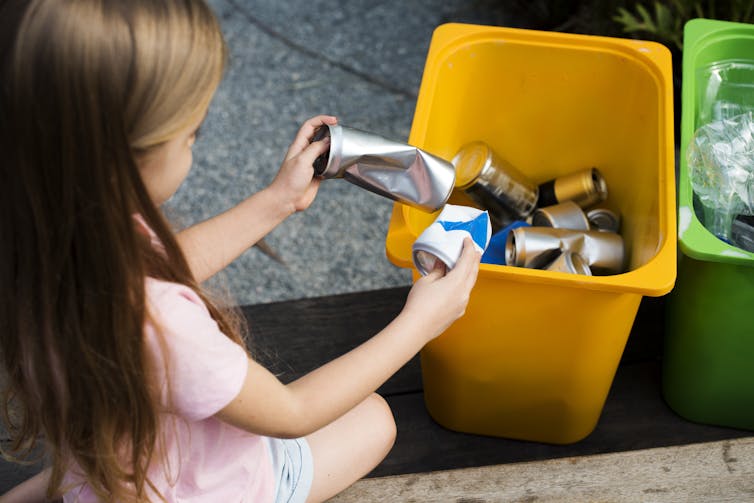
Rubbish that can be recycled is collected from our homes in special boxes or wheeled bins. It is then transported to a recycling centre where it is sorted into the various materials. The next steps depend on what is being recycled.
For example, glass is recycled by melting the jars and bottles being recycled. The melted glass can then be used to make new glass objects. Paper cannot be melted and so it is broken into smaller pieces. It is then mixed with water, and this mix is used to make new sheets of paper.
The Best Approach
The best ways to deal with rubbish are reuse and prevention.
Reuse means using something again instead of throwing it away. For instance, instead of putting a jumper you don’t like in the bin, you could give it to a friend or take it to a charity shop.
Reuse was very popular when people didn’t have much money, and it is becoming popular again to save money and improve our environment. There is an increasing interest in activities such as “swap shops” where people swap items they don’t want for items they would like. Lots of people use the internet to donate things to charity or buy and sell secondhand items.
Waste prevention means doing things to stop rubbish being created in the first place – such as using cutlery you can wash and use again instead of a disposable plastic fork or spoon.
So there are lots of ways to manage rubbish – and we need to focus on waste prevention, reuse and recycling to protect and improve the environment.![]()
Ian Williams, Professor of Applied Environmental Science, University of Southampton
This article is republished from The Conversation under a Creative Commons license. Read the original article.
Pinpointing The Cause Of A Mysterious Heart Disease Affecting Women Under 50
Melbourne earthquake 2023: are they becoming more common? A seismology expert explains
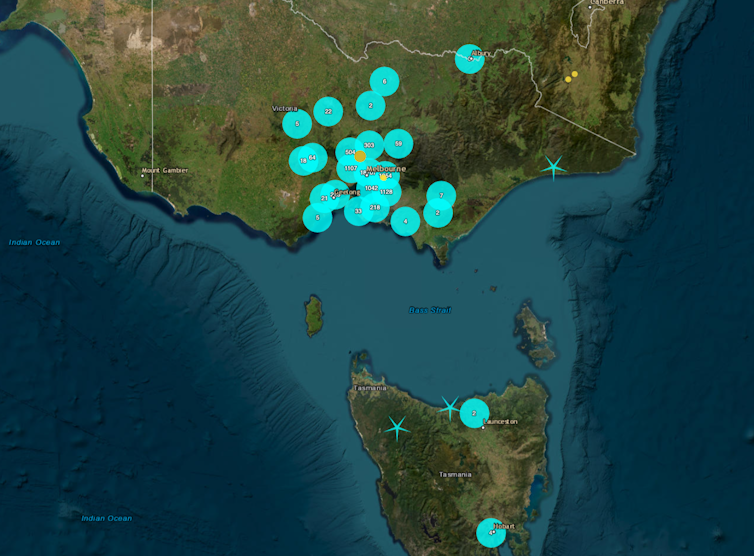
Last night at 11:41pm local time, the greater Melbourne region was shaken by a magnitude 4.0 earthquake – as calculated by the Seismology Research Centre – centred near Sunbury, approximately 30km north of the CBD.
Geoscience Australia have so far received more than 25,000 reports from people who felt this earthquake, some as far as Hobart, which is 620km away from the epicentre.
In the Melbourne region, the earthquake reportedly produced shaking which lasted roughly 10–20 seconds, according to witness reports on social media. It was followed two minutes later by a magnitude 2.8 aftershock, which was reported by some people in the epicentral region between Sunbury and Cragieburn.
Are Earthquakes Becoming More Common In Melbourne?
In September 2021, a magnitude 5.8 earthquake rattled Melbourne, its epicentre being at Woods Point to the east of the city. This earthquake was felt as far away as Brisbane and Adelaide.
Last night’s earthquake follows a magnitude 2.5 earthquake near Ferntree Gully, to the east of Melbourne, two weeks ago on May 16. Another one with a magnitude of 2.0 was felt by about 1,300 people in roughly the same region on May 22, according to Geoscience Australia.

Although this means some Melbournians have experienced two or even three earthquakes in the last two weeks, earthquakes are not becoming more common in Melbourne. It is not unexpected for there to be 10–12 felt earthquakes a year somewhere in the greater Melbourne region – these need not occur at regular intervals.
Earthquakes in Australia occur as a result of stresses at our surrounding tectonic plate boundaries – where different plates collide, grind past one another, or are being forced apart. These stresses make their way towards the middle of the plate, too.
In southeast Australia, the forces at the Pacific-Australian plate boundary to the east of us – the same plate boundary which passes through Aotearoa New Zealand – produce a buildup of strain. This is eventually released in the form of earthquake ruptures at weak zones or “faults” in the crust.
As a result of all this, earthquakes occur in the greater Melbourne region about once a month. Many of these – typically more than three quarters – are too small to be felt.
What Determines If You Feel An Earthquake?
Generally speaking, a larger magnitude earthquake is more likely to be felt than those of smaller magnitudes. But other factors play a part, too.
Earthquake depth affects how strong the associated ground shaking is – the shallower the earthquake, the stronger the shaking. Last night’s magnitude 4.0 near Sunbury was a relatively shallow earthquake at just 3km depth. Because shallow earthquakes produce stronger ground-shaking, they’re also more likely to cause damage. Minor damage, such as cracked plaster and fallen pictures, were reported as a result of last night’s earthquake.
The closer you are to the earthquake epicentre, the more likely you are to feel it. You’re also more likely to experience an earthquake if you’re stationary, rather than jogging or riding a bike or driving. Some people reportedly slept through last night’s earthquake.
The earthquakes reported as felt by those near the epicentre are mostly ones above a magnitude 2.0–2.5, although smaller events can be felt especially at shallow depths, and in populated areas. If an earthquake happens in a remote region, there are often no people to report having felt it.
Booms And Aftershocks
Very small, shallow earthquakes sometimes do not produce any shaking closest to the epicentre, but instead produce a sound akin to an explosion – a short, sharp, loud “boom”. This occurs when the seismic waves reach the surface and transform into sound waves.
This is different to the rumbling sound which is more commonly heard, and is often described as a train approaching. It’s the result of the shaking of the built environment as the seismic wave passes through.
In addition to the magnitude 2.8 aftershock from last night’s earthquake, there have been additional aftershocks less than magnitude 1.0. These are still being examined by seismologists. There may still be aftershocks large enough to be felt in the coming days, weeks, and months, though the likelihood of these diminishes with time.
Occasionally, a larger earthquake may occur, in which case the magnitude 4.0 will be considered a foreshock.![]()
Dee Ninis, Earthquake Geologist, Monash University
This article is republished from The Conversation under a Creative Commons license. Read the original article.
What are the long-term effects of quitting social media? Almost nobody can log off long enough to find out

Being on social media has become synonymous with living in the 21st century. Year after year, we see new platforms and smarter algorithms roping us into highly addictive online worlds.
Now, a growing number of people have noticed this trend and are actively making an effort to resist it.
Anecdotally, a case can be made for quitting social media, and there are myriad reasons why someone might want to. But is there evidence that doing so is good for you in the long term?
Drivers For Quitting
Although there are too many social media platforms to name, most people tend to think of the “big five”: Facebook, Twitter, Instagram, YouTube and TikTok.
Research has found people have various reasons for quitting one or more of these apps. Many quit over concerns about negative impacts on their mental and physical health. For example, studies have shown adolescent girls in particular can experience negative body image as a result of viewing manipulated selfies on Instagram.
People also choose to quit due to disliking ads, feeling like they’re wasting time, or if they’re worried about their privacy. The question then is: does quitting social media resolve these concerns?
Mixed Research Outcomes
It’s difficult to determine whether there are clear and lasting benefits to quitting social media – and a look at the research explains why.
One 2020 study found people who had quit social media saw improvements in their close relationships, and were pleased to be free of comparison with others. But some also said they missed the informational and entertainment aspects of it.
In a 2018 study, researchers assessed the psychological state of 143 American undergraduates before randomly assigning one group a daily ten-minute limit for Facebook, Instagram and Snapchat, per platform. Three weeks later, those who limited their social media use showed significantly lower levels of loneliness and depression. However, there was no significant effect on anxiety, self-esteem or wellbeing.
And in one 2019 study with 78 participants, half were asked to take a one-week break from Facebook and Instagram. To the researchers’ surprise, the users in this group who were generally active on social media experienced less positive psychological effects than those in the control group.
With research findings painting several different pictures, it’s safe to say our relationship with social media – and how it affects us – is very complex.
Research Constraints
There appear to be no published studies that have assessed the long-term impacts of permanently quitting social media. This is probably because it’s difficult to find participants who will agree to be randomly assigned the task of dropping social media forever.
One important consideration is that a percentage of individuals who quit social media will eventually go back. Reasons for returning include feeling left out, fearing loss of connections, wanting to regain access to interesting or useful information, feeling social pressure to rejoin, or simply feeling that quitting wasn’t the right choice.
Even if researchers do find a large enough group of people willing to quit social media for good, conducting long-term follow-ups would be highly resource-intensive. Beyond that, it would be difficult to figure out how much of a participant’s increase (or decrease) in life satisfaction is due to quitting social media, and not other factors.
As such, there’s currently no evidence that quitting social media comes with concrete long-term benefits. And in the short term, results are mixed.
To Quit, Or Not To Quit?
However, that doesn’t mean quitting (for a short or long period) wouldn’t be beneficial for some people. It’s likely that any potential benefits will depend on the individual doing the quitting, and why they’re doing it.
For instance, consensus that does emerge from the research is that the way you use social media plays a significant role in how negative or positive your experience is. By using social media mindfully, users can minimise potential harms while retaining the benefits.
For some, it may only be one platform causing unease. If you strongly dislike Instagram’s tendency to be hyper-focused on people’s private lives, then you could simply stop using Instagram.
Another technique is to curate your social media feeds by engaging only with content you find useful and positive. For instance, many young women take steps to avoid seeing perfect bodies all day on their social media.
If you’re still wondering whether quitting might be good for you, the simplest way to find out is to experiment and do it.
Take a break from one or more types of social media. After some time ask yourself whether the benefits seem worth it to you. If the answer is “yes”, make the break permanent.

The Conversation is commissioning articles by academics across the world who are researching how society is being shaped by our digital interactions with each other. Read more here![]()
John Malouff, Associate Professor, School of Behavioural, Cognitive and Social Sciences, University of New England
This article is republished from The Conversation under a Creative Commons license. Read the original article.
The highly secretive Five Eyes alliance has disrupted a China-backed hacker group – in an unusually public manner

This week the Five Eyes alliance – an intelligence alliance between Australia, the United Kingdom, Canada, New Zealand and the United States – announced its investigation into a China-backed threat targeting US infrastructure.
Using stealth techniques, the attacker – referred to as “Volt Typhoon” – exploited existing resources in compromised networks in a technique called “living off the land”.
Microsoft made a concurrent announcement, stating the attackers’ targeting of Guam was telling of China’s plans to potentially disrupt critical communications infrastructure between the US and Asia region in the future.
This comes hot on the heels of news in April of a North Korean supply chain attack on Asia-Pacific telecommunications provider 3CX. In this case, hackers gained access to an employee’s computer using a compromised desktop app for Windows and a compromised signed software installation package.
The Volt Typhoon announcement has led to a rare admission by the US National Security Agency that Australia and other Five Eyes partners are engaged in a targeted search and detection scheme to uncover China’s clandestine cyber operations.
Such public admissions from the Five Eyes alliance are few and far between. Behind the curtain, however, this network is persistently engaged in trying to take down foreign adversaries. And it’s no easy feat.
Let’s take a look at the events leading up to Volt Typhoon – and more broadly at how this secretive transnational alliance operates.
Uncovering Volt Typhoon
Volt Typhoon is an “advanced persistent threat group” that has been active since at least mid-2021. It’s believed to be sponsored by the Chinese government and is targeting critical infrastructure organisations in the US.
The group has focused much of its efforts on Guam. Located in the Western Pacific, this US island territory is home to a significant and growing US military presence, including the air force, a contingent of the marines, and the US navy’s nuclear-capable submarines.
It’s likely the Volt Typhoon attackers intended to gain access to networks connected to US critical infrastructure to disrupt communications, command and control systems, and maintain a persistent presence on the networks. The latter tactic would allow China to influence operations during a potential conflict in the South China Sea.
Australia wasn’t directly impacted by Volt Typhoon, according to official statements. Nevertheless, it would be a primary target for similar operations in the event of conflict.
As for how Volt Typhoon was caught, this hasn’t been disclosed. But Microsoft documents highlight previous observations of the threat actor attempting to dump credentials and stolen data from the victim organisation. It’s likely this led to the discovery of compromised networks and devices.
Living-Off-The-Land
The hackers initially gained access to networks through internet-facing Fortinet FortiGuard devices, such as routers. Once inside, they employed a technique called “living-off-the-land”.
This is when attackers rely on using the resources already contained within the exploited system, rather than bringing in external tools. For example, they will typically use applications such as PowerShell (a Microsoft management program) and Windows Management Instrumentation to access data and network functions.
By using internal resources, attackers can bypass safeguards that alert organisations to unauthorised access to their networks. Since no malicious software is used, they appear as a legitimate user. As such, living-off-the-land allows for lateral movement within the network, and provides opportunity for a persistent, long-term attack.
The simultaneous announcements from the Five Eyes partners points to the seriousness of the Volt Typhoon compromise. It will likely serve as a warning to other nations in the Asia-Pacific region.
Who Are The Five Eyes?
Formed in 1955, the Five Eyes alliance is an intelligence-sharing partnership comprising Australia, Canada, New Zealand, the UK and the US.
The alliance was formed after World War II to counter the potential influence of the Soviet Union. It has a specific focus on signals intelligence. This involves intercepting and analysing signals such as radio, satellite and internet communications.
The members share information and access to their respective signals intelligence agencies, and collaborate to collect and analyse vast amounts of global communications data. A Five Eyes operation might also include intelligence provided by non-member nations and the private sector.
Recently, the member countries expressed concern about China’s de facto military control over the South China Sea, its suppression of democracy in Hong Kong, and threatening moves towards Taiwan. The latest public announcement of China’s cyber operations no doubt serves as a warning that Western nations are paying strict attention to their critical infrastructure – and can respond to China’s digital aggression.
In 2019, Australia was targeted by Chinese state-backed threat actors gaining unauthorised access to Parliament House’s computer network. Indeed, there is evidence that China is engaged in a concerted effort to target Australia’s public and private networks.
The Five Eyes alliance may well be one of the only deterrents we have against long-term, persistent attacks against our critical infrastructure.
![]()
Dennis B. Desmond, Lecturer, Cyberintelligence and Cybercrime Investigations, University of the Sunshine Coast
This article is republished from The Conversation under a Creative Commons license. Read the original article.
The FDA finally approved Elon Musk’s Neuralink chip for human trials. Have all the concerns been addressed?

Since its founding in 2016, Elon Musk’s neurotechnology company Neuralink has had the ambitious mission to build a next-generation brain implant with at least 100 times more brain connections than devices currently approved by the US Food and Drug Administration (FDA).
The company has now reached a significant milestone, having received FDA approval to begin human trials. So what were the issues keeping the technology in the pre-clinical trial phase for as long as it was? And have these concerns been addressed?
What Is Neuralink?
Neuralink is making a Class III medical device known as a brain-computer interface (BCI). The device connects the brain to an external computer via a Bluetooth signal, enabling continuous communication back and forth.
The device itself is a coin-sized unit called a Link. It’s implanted within a small disk-shaped cutout in the skull using a precision surgical robot. The robot splices a thousand tiny threads from the Link to certain neurons in the brain. Each thread is about a quarter the diameter of a human hair.
Potential Benefits
If Neuralink’s BCI can be made to work safely on humans, I believe the potential benefits would make the effort worthwhile.
The company says the device could enable precise control of prosthetic limbs, giving amputees natural motor skills. It could revolutionise treatment for conditions such as Parkinson’s disease, epilepsy and spinal cord injuries. It also shows some promise for potential treatment of obesity, autism, depression, schizophrenia and tinnitus.
Several other neurotechnology companies and researchers have already developed BCI technologies that have helped people with limited mobility regain movement and complete daily tasks.
BCIs have also been used to help older people train their motor and cognitive abilities to moderate the worst effects of ageing.
The Long Road To FDA Approval For Human Trials
In February 2021, Musk said Neuralink was working with the FDA to secure permission to start initial human trials later that year. But human trials didn’t commence in 2021.
Then, in March 2022, Neuralink made a further application to the FDA to establish its readiness to begin humans trials.
One year and three months later, on May 25 2023, Neuralink finally received FDA approval for its first human clinical trial. Given how hard Neuralink has pushed for permission to begin, we can assume it will begin very soon.
The approval has come less than six months after the US Office of the Inspector General launched an investigation into Neuralink over potential animal welfare violations.
What Were The FDA’s Concerns?
The FDA had quite a list of issues that needed to be resolved before human trials could commence, as was reported in a Reuters investigation, which claimed to have spoken to several Neuralink sources.
Most of these concerns called for Neuralink to perform thorough and repeated testing and data collection over an extended period. This was likely a deciding factor in why the approval process to begin human testing took as long as it did.
It can’t be said with certainty that all of the issues have been fully resolved. But considering the rigour of the FDA’s approval process, we might conclude they have at least been resolved to a point of satisfaction for the FDA.
Safe surgery
A precision robot known as Implant/r1 performs the surgical procedure to implant the Neuralink BCI. This robot surgeon had to be put through its paces to gather evidence that it could reliably and safely implant and remove the Neuralink BCI without damaging surrounding brain tissue, or creating the risk of infection, bleeding, inflammation or scarring.
Harmful side effects
Once implanted, the Neuralink BCI must function as intended. It must not unintentionally influence other brain functions, or cause any unwanted side effects such as seizures, headaches, mood changes, or cognitive impairment.
Safe power supply
In particular, overheating lithium-ion batteries can pose great risk to BCI users. When defective, such batteries have historically been known to overheat. They can even explode if the insulation between the cathode and anode (the metal electrode components) breaks down, resulting in a short circuit.
The longevity of the battery was also taken into account, as well as how easy it would be to safely replace from its position under the skin behind the ear. Since the FDA’s previous rejection, extensive tests have been conducted on the specially designed Neuralink battery to evaluate its performance, durability and bio-compatibility.
Wire migration
Then there is the risk of wire migration. The Link consists of a disk-shaped chip with very thin wire electrodes that connect to neurons in the brain.
Connecting these wires by means of a surgical robot is a major challenge in itself. But there is also the possibility the electrodes could move elsewhere in the brain over time due to natural movement, inflammation, or scar tissue formation. This would likely affect the proper functioning of the device, and could cause infection or damage to the brain tissue.
Neuralink had to conduct extensive animal studies and provide evidence its wires did not migrate significantly over time, or cause any adverse effects on the brain. The company also had to show it had a method for tracking and adjusting the position of the wires if this became necessary.
Implant removal
Another challenge Neuralink faced was that of safe implant removal. The FDA wanted to know how easy or difficult it would be to remove the device from the brain if this became necessary.
Data privacy and security
Strong safeguards are required to prevent data collected by the Link from being hacked, manipulated or otherwise misused. Neuralink would have had to assure the FDA it could avoid nightmare scenarios of hackers rendering its Link users vulnerable to interference, as well as guaranteeing the privacy of brain-wave data generated by the device.
The Way Ahead
Critics acknowledge the potential benefits of Neuralink, but caution the company to hasten slowly. Adequately addressing these issues will take time – and corners must not be cut when arriving at a solution.
Beyond the Link’s potential medical uses, Musk has made many radical claims regarding his future vision for the technology. He has claimed Neuralink could augment human intelligence by creating an on-demand connection with artificial intelligence systems – allowing, for example, improved cognition through enhanced memory, and improved learning and problem-solving skills.
He has even gone as far as to say the Link could allow high-bandwidth telepathic communication between two or more people connected via a mediating computer. Common sense would suggest these claims be put in the “I’ll believe it when I see it” category.
The situation with Neuralink has clear parallels with current advancements in AI (and the growing need to regulate it). As exciting as these technologies are, they must not be released to the public until proven to be safe. This can only be achieved by exhaustive testing.![]()
David Tuffley, Senior Lecturer in Applied Ethics & CyberSecurity, Griffith University
This article is republished from The Conversation under a Creative Commons license. Read the original article.
Revenge, excitement, or profit: why do people commit arson?
Xanthe Mallett, University of Newcastle and Joel Robert McGregor, Swinburne University of TechnologyThe huge blaze that struck Randle Street in central Sydney last week is now the subject of an arson investigation, authorities have confirmed.
Many details remain unclear, including the safety and whereabouts of some of the people who were reportedly sleeping rough in the building, as well as the nature of any criminal charges that may arise.
Right now there’s also a fire burning on a southern Great Barrier Reef island, threatening a sensitive marine site, which local rangers are treating as suspicious.
While arson is yet to be confirmed in either of these specific cases, it’s timely to look at the issue of arson more generally.
Aside from the personal and environmental implications, the financial burden of arson is huge. Recent data are difficult to obtain, although it was estimated that the total cost of arson in Australia was A$2.3 billion in 2011, and the annual figure is likely to have increased since then.
There’s a lack of scientific research attempting to understand the arsonist, perhaps because the “typical arsonist” doesn’t exist. Or maybe it’s because so few arsons are solved, and the rate of successful convictions remains low.
However, the research that has been done suggests there are six main types of arsonist.
6 Types Of Arsonist
Arson, as defined by the Australian Institute of Criminology, is the act of “intentionally and maliciously destroying or damaging property through the use of fire”.
For a fire to be classified as arson there must be intent – the intention to cause harm or damage.
Arson can also be the primary or secondary motive – is setting the fire the main purpose, or is the fire being used to disguise another activity?
Here are the main six underlying reasons why someone might commit arson:
1. The ‘for profit’ arsonist
There are many ways someone can profit from arson. This includes extortion, or destroying a property to clear a piece of land. But most commonly these crimes are attempts at insurance fraud.
There are different types of property insurance fraud, including residential, commercial and vehicular. Residential fraud is committed by the homeowner or tenant; commercial fraud is committed by an owner to destroy company statements or claim on insurance; and vehicular fraud may occur when someone can’t afford their repayments.
These are largely one-off crimes and are very focused, and the offender is easier to catch than with other types of arson because they have a direct link with the damaged property or its owner.
2. Pyromaniacs
These perpetrators light fires for thrills and attention. Their fires range from bins to occupied buildings, and the size and risk associated with the fires may increase over time as the arsonist needs more excitement with each event.
This type of offender is often voyeuristic, and may wait for emergency services to attend, sometimes even calling them themselves, as they want to be present at the scene. They may video or photograph the fire and the first responders.
As a result, for investigators it’s important to capture images of the crowd to see who was watching.
This category includes first responders who set fires in order to be a “hero” in attendance, seeking praise and recognition for their bravery.
For example, a New South Wales volunteer firefighter was charged in January 2021 for allegedly starting more than 30 fires during that summer.
3. Crime concealment
For these offenders, the arson is secondary to the concealment of another serious crime, such as murder or theft.
Fire is a very successful means of destroying many forms of evidence, such as fingerprints that may have been left at a scene or clothing worn during the crime.
4. The revenge arsonist
These offenders are emotionally driven, and set fires out of anger or hatred, or for revenge for a real or perceived wrong. The need for retaliation could be based in a personal slight – such as an affair, or having been dismissed from a job.
Targets vary from individuals to institutions. And because of the emotional state of the offender, these crimes are usually disorganised and use unsophisticated methods of starting the fire, meaning they leave more evidence behind than some other types.
5. Extremist motivations
Extremist arsonists are driven by religious, political or social agendas.
There are two types of extremist arsonist, the first being those reacting to a civil disturbance, such as the death of a person in custody. Activities may include vandalism and looting, and the purpose may be to draw attention to a perceived injustice.
For example, 36-year-old Jose A. Felan Jr was sentenced to 6.5 years in prison in the United States after he set fires at a school and two shops, during the riots that followed the police killing of George Floyd during an arrest in May 2020.
The second type are terrorist arsonists, known as pyro-terrorism, which is defined as “the use of incendiary attacks to intimidate or coerce a government or civilian population”. These offenders may use arson as one of a range of measures, and work alone or in cells.
Because their crimes are premeditated with targets selected carefully to have the most social, economic or political impact, these offenders are often highly organised, and may use advanced incendiary devices. The purpose is to cause mass fear, beyond the actual target itself.
6. Vandalism
Vandal arsonists are typically juveniles, who set fire to bins, abandoned vehicles or empty buildings, and may do so to cover up other crimes such as theft. Often an additional factor in the starting of the fire is peer pressure or gang initiation, as these arsonists often act in groups.
For these offenders, arson can be what criminologists call a “gateway crime” – a crime that may lead to more severe criminal activity.
But if such offenders are given suitable support, rehabilitation can be highly successful to prevent them becoming serious, repeat offenders.
Although these are the main motives for arson, each does not act in a vacuum, and more than one may jointly contribute to the arsonist’s motivations. For example, someone may be murdered out of revenge, and then the offender sets a fire to conceal that crime or destroy evidence.
Arson is highly complex crime, with a wide range of social, psychological and environmental influences. More work needs to be done to understand the arsonist and their motivations, and how they can be identified, caught, convicted and hopefully rehabilitated.![]()
Xanthe Mallett, Forensic Criminologist, University of Newcastle and Joel Robert McGregor, Lecturer in Criminology, Swinburne University of Technology
This article is republished from The Conversation under a Creative Commons license. Read the original article.
WA Premier Mark McGowan quits in shock announcement, declaring he is ‘exhausted’
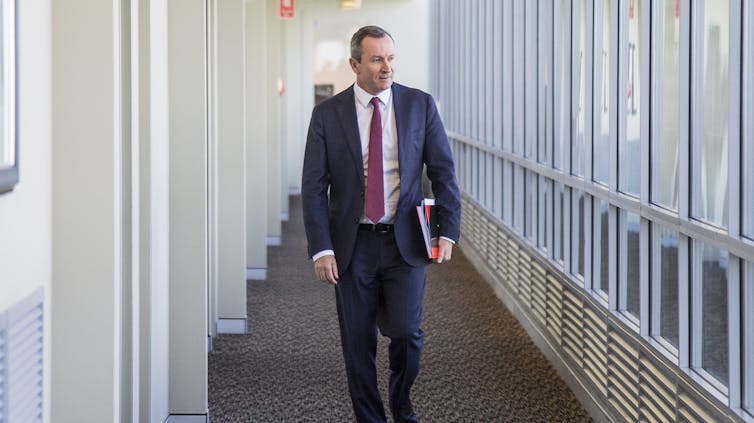
Western Australian Premier Mark McGowan has announced he is quitting as premier and leaving parliament.
In a shock announcement, McGowan told a news conference in Perth on Monday he had “loved the role.[…] But the truth is I’m tired, extremely tired – in fact I’m exhausted. The role of political leadership doesn’t stop – it’s relentless.”
The 55-year-old said he was confident WA Labor could win the 2025 state election, but he did not have “the energy or drive” to fight the campaign.
He has been premier since 2017, and was re-elected in 2021 in a stunning victory that almost wiped out the parliamentary WA Liberal party.
McGowan, whose popularity reached stratospheric levels – earlier this year it was at 88% – shot to national prominence during the pandemic when he shut the WA border, avoiding prolonged lockdowns and keeping the state’s economy strong.
His stance on the border was vindicated when the High Court rejected a challenge brought by businessman Clive Palmer, initially supported by the Morrison government.
The pandemic, and McGowan’s handling of it, brought out the historical separatist sentiments among Western Australians.
McGowan’s popularity was a factor in federal Labor picking up several seats at last year’s election, and his departure is an indirect blow for Prime Minister Anthony Albanese.
McGowan said he had been considering his decision to leave parliament for some time but had needed to bring down the state budget, which had a strong surplus. McGowan is treasurer as well as premier.
He listed the government’s achievements, saying the state has “the strongest economy in Australia” and one of the strongest in the world. He noted the very good deal WA extracted from the Morrison government to get a bigger share of the nation’s goods and services tax.
McGowan said this would be his final week in his role.
He has been in parliament 26 and a half years and has led Labor, in opposition and government, for 11 and a half of those.
McGowan said he wasn’t naturally a combative person but every day he had to engage in argument, debate and confrontation and “I’m kind of tired of it”.
The COVID experience, and all the associated pressures, “drained me a lot,” he said.
He wanted to be seen as “an achiever”. “I just wanted to leave the state better than I found it, and do good things along the way […] improve the place in the long term.”
McGowan said he did not have any plans for what he would do “but I don’t want to stop work”.
He said he had wanted to give his successor, whoever it is, time to cement themselves in the role.
McGowan served in the navy before going into politics. He originally came from New South Wales but has since become known for his strong affinity for Rockingham, the often-derided city where he lives and which he has represented in parliament since 1996.
Albanese said in a statement: “Mark leaves office as he led, on his own terms and as his own man. He has been a great Premier of his proud state, an extraordinary leader for WA Labor and a trusted friend.
"Above all, Mark will be remembered for seeing the people of Western Australia safely through one of the most challenging crises in our nation’s history. In unprecedented times, Mark always held to his convictions and always sought to do the right thing by his state.”![]()
Michelle Grattan, Professorial Fellow, University of Canberra
This article is republished from The Conversation under a Creative Commons license. Read the original article.
4,000-Year-Old Plague DNA Found: The Oldest Cases To Date In Britain
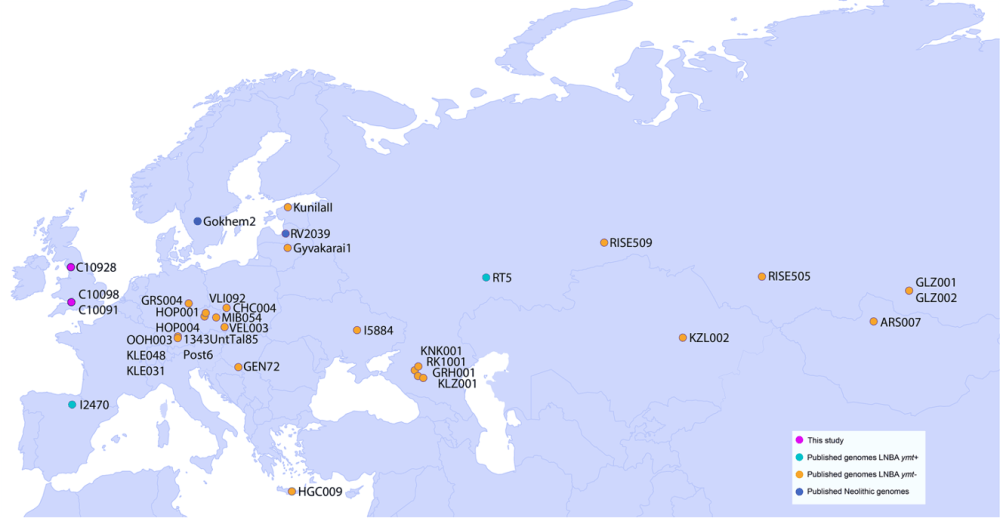
Astronomers Discover Last Three Planets Kepler Telescope Observed Before Going Dark
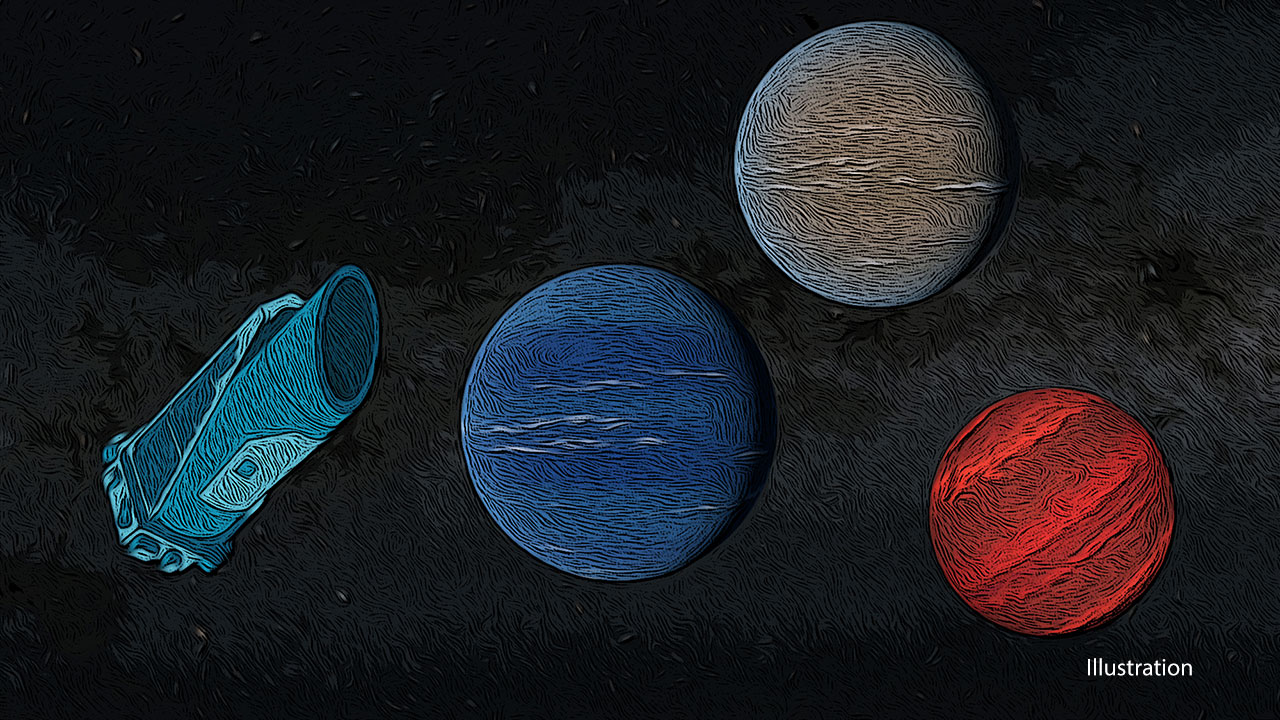
Plants Remove Cancer Causing Toxins From Air
Fastest Industry Standard Optical Fibre

Disclaimer: These articles are not intended to provide medical advice, diagnosis or treatment. Views expressed here do not necessarily reflect those of Pittwater Online News or its staff.